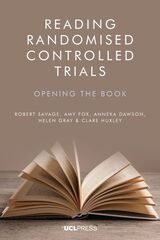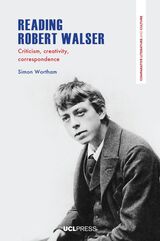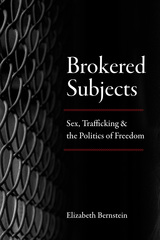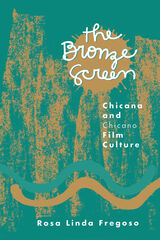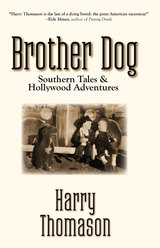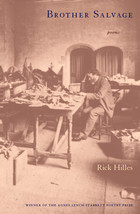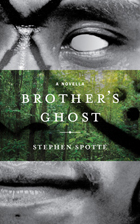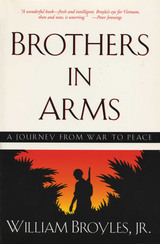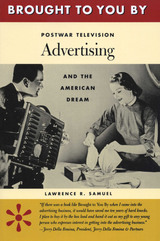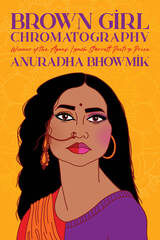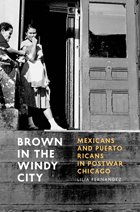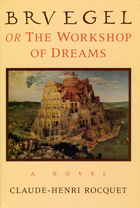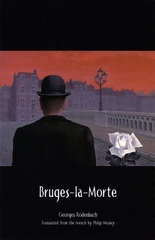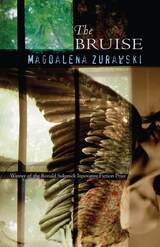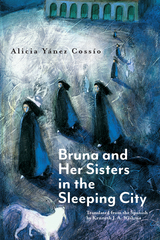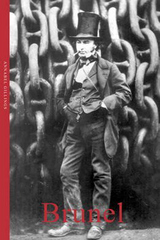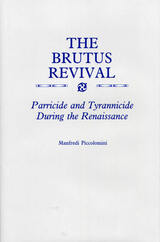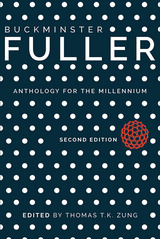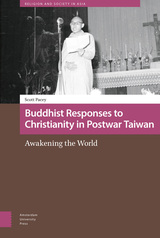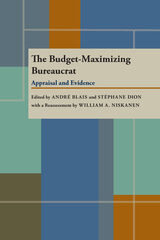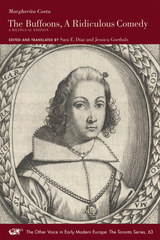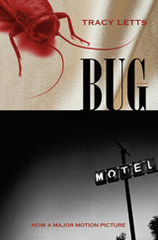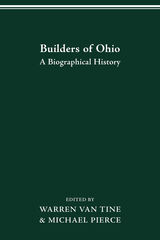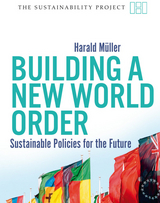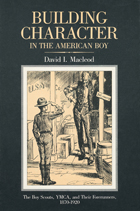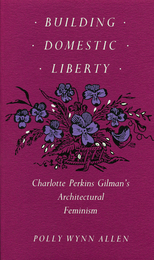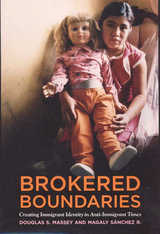 Brokered Boundaries: Immigrant Identity in Anti-Immigrant Times
Douglas S. Massey
Russell Sage Foundation, 2010 Anti-immigrant sentiment reached a fever pitch after 9/11, but its origins go back much further. Public rhetoric aimed at exposing a so-called invasion of Latino immigrants has been gaining ground for more than three decades—and fueling increasingly restrictive federal immigration policy. Accompanied by a flagging U.S. economy—record-level joblessness, bankruptcy, and income inequality—as well as waning consumer confidence, these conditions signaled one of the most hostile environments for immigrants in recent memory. In Brokered Boundaries, Douglas Massey and Magaly Sánchez untangle the complex political, social, and economic conditions underlying the rise of xenophobia in U.S. society. The book draws on in-depth interviews with Latin American immigrants in metropolitan New York and Philadelphia and—in their own words and images—reveals what life is like for immigrants attempting to integrate in anti-immigrant times. What do the social categories "Latino" and "American" actually mean to today's immigrants? Brokered Boundaries analyzes how first- and second-generation immigrants from Central and South America and the Caribbean navigate these categories and their associated meanings as they make their way through U.S. society. Massey and Sánchez argue that the mythos of immigration, in which newcomers gradually shed their respective languages, beliefs, and cultural practices in favor of a distinctly American way of life, is, in reality, a process of negotiation between new arrivals and native-born citizens. Natives control interactions with outsiders by creating institutional, social, psychological, and spatial mechanisms that delimit immigrants' access to material resources and even social status. Immigrants construct identities based on how they perceive and respond to these social boundaries. The authors make clear that today's Latino immigrants are brokering boundaries in the context of unprecedented economic uncertainty, repressive anti-immigrant legislation, and a heightening fear that upward mobility for immigrants translates into downward mobility for the native-born. Despite an absolute decline in Latino immigration, immigration-related statutes have tripled in recent years, including many that further shred the safety net for legal permanent residents as well as the undocumented. Brokered Boundaries shows that, although Latin American immigrants come from many different countries, their common reception in a hostile social environment produces an emergent Latino identity soon after arrival. During anti-immigrant times, however, the longer immigrants stay in America, the more likely they are to experience discrimination and the less likely they are to identify as Americans.
Brokered Subjects: Sex, Trafficking, and the Politics of Freedom
Elizabeth Bernstein
University of Chicago Press, 2018 Brokered Subjects digs deep into the accepted narratives of sex trafficking to reveal the troubling assumptions that have shaped both right- and left-wing agendas around sexual violence. Drawing on years of in-depth fieldwork, Elizabeth Bernstein sheds light not only on trafficking but also on the broader structures that meld the ostensible pursuit of liberation with contemporary techniques of power. Rather than any meaningful commitment to the safety of sex workers, Bernstein argues, what lies behind our current vision of trafficking victims is a transnational mix of putatively humanitarian militaristic interventions, feel-good capitalism, and what she terms carceral feminism: a feminism compatible with police batons.
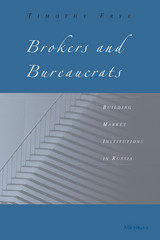 Brokers and Bureaucrats: Building Market Institutions in Russia
Timothy Frye
University of Michigan Press, 2000 A classic problem of social order prompts the central questions of this book: Why are some groups better able to govern themselves than others? Why do state actors sometimes delegate governing power to other bodies? How do different organizations including the state, the business community, and protection rackets come to govern different markets? Scholars have used both sociological and economic approaches to study these questions; here Timothy Frye argues for a different approach. He seeks to extend the theoretical and empirical scope of theories of self-governance beyond groups that exist in isolation from the state and suggests that social order is primarily a political problem.
Drawing on extensive interviews, surveys, and other sources, Frye addresses these question by studying five markets in contemporary Russia, including the currency futures, universal and specialized commodities, and equities markets. Using a model that depicts the effect of state policy on the prospects for self-governance, he tests theories of institutional performance and offers a political explanation for the creation of social capital, the formation of markets, and the source of legal institutions in the postcommunist world. In doing so, Frye makes a major contribution to the study of states and markets.
The book will be important reading for academic political scientists, economists (especially those who study the New Institutional Economics), legal scholars, sociologists, business-people, journalists, and students interested in transitions.
Timothy Frye is Assistant Professor of Political Science, The Ohio State University.
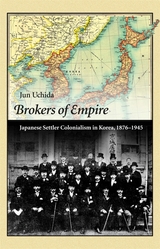 Brokers of Empire: Japanese Settler Colonialism in Korea, 1876–1945
Jun Uchida
Harvard University Press, 2011 Between 1876 and 1945, thousands of Japanese civilians—merchants, traders, prostitutes, journalists, teachers, and adventurers—left their homeland for a new life on the Korean peninsula. Although most migrants were guided primarily by personal profit and only secondarily by national interest, their mundane lives and the state’s ambitions were inextricably entwined in the rise of imperial Japan. Despite having formed one of the largest colonial communities in the twentieth century, these settlers and their empire-building activities have all but vanished from the public memory of Japan’s presence in Korea.
Drawing on previously unused materials in multi-language archives, Jun Uchida looks behind the official organs of state and military control to focus on the obscured history of these settlers, especially the first generation of “pioneers” between the 1910s and 1930s who actively mediated the colonial management of Korea as its grassroots movers and shakers. By uncovering the downplayed but dynamic role played by settler leaders who operated among multiple parties—between the settler community and the Government-General, between Japanese colonizer and Korean colonized, between colony and metropole—this study examines how these “brokers of empire” advanced their commercial and political interests while contributing to the expansionist project of imperial Japan.
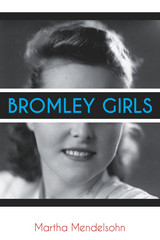 Bromley Girls
martha mendelsohn
Texas Tech University Press, 2015 It’s 1955 and fourteen-year-old Emily Winter’s promising start at Bromley, a posh, academically-challenging Manhattan girls’ school, threatens to turn sour when her new friend Phoebe Barrett joins an anti-Semitic club founded by the popular and snobby Cressida Whitcroft.
But how can Emily stay angry with Phoebe, who shares Emily’s fascination with knights and the Middle Ages, when Phoebe has put herself on a dangerously stringent diet and is sinking into an ever-deeper obsession with losing weight?
In a story about the search for identity and the triumph of friendship over bigotry, Emily discovers a knack for leadership as she copes with Phoebe’s snubs, a newborn brother, a know-it-all classmate addicted to true-love magazines, a whiz kid who thinks he’s James Dean, a fifteen-year-old fencer with an intriguing scar, and a surprise assignment that brings everyone together. Will the Bromley girls rise above their prejudice? Will Emily and Phoebe be best friends again?
Bronislava Nijinska: Early Memoirs
Irina Nijinska, Jean Rawlinson, eds. and trans.
Duke University Press, 1992 Now in paperback, Bronislava Nijinska: Early Memoirs—originally published in 1981—has been hailed by critics, scholars, and dancers alike as the definitive source of firsthand information on the early life of the great Vaslav Nijinsky (1889-1950). This memoir, recounted here with verve and stunning detail by the late Bronislava Nijinska (1891–1972)—Nijinsky's sister and herself a major twentieth-century dancer and leading choreographer of the Diaghilev era—offers a season-by-season chronicle of their childhood and early artistic development. Written with feeling and charm, these insightful memoirs provide an engrossingly readable narrative that has the panoramic sweep and colorful vitality of a Russian novel.
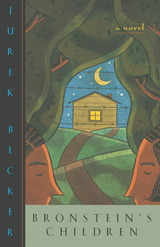 Bronstein's Children
Jurek Becker
University of Chicago Press, 1999 "East Berlin, 1973: an 18-year-old Jew discovers that his father's friends are holding prisoner a former Nazi concentration camp guard in the family cottage. The three older men have handcuffed the ex-Nazi to the bed and are interrogating and torturing him in an attempt to get him to admit to his war crimes. . . . Becker keenly shows the tension between members of the Holocaust generation and their children, who are unable to understand the complexity of that nightmarish era of human history."—Booklist
"[A] chilly, disquieting novel about historical slippage; about the seemingly inevitable decline of horror into a vague and generic recollection. The East German writer has devised something between story and allegory to evoke the cold generational millennium that separates a father, with his concentration-camp memories, from a son, adrift in a society with no memories whatsoever."—Richard Eder, Los Angeles Times Book Review
"Mr. Becker, writing simply and clearly in an unstrained narrative, speaks with the voice of knowledge, and we do well to listen to him."—Eva Figes, New York Times Book Review
Jurek Becker (1937-1998) is the author of Jacob the Liar, Sleepless Days, The Boxer, and Amanda Herzlos.
 The Brontës and the Fairy Tale
Jessica Campbell
Ohio University Press, 2024 The Brontës and the Fairy Tale is the first comprehensive study devoted to the role of fairy tales and folklore in the work of Charlotte, Emily, Anne, and Branwell Brontë. It intervenes in debates on genre, literary realism, the history of the fairy tale, and the position of women in the Victorian period. Building on recent scholarship emphasizing the dynamic relationship between the fairy tale and other genres in the nineteenth century, the book resituates the Brontës’ engagement with fairy tales in the context of twenty-first-century assumptions that the stories primarily evoke childhood and happy endings. Jessica Campbell argues instead that fairy tales and folklore function across the Brontës’ works as plot and character models, commentaries on gender, and signifiers of national identity.
Scholars have long characterized the fairy tale as a form with tremendous power to influence cultures and individuals. The late twentieth century saw important critical work revealing the sinister aspects of that power, particularly its negative effects on female readers. But such an approach can inadvertently reduce the history of the fairy tale to a linear development from the “traditional” tale (pure, straight, patriarchal, and didactic) to the “postmodern” tale (playful, sophisticated, feminist, and radical). Campbell joins other contemporary scholars in arguing that the fairy tale has always been a remarkably elastic form, allowing writers and storytellers of all types to reshape it according to their purposes.
The Brontës are most famous today for Jane Eyre and Wuthering Heights, haunting novels that clearly repurpose fairy tales and folklore. Campbell’s book, however, reveals similar repurposing throughout the entire Brontë oeuvre. The Brontës and the Fairy Tale is recursive: in demonstrating the ubiquity and multiplicity of uses of fairy tales in the works of the Brontës, Campbell enhances not only our understanding of the Brontës’ works but also the status of fairy tales in the Victorian period.
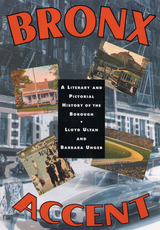 Bronx Accent: A Literary and Pictorial History of the Borough
Ultan, Lloyd
Rutgers University Press, 2000 For the last three hundred years, and through all its social and economic transformations, The Bronx has been a major literary center that many prominent writers have called home.
Bringing together a variety of past literary figures as well as emerging talents, this comprehensive book captures the Zeitgeist of the neighborhood through the eyes of its writers. Included are selections from the writings of Jack Kerouac, Mark Twain, James Baldwin, James Fenimore Cooper, Tom Wolfe, Herman Wouk, Theodore Dreiser, Washington Irving, Clifford Odets, Cynthia Ozick, Grace Paley, Edgar Allan Poe, Chaim Potok, Kate Simon, Leon Trotsky, and Sholem Aleichem.
Lloyd Ultan and Barbara Unger place the literature of these and other writers in historical context and reproduce one hundred vintage photographs that bring the writings to life. Filtered through the imaginations of authors of different times, ethnic groups, social classes, and literary styles, the borough of The Bronx emerges not only as a shaper of destinies and lives, but as an important literary mecca.
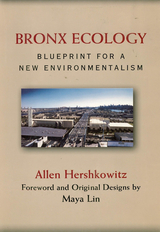 Bronx Ecology: Blueprint for a New Environmentalism
Allen Hershkowitz; Foreword by Maya Lin
Island Press, 2002 "The Bronx Community Paper Company teaches us that we have the power, if we muster the will, creativity, and cooperation, to recover lost pieces of America's environment, return them to good health, protect other lands and resources from being destroyed, and even create environmentally friendly jobs in the process." —President Bill Clinton In 1991, frustrated by the failure of lawmakers to produce meaningful progress on environmental issues, Allen Hershkowitz, a scientist with the Natural Resources Defense Council (NRDC) opted for an innovative approach. Resolving to put market forces to work for the environment, Hershkowitz devised a plan to develop a world-scale recycled-paper mill on the site of an abandoned rail yard in the South Bronx. Created in collaboration with colleagues at NRDC, the private sector, government, unions, and community groups, and with a building designed by renowned architect and designer Maya Lin, the Bronx Community Paper Company (BCPC) was intended to put the ideas of industrial ecology to work in a project that not only avoided exacerbating environmental problems but actually remediated them. One of the primary goals of the project was to show that environmental protection, job production, social assistance, economic development, and private-sector profitability can work together in a mutually supportive fashion. Unfortunately, it didn't quite turn out like that. In Bronx Ecology, Hershkowitz tells the story of the BCPC from its earliest inception to its final demise nearly ten years later. He describes the technical, economic, and competitive barriers that arose throughout the project as well as the decisive political and legal blows that doomed their efforts to secure financing, ultimately killing the project. Interwoven with the BCPC tale is Hershkowitz's vision for a new, engaged environmentalism, complete with principles for a new era of industrial development that combines social and environmental responsibility with a firm commitment to profit-making. As Hershkowitz explains, while the project was never built, its groundbreaking collaboration can hardly be considered a failure. Rather the BCPC, in the words of veteran environmental journalis. Philip Shabecoff, "can be seen as the beginning of a learning process for entrepreneurial environmentalism, a pathway to a new approach in the 21st century." Bronx Ecology offers a compelling vision of that exciting new pathway.
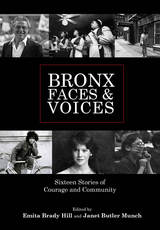 Bronx Faces and Voices: Sixteen Stories of Courage and Community
Emita Brady Hill
Texas Tech University Press, 2014 For the first time in print, rich, provocative first-hand stories of life in the Bronx in the twentieth century
In Bronx Faces and Voices, sixteen men and women tell their personal, uncensored stories of the New York City borough—before, during, and after the troubled years of arson, crime, abandonment, and flight in the 1970s and 1980s. The voices in this volume are as eclectic as the Bronx itself: elected officials, religious leaders, and activists who were determined to preserve the beauty of their parks and stability of their community. They had the courage to stay and fight against drug dealers, absent and indifferent landlords, banks that red-lined entire neighborhoods, and a voracious media that made of the Bronx an international symbol of urban disaster. Some are no longer alive. But each of the sixteen played a positive role in a pivotal time, and they all deserve to be remembered and to have their voices heard.
Portraits in this volume by noted photographers Georgeen Comerford and Walter Rosenblum document the Bronx "faces" in their beauty and diversity: young and old, witnesses to the history they lived and created.
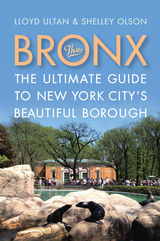 The Bronx: The Ultimate Guide to New York City's Beautiful Borough
Ultan, Lloyd
Rutgers University Press, 2015 Often overlooked by most tourists and locals alike, the Bronx—one of five boroughs that comprise the city of New York—is rich in cultural and historical attractions. From the Bronx Zoo (the largest urban zoo in the United States) to the New York Botanical Garden (one of the most visited botanical gardens in the world), this borough has something for everyone. Visitors can explore historical locations (including where George Washington slept and where Edgar Allan Poe lived and worked), watch a game in one of the most famous baseball stadiums in the United States—Yankee Stadium—and sample delicious Italian food in New York’s real “Little Italy” on Arthur Avenue and New England style seafood at City Island along the edge of Long Island Sound. Author and foremost historian of the Bronx Lloyd Ultan and educator Shelley Olson have teamed up to create a handy guidebook with detailed maps that will provide all the information prospective visitors need for planning their adventures to famous and little-known sites, including the hours, admission fees, and directions to featured attractions. The Bronx—which includes thirty-six color photographs—provides visitors with informative chapters on more than twelve of the borough’s extraordinary destinations as well as self-guided walking tours of some of the most ethnically, architecturally, and historically diverse neighborhoods. History buffs will find beautifully preserved eighteenth- and nineteenth-century homes, the Hall of Fame for Great Americans (which pays homage to many familiar faces in American history), and Woodlawn Cemetery (the final resting place for prominent Americans including Duke Ellington, Joseph Pulitzer, Gloria Vanderbilt Whitney, and Thomas Nast). In addition to the botanical garden, nature lovers can enjoy the beautiful Pelham Bay Park and Van Cortlandt Park. The Bronx also highlights the surprising number of art galleries, museums, and performance venues that visitors are sure to enjoy, further demonstrating the borough’s cultural prominence. .
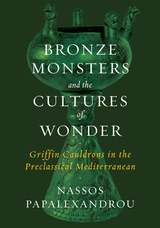 Bronze Monsters and the Cultures of Wonder: Griffin Cauldrons in the Preclassical Mediterranean
Nassos Papalexandrou
University of Texas Press, 2021 The eighth and seventh centuries BCE were a time of flourishing exchange between the Mediterranean and the Near East. One of the period’s key imports to the Hellenic and Italic worlds was the image of the griffin, a mythical monster that usually possesses the body of a lion and the head of an eagle. In particular, bronze cauldrons bore griffin protomes—figurative attachments showing the neck and head of the beast. Crafted in fine detail, the protomes were made to appear full of vigor, transfixing viewers. Bronze Monsters and the Cultures of Wonder takes griffin cauldrons as case studies in the shifting material and visual universes of preclassical antiquity, arguing that they were perceived as lifelike monsters that introduced the illusion of verisimilitude to Mediterranean arts. The objects were placed in the tombs of the wealthy (Italy, Cyprus) and in sanctuaries (Greece), creating fantastical environments akin to later cabinets of curiosities. Yet griffin cauldrons were accessible only to elites, ensuring that the new experience of visuality they fostered was itself a symbol of status. Focusing on the sensory encounter of this new visuality, Nassos Papalexandrou shows how spaces made wondrous fostered novel subjectivities and social distinctions.
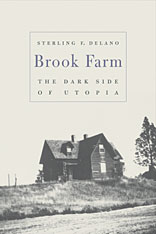 Brook Farm: The Dark Side of Utopia
Sterling F. Delano
Harvard University Press, 2004 Life at Brook Farm resembled an Arcadian adventure, in which the days began with the choir singing Mozart and Haydn and ended with drama and dancing. But how accurate is this image? In the first comprehensive examination of the famous utopian community in West Roxbury, Massachusetts, Sterling Delano reveals a surprisingly grim side to paradise as the Brook Farmers faced relentless financial pressures, a declining faith in their leaders, and smoldering class antagonisms.
Delano weaves through this remarkable story the voices of the Brook Farmers themselves, including their founder, George Ripley. Ripley founded Brook Farm in 1841 as an agrarian and pastoral society that would "insure a more natural union between intellectual and manual labor," yet he was surprisingly unprepared to lead it. Three years after its founding, Brook Farm was transformed into an industrial Phalanx. Longtime members departed, and key supporters withdrew. A smallpox scare, a financial lawsuit filed by Nathaniel Hawthorne, and a devastating fire all contributed to the community's ultimate demise. Despite its failure, however, the Brook Farmers recalled only its positive aspects, including the opportunities there for women and its progressive educational program.
In his wonderfully evocative account, Delano gives us a more complete picture than ever before of Brook Farm, and vividly chronicles the spirit of the Transcendental age.
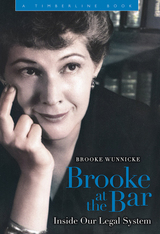 Brooke at the Bar: Inside Our Legal System
Brooke Wunnicke
University Press of Colorado, 2023 Brooke at the Bar is a candid, lively, and sometimes humorous autobiography by Brooke Wunnicke, the first woman to be a trial and appellate attorney in Wyoming and who went on to become a legal legend in Colorado. In conversational writing, Brooke provides insights from a lawyer, mentor, and educator. She advocates that, while not perfect, the United States has the world’s best legal system and that all citizens need to understand and protect their rights, freedoms, and responsibilities.
Brooke shares vignettes of her early life—California in the Great Depression, college at Stanford, law school in Colorado during World War II, and the 1946 opening of her Cheyenne law office, a precedent for women in law. She vividly describes memorable and amusing experiences with clients, witnesses, lawyers, juries, and judges and explains some significant cases. She recounts important and dynamic events from her twelve years as Denver’s chief appellate deputy district attorney, an era during which she was an inestimable mentor to many young lawyers who became prominent in the private and public sectors.
Brooke passionately believed “the law has been and will continue to be civilization’s hope.” In her book’s final part, she demystifies many legal terms and procedures and describes the parts of a civil jury trial—including information for jurors and witnesses—and provides an enthusiastic and clear refresher on the US Constitution and Bill of Rights.
Brooke at the Bar is a unique and historically important contribution that will be of interest to general readers, scholars, and students interested in US law, political science, government, women’s history, twentieth-century western history, civil rights, and legal communities, including those in Wyoming and Colorado, where Brooke was “at the Bar.”
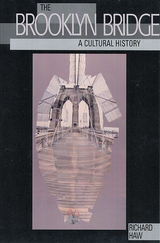 The Brooklyn Bridge: A Cultural History
Haw, Richard
Rutgers University Press, 2008 Hailed by some as the Eighth Wonder of the World when it opened in 1883, the Brooklyn Bridge is one of the world’s most recognizable and beloved icons. For over one hundred years it has excited and fascinated with stories of ingenuity and heroism, and it has been endorsed as a flawless symbol of municipal improvement and a prime emblem of American technological progress.
Despite its impressive physical presence, however, Brooklyn’s grand old bridge is much more than a testament of engineering and architectural achievement. As Richard Haw shows in this first of its kind cultural history, the Brooklyn Bridge owes as much to the imagination of the public as it does to the historical events and technical prowess that were integral to its construction.
Bringing together more than sixty images of the bridge that, over the years, have graced postcards, magazine covers, and book jackets and appeared in advertisements, cartoons, films, and photographs, Haw traces the diverse and sometimes jarring ways in which this majestic structure has been received, adopted, and interpreted as an American idea. Haw’s account is not a history of how the bridge was made, but rather of what people have made of the Brooklyn Bridge—in film, music, literature, art, and politics—from its opening ceremonies to the blackout of 2003.
Classic accounts from such writers and artists as H. G. Wells, Charles Reznikoff, Hart Crane, Lewis Mumford, Joseph Pennell, Walker Evans, and Georgia O’Keeffe, among many others, present the bridge as a deserted, purely aestheticized romantic ideal, while others, including Henry James, Joseph Stella, Yun Gee, Ernest Poole, Alfred Kazin, Paul Auster, and Don DeLillo, offer a counter-narrative as they question not only the role of the bridge in American society, but its function as a profoundly public, communal place. Also included are never-before-published photographs by William Gedney and a discussion of Alexis Rockman’s provocative new mural Manifest Destiny.
Drawing on hundreds of cultural artifacts, from the poignant, to the intellectual, to the downright quirky, The Brooklyn Bridge sheds new light on topics such as ethnic and foreign responses to America, nationalism, memory, parade culture, commemoration, popular culture, and post-9/11 America icons. In the end, we realize that this impressive span is as culturally remarkable today as it was technologically and physically astounding in the nineteenth century.
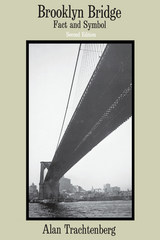 Brooklyn Bridge: Fact and Symbol
Alan Trachtenberg
University of Chicago Press, 1979 Fourteen of Walker Evans's evocative photographs of Brooklyn Bridge, most of which have never been published, appear in this edition of Alan Trachenberg's Brooklyn Bridge: Fact and Symbol. In the new afterword Trachenberg explores the history of Hart Crane's The Bridge, especially the poem's integral relationship with the powerful photography of Evans.
"[Brooklyn Bridge] is familiar in so many movies, in so many stage sets and, as Mr. Trachtenberg shows in this brilliant . . . book, it is at least as much a symbol as a reality. . . . Mr. Trachtenberg is always exciting and illuminating."—Times Literary Supplement
"The book is a skillful and insightful synthesis of materials about Brooklyn Bridge from such diverse fields as history, engineering, literature and art. Essentially it asks the question of why Brooklyn Bridge achieved such great impact on the nineteenth century American imagination and why it has continued to have a significant impact on twentieth century art and literature. In addition to its exploration of the bridge's symbolic significance, which includes perceptive analyses of such particular works as Hart Crane's great poem cycle and the paintings of artists like Joseph Stella, the book also includes a solidly researched account of the conception, planning and construction of the bridge. Trachtenberg's account of the intellectual and cultural sources of the bridge is particularly fascinating in its demonstration of the convergence of many different philosophical and ideological currents of the time around this great engineering enterprise, illustrating as effectively as any discussion I know the complex interplay of ideas and material culture."—John G. Cawelti, University of Chicago
"Alan Trachtenberg's Brooklyn Bridge is a fascinating story, the philosophic genesis of the idea in Europe, John Roebling's heroic effort to translate it into masonry and steel, and the meanings that Americans attached to the physical object as an emblem of their aspirations."—Leo Marx, Amherst College, author of The Machine in the Garden
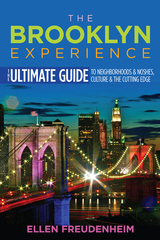 The Brooklyn Experience: The Ultimate Guide to Neighborhoods & Noshes, Culture & the Cutting Edge
Freudenheim, Ellen
Rutgers University Press, 2016 From Paris to Rio, everyone’s curious about hot, new Brooklyn. The Brooklyn Experience, Ellen Freudenheim’s fourth comprehensive Brooklyn guidebook, offers a true insider’s guide, complete with photographs, itineraries, and insights into one of the most creative, dynamic cities in the modern world. Walk over the Brooklyn Bridge at dawn or sunset, discover thirty-eight unique Brooklyn neighborhoods, and experience the borough like a native. Find out where to go to the beach and to eat great pizza, what to do with the kids, how to enjoy free and cheap activities, and where to savor Brooklyn’s famous cuisines. Visit cool independent shops, greenmarkets, festivals, and delve into the vibrant new cultural scene at the Brooklyn Academy of Music, Barclays Center, and the lively exploding neighborhoods of DUMBO, Williamsburg, and Bushwick. Included in the book are essays and the pithy, sometimes funny comments of sixty cultural, literary, and culinary movers and shakers, culled from exclusive interviews with experts from the James Beard Foundation to the cofounder of the famous Brooklyn Book Festival, as well as MacArthur “genius” award winners, to young entrepreneurs, hipsters, and activists, all of whom have something to say about Brooklyn’s stunning renaissance. Neighborhood profiles are rich in user-friendly information and details, including movies, celebrities, and novels associated with each neighborhood. There are also 800 listings of great restaurants, bars, shops, parks, cultural institutions, and historical sites, complete with contact information.
Targeting the independent, curious traveler, The Brooklyn Experience includes a dozen “do-it-yourself” tours, including a visit to Woody Allen’s childhood neighborhood, and amazing Revolutionary and Civil War sites.
Freudenheim draws clear—and sometimes surprising—connections between old and new Brooklyn. Written by an author with an astounding knowledge of all Brooklyn has to offer, The Brooklyn Experience will guide both first-time and repeat visitors, and will be a fun resource for Brooklynites who enjoy exploring their own hometown.
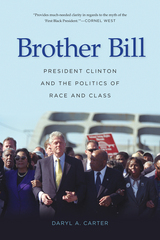 Brother Bill: President Clinton and the Politics of Race and Class
Daryl A Carter
University of Arkansas Press, 2016 “This book is a fascinating analysis of race and class in the age of President Bill Clinton. It provides much-needed clarity in regards to the myth of the ‘First Black President.’ It contributes much to our understanding of the history that informs our present moment!”
—Cornel West
As President Barack Obama was sworn into office on January 20, 2009, the United States was abuzz with talk of the first African American president. At this historic moment, one man standing on the inaugural platform, seemingly a relic of the past, had actually been called by the moniker the “first black president” for years. President William Jefferson Clinton had long enjoyed the support of African Americans during his political career, but the man from Hope also had a complex and tenuous relationship with this faction of his political base. Clinton stood at the nexus of intense political battles between conservatives’ demands for a return to the past and African Americans’ demands for change and fuller equality. He also struggled with the class dynamics dividing the American electorate, especially African Americans. Those with financial means seized newfound opportunities to go to college, enter the professions, pursue entrepreneurial ambitions, and engage in mainstream politics, while those without financial means were essentially left behind. The former became key to Clinton’s political success as he skillfully negotiated the African American class structure while at the same time maintaining the support of white Americans. The results were tremendously positive for some African Americans. For others, the Clinton presidency was devastating. Brother Bill examines President Clinton’s political relationship with African Americans and illuminates the nuances of race and class at the end of the twentieth century, an era of technological, political, and social upheaval.
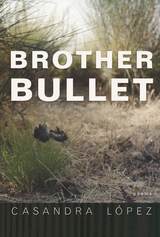 Brother Bullet: Poems
Casandra López
University of Arizona Press, 2019 Speaking to both a personal and collective loss, in Brother Bullet Casandra López confronts her relationships with violence, grief, guilt, and ultimately, endurance. Revisiting the memory and lasting consequences of her brother’s murder, López traces the course of the bullet—its trajectory, impact, wreckage—in lyrical narrative poems that are haunting and raw with emotion, yet tender and alive in revelations of light.
Drawing on migratory experiences, López transports the reader to the Inland Empire, Baja California, New Mexico, and Arizona to create a frame for memory, filled with imagery, through the cyclical but changing essence of sorrow. This is paralleled with surrounding environments, our sense of belonging—on her family’s porch, or in her grandfather’s orange grove, or in the darkest desert. López’s landscapes are geographical markers and borders, connecting shared experiences and memories.
Brother Bullet tugs and pulls, drawing us into a consciousness—a story—we all bear.
Brother Dog: Southern Tales and Hollywood Adventures
Harry Thomason
Parkhurst Brothers, Inc., 2019 A humor-laced episodic memoir, Brother Dog is the story of a working-class childhood in the rural South during the 1950s and 60s, striving to become a filmmaker on an ever-expanding stage, helping elect a friend to the presidency, and anecdotal encounters with Chuck Berry, Prime Minister Tony Blair and other luminaries, all rich in imagery, grit, and humor.
 Brother is a Street Musician: Viewing the Landscape of Modernity through Korean Popular Music
Eujeong Zhang
Rutgers University Press, 2026 Described as a “fascinating journey upstream into the past to understand where the current will bring the future of Korean pop music,” (Busan Ilbo Review, 2009) Brother Is a Street Musician does not deal with contemporary K-Pop; rather, it visits the first chapter of Korea’s popular music history, which coincided with Japanese colonization in the first half of the 20th century. Combining archival research with a critical analysis of the earliest popular songs, the early recording industry, the first modern era musicians and composers, and the first formation of the consumer masses, Korean popular music scholar and musician Zhang Eujeong seeks to address the essential question: how did a colonized people construct their own, unique form of popular culture? Today, popular music from Korea has established itself as a formidable, global cultural phenomenon, garnering the interest of not only the power players in the global music industry, but also scholars across many disciplines. As an academic inquiry into the first moment of Korean popular music history, this English translation by Seulbin Han will be an essential resource in today’s lively conversations around the emerging field of Korean popular music.
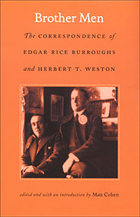 Brother Men: The Correspondence of Edgar Rice Burroughs and Herbert T. Weston
Edgar Rice Burroughs and Herbert T. Weston
Duke University Press, 2005 Brother Men is the first published collection of private letters of Edgar Rice Burroughs, the phenomenally successful author of adventure, fantasy, and science fiction tales, including the Tarzan series. The correspondence presented here is Burroughs’s decades-long exchange with Herbert T. Weston, the maternal great-grandfather of this volume’s editor, Matt Cohen. The trove of correspondence Cohen discovered unexpectedly during a visit home includes hundreds of items—letters, photographs, telegrams, postcards, and illustrations—spanning from 1903 to 1945. Since Weston kept carbon copies of his own letters, the material documents a lifelong friendship that had begun in the 1890s, when the two men met in military school. In these letters, Burroughs and Weston discuss their experiences of family, work, war, disease and health, sports, and new technology over a period spanning two world wars, the Great Depression, and widespread political change. Their exchanges provide a window into the personal writings of the legendary creator of Tarzan and reveal Burroughs’s ideas about race, nation, and what it meant to be a man in early-twentieth-century America. The Burroughs-Weston letters trace a fascinating personal and business relationship that evolved as the two men and their wives embarked on joint capital ventures, traveled frequently, and navigated the difficult waters of child-rearing, divorce, and aging. Brother Men includes never-before-published images, annotations, and a critical introduction in which Cohen explores the significance of the sustained, emotional male friendship evident in the letters. Rich with insights related to visual culture and media technologies, consumerism, the history of the family, the history of authorship and readership, and the development of the West, these letters make it clear that Tarzan was only one small part of Edgar Rice Burroughs’s broad engagement with modern culture.
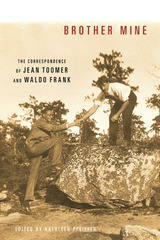 Brother Mine: The Correspondence of Jean Toomer and Waldo Frank
Edited by Kathleen Pfeiffer
University of Illinois Press, 2010 The friendship of Jean Toomer and Waldo Frank was one of the most emotionally intense, racially complicated, and aesthetically significant relationships in the history of American literary modernism. Waldo Frank was an established white writer who advised and assisted the younger African American Jean Toomer as he pursued a literary career. They met in 1920, began corresponding regularly in 1922, and were estranged by the end of 1923, the same year that Toomer published his ambitiously modernist debut novel, Cane. While individual letters between Frank and Toomer have been published separately on occasion, they have always been presented out of context. This volume presents for the first time their entire correspondence in chronological order, comprising 121 letters ranging from 200 to 800 words each. Kathleen Pfeiffer annotates and introduces the letters, framing the correspondence and explaining the literary and historical allusions in the letters themselves. Reading like an epistolary novel, Brother Mine captures the sheer emotional force of the story that unfolds in these letters: two men discover an extraordinary friendship, and their intellectual and emotional intimacy takes shape before our eyes. This unprecedented collection preserves the raw honesty of their exchanges, together with the developing drama of their ambition, their disappointments, their assessment of their world, and ultimately, the betrayal that ended the friendship.
Brother Salvage: Poems
Rick Hilles
University of Pittsburgh Press, 2006 The name of the title poem—“Brother Salvage: a genizah,” provides a skeleton key to unlock the powerful forces that bind Rick Hilles’s collection. A genizah is a depository, or hiding place, for sacred texts. It performs a double function: to keep hallowed objects safe and to prevent more destructive forces from circulating and causing further harm. Brother Salvage serves exactly this purpose. The poems are heartrending and incisive, preserving stories and lives that should not be forgotten. Yet, through the poet’s eloquent craft, painful histories and images are beautifully and luminously contained. Like scholars sifting through ancient genizahs in search of spiritual and historical insights, readers immersed in Brother Salvage will find, at the heart of the book, the most sacred entity: hope.
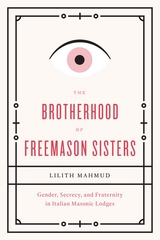 The Brotherhood of Freemason Sisters: Gender, Secrecy, and Fraternity in Italian Masonic Lodges
Lilith Mahmud
University of Chicago Press, 2014 From its traces in cryptic images on the dollar bill to Dan Brown’s The Lost Symbol, Freemasonry has long been one of the most romanticized secret societies in the world. But a simple fact escapes most depictions of this elite brotherhood: There are women Freemasons, too. In this groundbreaking ethnography, Lilith Mahmud takes readers inside Masonic lodges in contemporary Italy, where she observes the many ritualistic and fraternal bonds forged among women initiates of this elite and esoteric society.
Offering a tantalizing look behind lodge doors, The Brotherhood of Freemason Sisters unveils a complex culture of discretion in which Freemasons simultaneously reveal some truths and hide others. Women—one of Freemasonry’s best-kept secrets—are often upper class and highly educated but paradoxically antifeminist, and their self-cultivation through the Masonic path is an effort to embrace the deeply gendered ideals of fraternity. Mahmud unravels this contradiction at the heart of Freemasonry: how it was at once responsible for many of the egalitarian concepts of the Enlightenment and yet has always been, and in Italy still remains, extremely exclusive. The result is not only a thrilling look at an unfamiliar—and surprisingly influential—world, but a reevaluation altogether of the modern values and ideals that we now take for granted.
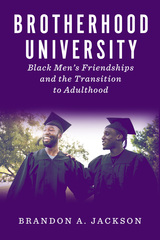 Brotherhood University: Black Men's Friendships and the Transition to Adulthood
Brandon A. Jackson
Rutgers University Press, 2024 How do young Black men navigate the transition to adulthood in an era of labor market precarity, an increasing emphasis on personal independence, and gendered racism? In Brotherhood University, Brandon A. Jackson utilizes longitudinal qualitative data to examine the role of emotions and social support among a group of young Black men as they navigate a “structural double bind” as college students and into early adulthood. While prevailing stereotypes portray young Black men as emotionally aloof, Jackson finds that the men invested in an emotion culture characterized by vulnerability, loyalty, and trust, which created a system of mutual social support, or brotherhood, among the group as they navigated college, prepared for the labor market, and experienced romantic relationships. Ten years later, as they managed the early stages of their careers and considered marriage and child-rearing, the men continued to depend on the emotional vulnerability and close relationships they forged in their college years.
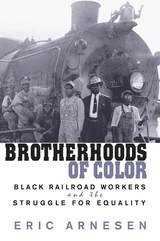 Brotherhoods of Color: Black Railroad Workers and the Struggle for Equality
Eric Arnesen
Harvard University Press, 2001 From the time the first tracks were laid in the early nineteenth century, the railroad has occupied a crucial place in America's historical imagination. Now, for the first time, Eric Arnesen gives us an untold piece of that vital American institution—the story of African Americans on the railroad.
African Americans have been a part of the railroad from its inception, but today they are largely remembered as Pullman porters and track layers. The real history is far richer, a tale of endless struggle, perseverance, and partial victory. In a sweeping narrative, Arnesen re-creates the heroic efforts by black locomotive firemen, brakemen, porters, dining car waiters, and redcaps to fight a pervasive system of racism and job discrimination fostered by their employers, white co-workers, and the unions that legally represented them even while barring them from membership.
Decades before the rise of the modern civil rights movement in the mid-1950s, black railroaders forged their own brand of civil rights activism, organizing their own associations, challenging white trade unions, and pursuing legal redress through state and federal courts. In recapturing black railroaders' voices, aspirations, and challenges, Arnesen helps to recast the history of black protest and American labor in the twentieth century.
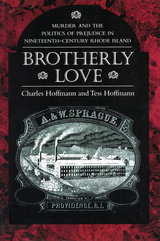 Brotherly Love: Murder and the Politics of Prejudice in Nineteenth-Century Rhode Island
Charles Hoffmann
University of Massachusetts Press, 1993 On New Year's Eve in 1843, Rhode Island textile manufacturer Amasa Sprague was shot and beaten to death. Within two days, three Irish immigrant brothers were arrested, charged with murder, and eventually brought to trial.
Brotherly Love is a graphic reconstruction of the crime, its social and economic background, and the subsequent trials. The story reveals the antagonism between native-born Yankees, who commanded great power, and the growing number of Irish Catholic immigrants, most of whom worked in the textile mills. Indeed, the economic, political, and religious dimensions of the conflict are all evident in the trials.
The authors argue persuasively that the Gordons were victims of bigotry and circumstantial evidence, serving as convenient scapegoats to appease a community outraged over the murder of its wealthiest citizen. In telling the story of this notorious case, Brotherly Love reveals the politics of prejudice in nineteenth-century New England as played out in community and courtroom.
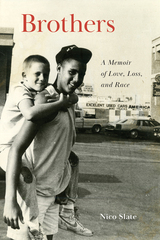 Brothers: A Memoir of Love, Loss, and Race
Nico Slate
Temple University Press, 2023 Brothers is Nico Slate’s poignant memoir about Peter Slate, aka XL, a Black rapper and screenwriter whose life was tragically cut short. Nico and Peter shared the same White American mother but had different fathers. Nico’s was White; Peter’s was Black. Growing up in California in the 1980s and 1990s, Nico often forgot about their racial differences until one night in March 1994 when Peter was attacked by a White man in a nightclub in Los Angeles. Nico began writing Brothers with the hope that investigating the attack would bring him closer to Peter. He could not understand that night, however, without grappling with the many ways race had long separated him from his brother. This is a memoir of loss—the loss of a life and the loss at the heart of our racial divide—but it is also a memoir of love. The love between Nico and Peter permeates every page of Brothers. This achingly beautiful memoir presents one family’s resilience on the fault lines of race in contemporary America.
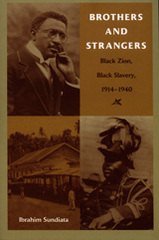 Brothers and Strangers: Black Zion, Black Slavery, 1914–1940
Ibrahim Sundiata
Duke University Press, 2003 Unprecedented in scope and detail, Brothers and Strangers is a vivid history of how the mythic Africa of the black American imagination ran into the realities of Africa the place. In the 1920s, Marcus Garvey—convinced that freedom from oppression was not possible for blacks in the Americas—led the last great African American emigrationist movement. His U.S.-based Universal Negro Improvement Association worked with the Liberian government to create a homeland for African Americans. Ibrahim Sundiata explores the paradox at the core of this project: Liberia, the chosen destination, was itself racked by class and ethnic divisions and—like other nations in colonial Africa—marred by labor abuse. In an account based on extensive archival research, including work in the Liberian National Archives, Sundiata explains how Garvey’s plan collapsed when faced with opposition from the Liberian elite, opposition that belied his vision of a unified Black World. In 1930 the League of Nations investigated labor conditions and, damningly, the United States, land of lynching and Jim Crow, accused Liberia of promoting “conditions analogous to slavery.” Subsequently various plans were put forward for a League Mandate or an American administration to put down slavery and “modernize” the country. Threatened with a loss of its independence, the Liberian government turned to its “brothers beyond the sea” for support. A varied group of white and black anti-imperialists, among them W. E. B. Du Bois, took up the country’s cause. In revealing the struggle of conscience that bedeviled many in the black world in the past, Sundiata casts light on a human rights predicament which, he points out, continues in twenty-first-century African nations as disparate as Sudan, Mauritania, and the Ivory Coast.
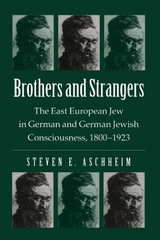 Brothers and Strangers: The East European Jew in German and German Jewish Consciousness, 1800–1923
Steven E. Aschheim
University of Wisconsin Press, 1983 Brothers and Strangers traces the history of German Jewish attitudes, policies, and stereotypical images toward Eastern European Jews, demonstrating the ways in which the historic rupture between Eastern and Western Jewry developed as a function of modernism and its imperatives. By the 1880s, most German Jews had inherited and used such negative images to symbolize rejection of their own ghetto past and to emphasize the contrast between modern “enlightened” Jewry and its “half-Asian” counterpart. Moreover, stereotypes of the ghetto and the Eastern Jew figured prominently in the growth and disposition of German anti-Semitism. Not everyone shared these negative preconceptions, however, and over the years a competing post-liberal image emerged of the Ostjude as cultural hero. Brothers and Strangers examines the genesis, development, and consequences of these changing forces in their often complex cultural, political, and intellectual contexts.
Brothers at War: Making Sense of the Eritrean-Ethiopian War
Tekaste Negash
Ohio University Press, 2001 The war between Eritrea and Ethiopia, which began in May 1998, took the world by surprise. During the war, both sides mobilized huge forces along their common borders and spent several hundred million dollars on military equipment. Outside observers found it difficult to evaluate the highly polarized official statements and proclamations issued by the two governments in conflict.
Brothers at War presents important, contextual aspects to explain the growing discord between the two formerly friendly governments. It looks at the historical relations between the two countries since the late nineteenth century, the historical border issues from local perspectives, and the complicated relations between the former liberation fronts that subsequently formed the current governments of the two countries.
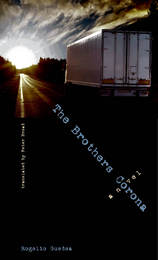 The Brothers Corona: A Novel
Rogelio Guedea
Texas Tech University Press, 2014 A modern-day picaresque novel by one of Mexico’s best
The Brothers Corona is a novel that reads like a Sam Shepard story made into a Wim Wenders road movie. It is the first Mexican detective novel that reflects rural Mexican life and culture, showcasing the splendor of its customs and traditions.
The novel unfolds as two revolving stories that eventually intertwine into one. The first is the story of Abel Corona and his three brothers, who are involved in a nasty feud with the neighboring Alcaraz family. The second story focuses on the journey that Abel undertakes to search for his girlfriend by catching a ride from a truck driver who is involved in the drug trade. When he steals money from the driver, Abel starts fearing for his life. Then his brother Ismael is found dead, and Abel is confronted with an old family feud: a fight over land ending in death. Is he being lured into a trap to fall victim to revenge?
Portraying ranch life across the great expanse of northern and western Mexico, Guedea dazzles the reader with numerous subplot lines and sequences of Abel’s journey. The novel doesn’t hold back, and it’s inventive, honest, and often beautifully brutal.
Brother's Ghost: A Novella
Stephen Spotte
Northwestern University Press, 2012 When the young narrator of Brother’s Ghost happens upon a warehouse filled with corpses of the “disappeared ones,” victims of his country’s brutal military regime, he is forced to flee his home and family and strike out for the interior. There he reunites with his long-estranged mother, a member of an indigenous tribe of Indians living deep in the tropical rainforest. Mistaken for the ghost of his deceased twin brother, the narrator takes his brother’s place in tribal society, learning to hunt and fight but never escaping the memory of his former life in the city. Scientist and author Stephen Spotte’s compact tale captures the tensions of this unnamed South American country, of its cities and interior, and the confusion of straddling two cultures while belonging to neither.
The Brothers Grimm and Folktale
Edited by James M. McGlathery
University of Illinois Press, 1988 "Some of the best folklore and Grimm scholars from Europe and the U.S. combined to
give an excellent overview of the scholarly research and current critical thought regarding
Jakob and Wilhelm Grimm and their hugely popular Grimm's Fairy Tales. . . . The
book is directed to the general educated public and is very readable." -- Choice
Brothers Grimm And Their Critics: Folktales And The Quest For Meaning
Christa Kamenetsky
Ohio University Press, 1993 Critics of the Grimms' folktales have often imposed narrow patriotic, religious, moralistic, social, and pragmatic meanings of their stories, sometimes banning them altogether from nurseries and schoolrooms. In this study, Kamenetsky uses the methodology of the folklorist to place the folktale research of the Grimms within the broader context of their scholarly work in comparative linguistics and literature.
Brothers in Arms: A Journey from War to Peace
By William Broyles, Jr.
University of Texas Press, 1996 Reviews of the Knopf edition: "A wonderful book—fresh and intelligent. Broyles's eye for Vietnam, then and now, is unerring." —Peter Jennings "[A] superbly written, often moving story of Broyles' journey back to the killing ground in Vietnam where he once served as a Marine lieutenant. A cool, clear meditation that stings the heart." —Kirkus Reviews "A first-rate piece of work, infused with an ideal American common decency and common sense." —Kurt Vonnegut "Exceptional and memorable." —Gay Talese
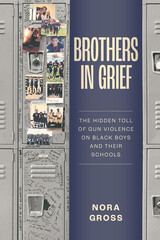 Brothers in Grief: The Hidden Toll of Gun Violence on Black Boys and Their Schools
Nora Gross
University of Chicago Press, 2024 A heartbreaking account of grief, Black boyhood, and how we can support young people as they navigate loss.
JahSun, a dependable, much-loved senior at Boys’ Prep was just hitting his stride in the fall of 2017. He had finally earned a starting position on the varsity football team and was already weighing two college acceptances. Then, over Thanksgiving, tragedy struck. An altercation at his older sister’s home escalated into violence, killing the unarmed teenager in a hail of bullets. JahSun’s untimely death overwhelmed his entire community, sending his family, friends, and school into seemingly insurmountable grief. Worse yet, that spring two additional Boys’ Prep students would be shot to death in their neighborhood. JahSun and his peers are not alone in suffering the toll of gun violence, as every year in the United States teenagers die by gunfire in epidemic numbers, with Black boys most deeply affected.
Brothers in Grief closely attends to the neglected victims of youth gun violence: the suffering friends and classmates who must cope, mostly out of public view, with lasting grief and hidden anguish. Set at an ambitious urban high school for boys during the heartbreaking year following the death of JahSun, the book chronicles the consequences of untimely death on Black teen boys and on a school community struggling to recover. Sociologist Nora Gross tells the story of students attempting to grapple with unthinkable loss, inviting readers in to observe how they move through their days at school and on social media in the aftermath of their friends’ and classmates’ deaths. Gross highlights the discrepancy between their school’s educational mission and teachers’ and administrators’ fraught attempts to care for students’ emotional wellbeing. In the end, the school did not provide adequate space for grief, making it more difficult for students to heal, reengage with school, and imagine hopeful futures. Even so, supportive relationships deepened among students and formed across generations, offering promising examples of productive efforts to channel student grief into positive community change.
A searing testimony of our collective failure to understand the inner lives of our children in crisis, Brothers in Grief invites us all to wrestle with the hidden costs of gun violence on racial and educational inequity.
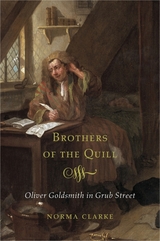 Brothers of the Quill: Oliver Goldsmith in Grub Street
Norma Clarke
Harvard University Press, 2016 Oliver Goldsmith arrived in England in 1756 a penniless Irishman. He toiled for years in the anonymity of Grub Street—already a synonym for impoverished hack writers—before he became one of literary London’s most celebrated authors. Norma Clarke tells the extraordinary story of this destitute scribbler turned gentleman of letters as it unfolds in the early days of commercial publishing, when writers’ livelihoods came to depend on the reading public, not aristocratic patrons. Clarke examines a network of writers radiating outward from Goldsmith: the famous and celebrated authors of Dr. Johnson’s “Club” and those far less fortunate “brothers of the quill” trapped in Grub Street.
Clarke emphasizes Goldsmith’s sense of himself as an Irishman, showing that many of his early literary acquaintances were Irish émigrés: Samuel Derrick, John Pilkington, Paul Hiffernan, and Edward Purdon. These writers tutored Goldsmith in the ways of Grub Street, and their influence on his development has not previously been explored. Also Irish was the patron he acquired after 1764, Robert Nugent, Lord Clare. Clarke places Goldsmith in the tradition of Anglo-Irish satirists beginning with Jonathan Swift. He transmuted troubling truths about the British Empire into forms of fable and nostalgia whose undertow of Irish indignation remains perceptible, if just barely, beneath an equanimous English surface.
To read Brothers of the Quill is to be taken by the hand into the darker corners of eighteenth-century Grub Street, and to laugh and cry at the absurdities of the writing life.
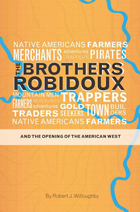 The Brothers Robidoux and the Opening of the American West
Robert J. Willoughby
University of Missouri Press, 2012 Written in a unique biographical format, Robert Willoughby interweaves the stories of six brothers who shaped the American trans-Mississippi West during the first five decades of the nineteenth century. After migrating from French Canada to St. Louis, the brothers Robidoux—Joseph, Francois, Antoine, Louis, Michel, and Isadore—and their father, Joseph, became significant members in the business, fur trading, and land speculation communities, frequently interacting with upper-class members of the French society. Upon coming of age, the brothers followed their father into the fur business and American Indian trade. The oldest of the six, Joseph, led the group on an expedition up the Missouri River as Lewis and Clark had once done, designating a path of trade sites along their journey until they reached their destination at present-day Omaha, Nebraska. Eventually the younger brothers set out on their own westward expedition in the mid 1820s, reaching both Colorado and Santa Fe, New Mexico. Joseph eventually became a town founder in northwest Missouri near Blacksnake Creek. Antoine and Louis traveled as far as California, finally settling in Santa Fe where they became prominent citizens. As a trapper and trader, Michel endured many hardships and close calls during his journey across the West. Francois and Isadore made their home in New Mexico, maintaining a close relationship with Joseph in Missouri. Though frequently under contract by others, the brothers did their best work when allowed to freelance and make their own rules. The brothers would ultimately pass on their prosperous legacy of ranging, exploring, trading, and town-building to a new generation of settlers. As the nature of the fur trade changed, so did the brothers’ business model. They began focusing on outfitting western migrants, town folk, and farmers. Their practices made each of them wealthy; however, they all died poor. To understand the opening of the American West, one must first know about men like the brothers Robidoux. Their lives are the framework for stories about the American frontier. By using primary sources located at the Missouri Historical Society, the Mexican Archives of New Mexico, and the Huntington Library, as well as contemporary accounts written by those who knew them, Willoughby has now told the Robidouxs’ story.
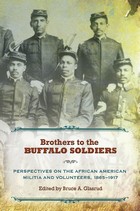 Brothers to the Buffalo Soldiers: Perspectives on the African American Militia and Volunteers, 1865-1917
Bruce A. Glasrud
University of Missouri Press, 2011 During the late nineteenth and early twentieth centuries, African American men were seldom permitted to join the United States armed forces. There had been times in early U.S. history when black and white men fought alongside one another; it was not uncommon for integrated units to take to battle in the Revolutionary War. But by the War of 1812, the United States had come to maintain what one writer called “a whitewashed army.” Yet despite that opposition, during the early 1800s, militia units made up of free black soldiers came together to aid the official military troops in combat.
Many black Americans continued to serve in times of military need. Nearly 180,000 African Americans served in units of the U.S. Colored Troops during the Civil War, and others, from states such as Massachusetts, Rhode Island, Missouri, and Kansas, participated in state militias organized to protect local populations from threats of Confederate invasion. As such, the Civil War was a turning point in the acceptance of black soldiers for national defense. By 1900, twenty-two states and the District of Columbia had accepted black men into some form of military service, usually as state militiamen—brothers to the “buffalo soldiers” of the regular army regiments, but American military men regardless.
Little has been published about them, but Brothers to the Buffalo Soldiers: Perspectives on the African American Militia and Volunteers, 1865–1919, offers insights into the varied experiences of black militia units in the post–Civil War period. The book includes eleven articles that focus either on “Black Participation in the Militia” or “Black Volunteer Units in the War with Spain.” The articles, collected and introduced by author and scholar Bruce A. Glasrud, provide an overview of the history of early black citizen-soldiers and offer criticism from prominent academics interested in that experience.
Brothers to the Buffalo Soldiers discusses a previously little-known aspect of the black military experience in U.S. history, while deliberating on the discrimination these men faced both within and outside the military. Chosen on the bases of scholarship, balance, and readability, these articles provide a rare composite picture of the black military man’s life during this period. Brothers to the Buffalo Soldiers offers both a valuable introductory text for students of military studies and a solid source of material for African American historians.
 Brown Bears in Alaska's National Parks: Conservation of a Wilderness Icon
Grant V. Hilderbrand
University of Alaska Press, 2025 Brown bears are powerful symbols of wilderness, thriving in the vast, untamed ecosystems of Alaska’s remote national parks. Brown Bears in Alaska’s National Parks is a unique and thorough exploration of the conservation, ecology, and management of brown bears in these parks, including examinations of bear biology, human-bear interactions, population estimation methods, and the effects of climate change on bear populations. This lavishly illustrated volume offers fresh perspectives about the complex challenges that bears and humans face as they navigate coexistence in the evolving wilderness of Alaska. Through park-specific chapters, the authors clearly present the current understanding of brown bear ecology across a wide range of ecosystems—from the sparse and frigid Gates of the Arctic, entirely above the Arctic Circle, to the bountiful coast of Katmai, where the marine and terrestrial systems converge. In Glacier Bay, bears roam newly exposed ecosystems shaped by retreating glaciers, while the interior landscapes of Lake Clark and Denali provide a mix of boreal forests, tundra, rivers, and towering mountains. Brown bears—and the many species that share their habitats—face numerous challenges, with climate change among the greatest threats. The warming climate intensifies other pressures, such as industrial development, both within and around park boundaries. Management actions may also reduce native brown bear populations and, in turn, threaten healthy and naturally functioning ecosystems. The adaptability of brown bears, in concert with thoughtful and science-based management, is essential for the conservation of these majestic creatures and the wilderness landscapes on which they depend. Written by the wildlife biologists and anthropologists who have dedicated their careers to studying brown (grizzly) bears and their relationship to people, Brown Bears in Alaska’s National Parks is a premier reference for bear enthusiasts, biologists, managers, and academics, as well as advocates for wild things and wild places.
Brown Girl Chromatography: Poems
Anuradha Bhowmik
University of Pittsburgh Press, 2022 Anuradha Bhowmik’s life as a Bangladeshi-born American girl growing up as a first-generation immigrant in the United States gives shape to this debut collection. Brown Girl Chromatography interrogates issues of race, class, gender, and sexuality in a post-9/11 America while navigating the poet’s millennial childhood, adolescence, and adulthood. The poems follow Bhowmik as she learns about the cruelties in both American and Bangladeshi worlds without any guidance or instruction on how to survive these conflicting spheres. Any visible traces of her Bangladeshi life result in racial ridicule from her peers, while participating and assimilating into American culture is met with violence and abuse at home. As language and memory intersect, Bhowmik draws on pop culture and free association to examine her displacement from many angles and make meaning out of hurt.
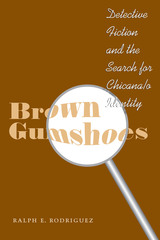 Brown Gumshoes: Detective Fiction and the Search for Chicana/o Identity
By Ralph E. Rodriguez
University of Texas Press, 2005 Winner, Modern Language Association Prize in United States Latina and Latino and Chicana and Chicano Literary and Cultural Studies, 2006 Popular fiction, with its capacity for diversion, can mask important cultural observations within a framework that is often overlooked in the academic world. Works thought to be merely "escapist" can often be more seriously mined for revelations regarding the worlds they portray, especially those of the disenfranchised. As detective fiction has slowly earned critical respect, more authors from minority groups have chosen it as their medium. Chicana/o authors, previously reluctant to write in an underestimated genre that might further marginalize them, have only entered the world of detective fiction in the past two decades. In this book, the first comprehensive study of Chicano/a detective fiction, Ralph E. Rodriguez examines the recent contributions to the genre by writers such as Rudolfo Anaya, Lucha Corpi, Rolando Hinojosa, Michael Nava, and Manuel Ramos. Their works reveal the struggles of Chicanas/os with feminism, homosexuality, familia, masculinity, mysticism, the nationalist subject, and U.S.-Mexico border relations. He maintains that their novels register crucial new discourses of identity, politics, and cultural citizenship that cannot be understood apart from the historical instability following the demise of the nationalist politics of the Chicana/o movement of the 1960s and 1970s. In contrast to that time, when Chicanas/os sought a unified Chicano identity in order to effect social change, the 1980s, 1990s, and 2000s have seen a disengagement from these nationalist politics and a new trend toward a heterogeneous sense of self. The detective novel and its traditional focus on questions of knowledge and identity turned out to be the perfect medium in which to examine this new self.
Brown in the Windy City: Mexicans and Puerto Ricans in Postwar Chicago
Lilia Fernández
University of Chicago Press, 2012 Brown in the Windy City is the first history to examine the migration and settlement of Mexicans and Puerto Ricans in postwar Chicago. Lilia Fernández reveals how the two populations arrived in Chicago in the midst of tremendous social and economic change and, in spite of declining industrial employment and massive urban renewal projects, managed to carve out a geographic and racial place in one of America’s great cities. Through their experiences in the city’s central neighborhoods over the course of these three decades, Fernández demonstrates how Mexicans and Puerto Ricans collectively articulated a distinct racial position in Chicago, one that was flexible and fluid, neither black nor white.
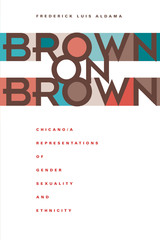 Brown on Brown: Chicano/a Representations of Gender, Sexuality, and Ethnicity
By Frederick Luis Aldama
University of Texas Press, 2005 Common conceptions permeating U.S. ethnic queer theory tend to confuse aesthetics with real-world acts and politics. Often Chicano/a representations of gay and lesbian experiences in literature and film are analyzed simply as propaganda. The cognitive, emotional, and narrational ingredients (that is, the subject matter and the formal traits) of those representations are frequently reduced to a priori agendas that emphasize a politics of difference. In this book, Frederick Luis Aldama follows an entirely different approach. He investigates the ways in which race and gay/lesbian sexuality intersect and operate in Chicano/a literature and film while taking into full account their imaginative nature and therefore the specific kind of work invested in them. Also, Aldama frames his analyses within today's larger (globalized) context of postcolonial literary and filmic canons that seek to normalize heterosexual identity and experience. Throughout the book, Aldama applies his innovative approach to throw new light on the work of authors Arturo Islas, Richard Rodriguez, John Rechy, Ana Castillo, and Sheila Ortiz Taylor, as well as that of film director Edward James Olmos. In doing so, Aldama aims to integrate and deepen Chicano literary and filmic studies within a comparative perspective. Aldama's unusual juxtapositions of narrative materials and cultural personae, and his premise that literature and film produce fictional examples of a social and historical reality concerned with ethnic and sexual issues largely unresolved, make this book relevant to a wide range of readers.
 The Brown Plague: Travels in Late Weimar and Early Nazi Germany
Daniel Guérin
Duke University Press, 1994 In 1932 and 1933, during the months surrounding the Nazi seizure of power, Daniel Guérin, then a young French journalist, made two trips through Germany. The Brown Plague, translated here into English for the first time, is Guérin’s eyewitness account of the fall of the Weimar Republic and the first months of the Third Reich. Originally written for the popular French left press and then revised by the author into book form, The Brown Plague delivers a passionate warning to French workers about the terror and horror of fascism. Guérin chronicles the collapse of the German workers’ movement and reports on the beginnings of clandestine resistance to the Nazis. He also describes the Socialist and Communist leaderships’ inability to recognize the danger that led to their demise. Through vivid dialogs, interviews, and revealing descriptions of everyday life among the German people, he offers insight into the tragedy that was beginning to unfold.
Guérin’s travels took him across the countryside and into the cities of Germany. He describes with extraordinary clarity, for example, his encounters with large groups of unemployed workers in Berlin and the spectacle of Goering presiding over the Reichstag. Staying in youth hostels, Guérin met individuals representing a range of various groups and movements, including the Wandervögel, leftist brigades, Hitler Youth, and the strange, semicriminal sexual underground of the Wild-frei. Devoting particular attention to the cultural politics of fascism and the lure of Nazism for Germany’s disaffected youth, he describes the seductive rituals by which the Nazis were able to win over much of the population. As Robert Schwartzwald makes clear in his introduction, Guérin’s interest in Germany at this time was driven, in part, by a homoerotic component that could not be stated explicitly in his published material. This excellent companion essay also places The Brown Plague within a broad historical and literary context while drawing connections between fascism, aesthetics, and sexuality.
Informed by an epic view of class struggle and an admiration for German culture, The Brown Plague, a notable primary source in the literature of modern Europe, provides a unique view onto the rise of Nazism.
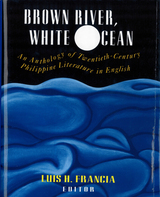 Brown River, White Ocean: An Anthology of Twentieth-Century Philippine Literature in English
Francia, Luis H
Rutgers University Press, 1993 English is often a primary literary language for Filipino writers--not only for those in the Philippines but for those resident in the US; both groups are included in this anthology of 31 stories and 108 poems documenting a tradition that began at the turn-of-the-century. Manila-born poet and writer Francia, an editor at the Village Voice, gathers and validates creative work that has had limited distribution not only here but in Asia. ``In the Philippine context, what is foreign and what is indigenous has always been a tricky and ultimately impossible subject,'' Francia writes in his introduction. ``Filipinos have unconsciously perfected the art of mixing the two up....'' Readers who expect Filipino English to have the unexpected inflections and inventiveness of Indian or Caribbean English will be disappointed: the Filipino writer uses standard American English as a native language, but spices it naturally with words form indigenous and adopted tongues: Tagalog, Spanish, Ilokano, etc. Stories look at unrequited passion (in which the sensual tropical ambiance is at odds with society's rules); village life; the different cultures that have settled in the archipelago--Chinese, Japanese, Spanish, Hindu Indian; and the consequences of military, colonial, and economic occupation. Both poems and stories consider the experience of Filipinos--some intellectual, some humble--in the US. Among the more familiar contributors: Carlos Bulosan, Jos‚ Garc¡a Villa, Jessica Hagedorn, and Ninotchka Rosca. While the prose selected here is more consistent in quality than the poetry, the poems seem more wide-ranging; like the fiction writers, the poets consider love, politics, and metaphysics but move as well into experimentation and the modernist realm. A satisfying and worthwhile project.
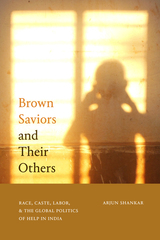 Brown Saviors and Their Others: Race, Caste, Labor, and the Global Politics of Help in India
Arjun Shankar
Duke University Press, 2023 In Brown Saviors and Their Others Arjun Shankar draws from his ethnographic work with an educational NGO to investigate the practices of “brown saviors”—globally mobile, dominant-caste, liberal Indian and Indian diasporic technocrats who drive India’s help economy. Shankar argues that these brown saviors actually reproduce many of the racialized values and ideologies associated with who and how to help that have been passed down from the colonial period, while masking other operations of power behind the racial politics of global brownness. In India, these operations of power center largely on the transnational labor politics of caste. Ever attentive to moments of discomfort and complicity, Shankar develops a method of “nervous ethnography” to uncover the global racial hierarchies, graded caste stratifications, urban/rural distinctions, and digital panaceas that shape the politics of help in India. Through nervous critique, Shankar introduces a framework for the study of the global help economies that reckons with the ongoing legacies of racial and caste capitalism.
 Brown Skin, White Masks
Hamid Dabashi
Pluto Press, 2011 In this unprecedented study, Hamid Dabashi provides a critical examination of the role that immigrant "comprador intellectuals" play in facilitating the global domination of American imperialism.
In his pioneering book about the relationship between race and colonialism, Black Skin, White Masks, Frantz Fanon explored the traumatic consequences of the sense of inferiority that colonized people felt, and how this often led them to identify with the ideology of the colonial agency. Brown Skin, White Masks picks up where Frantz Fanon left off. Dabashi extends Fanon’s insights as they apply to today's world.
Dabashi shows how intellectuals who migrate to the West are often used by the imperial powers to misrepresent their home countries. Just as many Iraqi exiles were used to justify the invasion of Iraq, Dabashi demonstrates that this is a common phenomenon, and examines why and how so many immigrant intellectuals help to sustain imperialism.
The book radically alters Edward Said’s notion of the “intellectual exile,” in order to show the negative impact of intellectual migration. Dabashi examines the ideology of cultural superiority, and provides a passionate account of how these immigrant intellectuals—rootless compradors, and guns for hire–continue to betray any notion of home or country in order to manufacture consent for imperial projects.
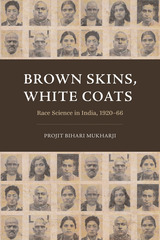 Brown Skins, White Coats: Race Science in India, 1920–66
Projit Bihari Mukharji
University of Chicago Press, 2022 A unique narrative structure brings the history of race science in mid-twentieth-century India to vivid life.
There has been a recent explosion in studies of race science in the twentieth and twenty-first centuries, but most have focused either on Europe or on North America and Australia. In this stirring history, Projit Bihari Mukharji illustrates how India appropriated and repurposed race science to its own ends and argues that these appropriations need to be understood within the national and regional contexts of postcolonial nation-making—not merely as footnotes to a Western history of “normal science.”
The book comprises seven factual chapters operating at distinct levels—conceptual, practical, and cosmological—and eight fictive interchapters, a series of epistolary exchanges between the Bengali author Hemendrakumar Ray (1888–1963) and the protagonist of his dystopian science fiction novel about race, race science, racial improvement, and dehumanization. In this way, Mukharji fills out the historical moment in which the factual narrative unfolded, vividly revealing its moral, affective, political, and intellectual fissures.
 Brown Threat: Identification in the Security State
Kumarini Silva
University of Minnesota Press, 2016 What is “brown” in—and beyond—the context of American identity politics? How has the concept changed since 9/11? In the most sustained examination of these questions to date, Kumarini Silva argues that “brown” is no longer conceived of solely as a cultural, ethnic, or political identity. Instead, after 9/11, the Patriot Act, and the wars in Iran, Iraq, and Afghanistan, it has also become a concept and, indeed, a strategy of identification—one rooted in xenophobic, imperialistic, and racist ideologies to target those who do not neatly fit or subscribe to ideas of nationhood. Interweaving personal narratives, ethnographic research, analyses of popular events like the Miss America pageant, and films and TV shows such as the Harold and Kumar franchise and Black-ish, Silva maps junctures where the ideological, political, and mediated terrain intersect, resulting in an appetite for all things “brown” (especially South Asian brown) by U.S. consumers, while political and nationalist discourses and legal structures (immigration, emigration, migration, outsourcing, incarceration) conspire to control brown bodies both within and outside the United States. Silva explores this contradictory relationship between representation and reality, arguing that the representation mediates and manages the anxieties that come from contemporary global realities, in which brown spaces, like India, Pakistan, and the Middle East pose key economic, security, and political challenges to the United States. While racism is hardly new, what makes this iteration of brown new is that anyone or any group, at any time, can be branded as deviant, as a threat.
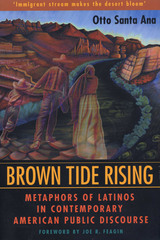 Brown Tide Rising: Metaphors of Latinos in Contemporary American Public Discourse
By Otto Santa Ana
University of Texas Press, 2002 2002 – Best Book on Ethnic and Racial Political Ideology and/or Political Theory – Organized Section on Race, Ethnicity, and Politics of the American Political Science Association "...awash under a brown tide...the relentless flow of immigrants..like waves on a beach, these human flows are remaking the face of America...." Since 1993, metaphorical language such as this has permeated mainstream media reporting on the United States' growing Latino population. In this groundbreaking book, Otto Santa Ana argues that far from being mere figures of speech, such metaphors produce and sustain negative public perceptions of the Latino community and its place in American society, precluding the view that Latinos are vested with the same rights and privileges as other citizens. Applying the insights of cognitive metaphor theory to an extensive natural language data set drawn from hundreds of articles in the Los Angeles Times and other media, Santa Ana reveals how metaphorical language portrays Latinos as invaders, outsiders, burdens, parasites, diseases, animals, and weeds. He convincingly demonstrates that three anti-Latino referenda passed in California because of such imagery, particularly the infamous anti-immigrant measure, Proposition 187. Santa Ana illustrates how Proposition 209 organizers broadcast compelling new metaphors about racism to persuade an electorate that had previously supported affirmative action to ban it. He also shows how Proposition 227 supporters used antiquated metaphors for learning, school, and language to blame Latino children's speech—rather than gross structural inequity—for their schools' failure to educate them. Santa Ana concludes by calling for the creation of insurgent metaphors to contest oppressive U.S. public discourse about minority communities.
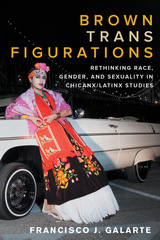 Brown Trans Figurations: Rethinking Race, Gender, and Sexuality in Chicanx/Latinx Studies
By Francisco J. Galarte
University of Texas Press, 2021 Honorable Mention for the National Women’s Studies Association's 2021 Gloria E. Anzaldúa Book Prize
2021 Finalist Best LGBTQ+ Themed Book, International Latino Book Awards
2022 John Leo & Dana Heller Award for Best Single Work, Anthology, Multi-Authored, or Edited Book in LGBTQ Studies, Popular Culture Association
The Alan Bray Memorial Book Prize, GL/Q Caucus, Modern Language Association (MLA)
2022 AAHHE Book of the Year Award, American Association of Hispanics in Higher Education Within queer, transgender, and Latinx and Chicanx cultural politics, brown transgender narratives are frequently silenced and erased. Brown trans subjects are treated as deceptive, unnatural, nonexistent, or impossible, their bodies, lives, and material circumstances represented through tropes and used as metaphors. Restoring personhood and agency to these subjects, Francisco J. Galarte advances “brown trans figuration” as a theoretical framework to describe how transness and brownness coexist within the larger queer, trans, and Latinx historical experiences. Brown Trans Figurations presents a collection of representations that reveal the repression of brown trans narratives and make that repression visible and palpable. Galarte examines the violent deaths of two transgender Latinas and the corresponding narratives that emerged about their lives, analyzes the invisibility of brown transmasculinity in Chicana feminist works, and explores how issues such as transgender politics can be imagined as part of Chicanx and Latinx political movements. This book considers the contexts in which brown trans narratives appear, how they circulate, and how they are reproduced in politics, sexual cultures, and racialized economies.
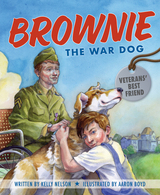 Brownie the War Dog: Veterans’ Best Friend
Kelly Nelson
Wisconsin Historical Society Press, 2024 The true story of a family pet who served overseas in World War II and went on to become a friend to wounded veterans back home.
During World War II, families all over the country volunteered their pet dogs to serve in the Dogs for Defense Program. This beautifully illustrated picture book tells the true story of a family and their beloved dog, Brownie, who served alongside the troops and returned home to become a companion to wounded vets.
At first Brownie's boy, Oren, isn’t sure he wants to send his boisterous best friend to war. But with the help of his parents, Oren decides that Brownie could do a lot of good. Brownie serves faithfully on the frontlines until an injury sends him home from the Pacific islands. His family welcomes him back with open arms. But Brownie is not content sitting around at home—he needs a job. He begins to accompany Oren's mother to the Veterans Home in King, Wisconsin, where she works. There, Brownie finds a way to serve his fellow veterans just as he served his fellow soldiers.
Lovingly illustrated by Aaron Boyd, this heartwarming story gives poignant new meaning to the phrase "man's best friend" and will be a favorite for children and their grownups.
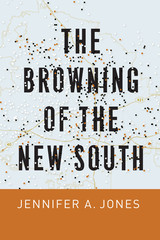 The Browning of the New South
Jennifer A. Jones
University of Chicago Press, 2019 Studies of immigration to the United States have traditionally focused on a few key states and urban centers, but recent shifts in nonwhite settlement mean that these studies no longer paint the whole picture. Many Latino newcomers are flocking to places like the Southeast, where typically few such immigrants have settled, resulting in rapidly redrawn communities. In this historic moment, Jennifer Jones brings forth an ethnographic look at changing racial identities in one Southern city: Winston-Salem, North Carolina. This city turns out to be a natural experiment in race relations, having quickly shifted in the past few decades from a neatly black and white community to a triracial one. Jones tells the story of contemporary Winston-Salem through the eyes of its new Latino residents, revealing untold narratives of inclusion, exclusion, and interracial alliances. The Browning of the New South reveals how one community’s racial realignments mirror and anticipate the future of national politics.
 Browning’s Beginnings: The Art of Disclosure
Herbert F. Tucker Jr.
University of Minnesota Press, 1980
Browning's Beginnings was first published in 1980. Minnesota Archive Editions uses digital technology to make long-unavailable books once again accessible, and are published unaltered from the original University of Minnesota Press editions.
Browning's Beginnings offers a fresh approach to the poet who, among major Victorians, has proved at once the most congenial and most inscrutable to modern readers. Drawing on recent developments in literary theory and in the criticism of romantic poetry, Herbert
F. Tucker, Jr., argues that Browning's stylistic "obscurity" is the result of a principled poetics of evasion. This art of disclosure, in deferring formal and semantic finalities, constitutes an aesthetic counterpart to his open-ended moral philosophy of"incompleteness," Browning's poems, like his enormously productive career, find their motivation and sustenance in his optimistic love of the future—a love that is indistinguishable from his lifelong fear that there will be nothing left to say.
The opening chapters trace the workings of Browning's art of disclosure with extensive and original interpretations of the unduly neglected early poems, Pauline, Paracelsus, and Sordello, and place special emphasis on Browning's attitudes toward poetic tradition and language. A chapter on Browning's attitudes toward poetic tradition and language. A chapter on Browning's plays identifies dynamics of representation in Pippa Passes, Strafford,and King Victor and King Charles. Tucker discusses the pervasive analogy between Browning's ideas about poetic representation and about representation in its erotic and religious aspects, and shows how the early poems and plays illustrate correlative developments in poetics and in the exploration and dramatic rendering of human psychology. The remaining chapters follow the poetic psychology of Browning to its culmination in the great poems of his middle years; exemplary readings of selected dramatic lyrics and monologues suggest that the ways of meaning in Browning's mature work variously bear out the sense of endlessness or perpetual initiation that is central to his poetic beginnings.
Tucker thus contends that the "romantic" and the "Victorian" Browning have more in common than is generally supposed, and his book should appeal to students of both periods. Its discussion of general literary issues - poetic influence, closure, representation, and meaning - in application to particular texts should further recommend Browning's Beginnings to the nonspecialist reader interested in poetry and poetic theory.
 Browning’s Youth
John Maynard
Harvard University Press, 1977 This will stand as the definitive account of Robert Browning's development to maturity as a man and poet. Drawing on all available material, including important new manuscript findings, John Maynard reconstructs the circumstances of Browning's youth—his ancestry, his attractive and eccentric family, life in the new suburban London, his early understanding of himself and the world around him, his rich cultural education at home and with his teachers and friends and gives us a warm and convincing picture of Browning's boyhood and growth. Maynard traces Browning's early efforts to define his role as a poet, providing a full critical interpretation of his relation to the Romantics, especially the peculiarly powerful influence Shelley exerted on his early work.
The development of Browning's mind is examined in his response to his early schooling and private tutoring at home, his year at the new London University, and his decision to drop out of the university and all conventional career plans. The history concludes with a survey of Browning's reading in the period of self-education that initiated his mature work as a major poet of our modern era. Maynard's intention throughout is not to provide a day-to-day account of a boy and young man's life, but to flesh out the larger epic of a gifted child's formation in his environment, and the emergence of his own direction out of the context of his family, society, and literary culture. In so doing he has achieved a model case study of the development of a young man's mind and of a young poet's sense of identity as a creative artist. And he has recaptured the social, physical, and cultural ambiance of middle-class London in the early nineteenth century. It is a story told with grace and critical good sense.
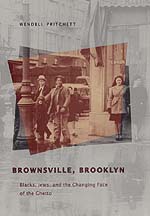 Brownsville, Brooklyn: Blacks, Jews, and the Changing Face of the Ghetto
Wendell E. Pritchett
University of Chicago Press, 2001 From its founding in the late 1800s through the 1950s, Brownsville, a section of eastern Brooklyn, was a white, predominantly Jewish, working-class neighborhood. The famous New York district nurtured the aspirations of thousands of upwardly mobile Americans while the infamous gangsters of Murder, Incorporated controlled its streets. But during the 1960s, Brownsville was stigmatized as a black and Latino ghetto, a neighborhood with one of the city's highest crime rates. Home to the largest concentration of public housing units in the city, Brownsville came to be viewed as emblematic of urban decline. And yet, at the same time, the neighborhood still supported a wide variety of grass-roots movements for social change.
The story of these two different, but in many ways similar, Brownsvilles is compellingly told in this probing new work. Focusing on the interaction of Brownsville residents with New York's political and institutional elites, Wendell Pritchett shows how the profound economic and social changes of post-World War II America affected the area. He covers a number of pivotal episodes in Brownsville's history as well: the rise and fall of interracial organizations, the struggles to deal with deteriorating housing, and the battles over local schools that culminated in the famous 1968 Teachers Strike. Far from just a cautionary tale of failed policies and institutional neglect, the story of Brownsville's transformation, he finds, is one of mutual struggle and frustrated cooperation among whites, blacks, and Latinos.
Ultimately, Brownsville, Brooklyn reminds us how working-class neighborhoods have played, and continue to play, a central role in American history. It is a story that needs to be read by all those concerned with the many challenges facing America's cities today.
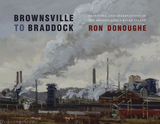 Brownsville to Braddock: Paintings and Observations of the Monongahela River Valley
Ron Donoughe
University of Pittsburgh Press, 2021 The Monongahela River Valley in Southwestern Pennsylvania is steeped with a rich industrial history. Starting with iron, brass, tin, and glass production, the river towns—from Brownsville to Braddock—ultimately helped make Pittsburgh the one-time steelmaking capital of the world. With this industrial legacy in mind, artist Ron Donoughe set out to document the small towns in this region, one painting at a time. Over a twelve-month period, he explored the forgotten towns of Brownsville, California, Donora, Charleroi, Monessen, Monongahela, Clairton, Duquesne, McKeesport, Braddock, and the Monongahela River itself. Brownsville to Braddock provides key insight on a forty-mile stretch of river towns. The post-industrial economy led to a decline in manufacturing, and with it, substantial job losses. These towns face many significant challenges, yet there is still beauty to be found. Donoughe finds it as he paints the human spirit through the mills, factories, parks, and homes. The people he meets share their stories of family joy and sorrows, along with a genuine love for the area they call the “Mon Valley.”
Brownwood: Poems
Lawrence Bridges
Tupelo Press, 2016 Brownwood, like Berryman’s Henry, is a triad (I, He, You), an “other” character, con-structed within a real-life geography in an arsenal of time and place. Lawrence Bridges offers Polaroid graphics of his protagonist’s identity in the thick of our culture, amid the changing rules of fate and folly. As Elena Karina Byrne observes in her Foreword, “Brownwood is full of angst, wry humor, and sarcasm; he’s a lost twin, doppelganger, living in a melancholy place [and] this book’s poetic plot … arrives with cinematographic aplomb.” Bridges’s third volume of poems is like an autobiography of one stuck inside the vessel of who he is: “Feared as a monster, tame as a clown.”
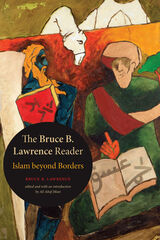 The Bruce B. Lawrence Reader: Islam beyond Borders
Bruce B. Lawrence. Edited and with an Introduction by Ali Altaf Mian
Duke University Press, 2020 Over the course of his career, Bruce B. Lawrence has explored the central elements of Islamicate civilization and Muslim networks. This reader assembles more than two dozen of Lawrence's key writings, among them analyses of premodern and modern Islamic discourses, practices, and institutions and methodological reflections on the contextual study of religion. Six methodologies serve as the organizing rubric: theorizing Islam, revaluing Muslim comparativists, translating Sufism, deconstructing religious modernity, networking Muslims, and reflecting on the Divine. Throughout, Lawrence attributes the resilience of Islam to its cosmopolitan character and Muslims' engagement in cross-cultural dialogue. Several essays also address the central role of institutional Sufism in various phases and domains of Islamic history. The volume concludes with Lawrence's reflections on Islam's spiritual and aesthetic resources in the context of global comity. Modeling what it means to study Islam beyond political and disciplinary borders as well as a commitment to linking empathetic imagination with critical reflection, this reader presents the broad arc of Lawrence's prescient contributions to the study of Islam.
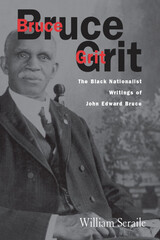 Bruce Grit: The Black Nationalist Writings Of
William Seraile
University of Tennessee Press, 2011 John Edward Bruce (1856–1924) witnessed the dying days of American slavery, the turbulence of the Civil War and Reconstruction, the rise of Jim Crow, and the development of American imperialism. As a journalist, historian, and bibliophile, he was a major figure in African American history and politics during his lifetime. In this first intellectual biography of Bruce—a prolific writer and correspondent who published most frequently under the name Bruce Grit—William Seraile explores Bruce’s tireless advocacy on behalf of African peoples everywhere, particularly in the United States.
Bruce wrote for more than a hundred different newspapers and founded several of them, including the Argus, the Sunday Item, and Washington Grit in Washington, D.C., and the Weekly Standard in Yonkers, New York. A cultural nationalist and Pan-Africanist, Bruce was known as a race-first proponent. In his quest to see that African Americans were granted full political and civil rights, he championed the contributions of African civilization to western culture as a whole, amassing an impressive collection of books, articles, and other scholarly documentation. For most of his career, he believed that African Americans would eventually be able to claim an equal share of the American Dream. However, by the end of his life, he became disillusioned and concluded that the best hope for their future lay in emigration back to Africa.
Seraile traces Bruce’s shifting strategies and tactics and his alliances with famous contemporaries such as Arthur A. Schomburg, Carter G. Woodson, Booker T. Washington, and Marcus Garvey. He argues that underlying all of Bruce’s work was what would become his greatest legacy: his promotion of history and culture of African people in the diaspora as valuable fields of study.
The Author: William Seraile is professor of black studies at Lehman College. He is the author of Voice of Dissent: Theophilus Gould Steward and Black America, Fire in His Heart: Bishop Benjamin Tucker Tanner and the A.M.E. Church, and New York’s Black Regiments During the Civil War.
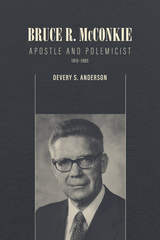 Bruce R. McConkie: Apostle and Polemicist, 1915–1985
Anderson, Devery S.
Signature Books, 2024 Although he served as an apostle in the Church of Jesus Christ of Latter-day Saints for only twelve and a half years, Bruce R. McConkie’s twenty-six years’ service in the First Council of Seventy had already made him a household name within the church. Called to full-time church service at age thirty-one, McConkie quickly gained a reputation as a theologian and doctrinal teacher. He became a prolific writer, and his controversial book, Mormon Doctrine, remained a bestseller for decades. His writing style, dogmatic approach, and quickness to reprimand others he believed in error made him many enemies, while others endeared themselves to him because of those very traits. McConkie the man was far more complex than the serious and focused general authority most church members saw and heard at the pulpit. Those who knew him best experienced his profound sense of humor. His passion for jogging, rock hounding, and jewelry making occupied much of his free time. Those who witnessed his final address delivered days before his death felt compassion toward him, no matter how they had always viewed him as a writer, speaker, or leader. Truly, to understand Bruce R. McConkie one must look closely at the entire picture.
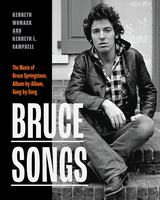 Bruce Songs: The Music of Bruce Springsteen, Album-by-Album, Song-by-Song
Kenneth Womack
Rutgers University Press, 2024 Winner, 2025 RUSA Outstanding Reference Award
Bruce Songs is an authoritative guide that offers an in-depth exploration of Bruce Springsteen's musical legacy. Covering Springsteen's entire discography, from Greetings from Asbury Park, N.J. to Only the Strong Survive, this unique book combines historical context, literary analysis, and meticulous research.
Unlike any other resource, it provides detailed analyses of each album, essays on their historical significance, and a chronological examination of every studio song. Discover the stories behind the recordings and gain insight into Springsteen's creative process.
Rich with contemporary reviews, insider accounts, photographs, and special sections highlighting pivotal moments and key figures, Bruce Songs is an indispensable companion for fans and scholars. It offers an immersive journey through the music of the Boss, making it an essential read for anyone captivated by Springsteen's enduring musical legacy.
Bruegel, or the Workshop of Dreams: A Novel
Claude-Henri Rocquet
University of Chicago Press, 1991 Claude-Henri Rocquet—poet, playwright, and critic—has marshalled the full range of his talents to create a dazzling historical novel about the artist Peter Bruegel the Elder. To the few facts we have—Bruegel died in 1569 around the age of fifty; he lived in Antwerp and in Brussels; his work was much admired—Rocquet adds his own speculations on the sights, smells, and textures of Bruegel's world, on the artist's innermost feelings and intimate conversations, on his spiritual life and its possible translation on the artist's canvas.
Bruges-la-Morte
Georges Rodenbach
University of Scranton Press, 2007 Bruges-la-Morte is the story of one man’s obsession with his dead wife and his soul’s struggle between an alluring young dancer—his late wife’s double—and the beautiful, melancholy city of Bruges, whose moody atmosphere mirrors his mourning. This hallmark of Belgian symbolist literature, first translated into English by Philip Mosley to great acclaim twenty years ago, is now back in print for the next generation of English readers to discover.
With penetrating psychological force and richly metaphorical language, Bruges-la-Morte draws a haunting picture of love, grief, and murder in what has become a “dead city,” severely Catholic and once proud. The source of the famous opera Die tote Stadt and endless inspiration for Belgian and French artists, this novella will enthrall both the imaginations and heartstrings of an Anglophile audience.
The Bruise
Magdalena Zurawski
University of Alabama Press, 2008 Winner of Ronald Sukenick Prize for Innovative Fiction
The Bruise is a prize-winning novel of imperative voice and raw sensation. In the sterile dormitories and on the quiet winter greens of an American university, a young woman named M— deals with the repercussions of a strange encounter with an angel, one that has left a large bruise on her forehead. Was the event real or imagined? The bruise does not disappear, forcing M— to confront her own existential fears and her wavering desire to tell the story of her imagination. As a writer, M— is breathless, desperate, and obsessive, questioning the mutations and directions of her words while writing with fevered immediacy. Using rhythmic language, suffused with allusions to literature and art, Magdalena Zurawski recasts the bildungsroman as a vibrant and moving form.
Bruja: A Dreamoir
Wendy C. Ortiz
Northwestern University Press, 2025 The dreamscape of a haunted and hopeful woman, back in print
Dubbed a “dreamoir,” Bruja is a bold and harrowing journey through the dream worlds of Wendy C. Ortiz. Sister memoir to Hollywood Notebook, it catalogs the happenings of the night: strange visions of the past warped by present-day inklings; animals running loose, never where they should be; familiar nature and architecture made malleable and new. Ortiz’s subconscious is bared in full on these pages as the author interrogates her histories. We bravely adventure into new literary form, walking the parallel plane of Ortiz’s waking life alongside her. Where the self is anchored in the deepest recesses of the mind, Ortiz invites us to push the boundaries of the subconscious and enter into the dreamoir.
 The Brummer Collection of Medieval Art: Duke University Museum of Art
Caroline Bruzelius and with Jill Meredith
Duke University Press, 1991 The Brummer Collection of Medieval Art in the Duke University Museum of Art is one of the finest to be found in any American university museum. It is remarkable for its breadth and the variety of objects represented, with works varying in scale from monumental stone pieces to small-scale objects in wood, ivory, or metal, and ranging from the seventh to eighth centuries through the sixteenth century. This fine catalog makes available for the first time this rich but little-known collection. Five studies by leading art scholars focus on key works in the collection and contribute to a new understanding of the origins of many of the pieces. Two introductory essays comment on the character of the collection as a whole, its acquisition by Duke University, and its conservation. Finally, the catalog section discusses the more important pieces in the collection and is followed by a checklist of entries and smaller photographs of all other objects. Contributors. Ilene H. Forsyth, Jean M. French, Dorothy F. Glass, Dieter Kimpel, Jill Meredith, Linda S. Roundhill
Bruna and Her Sisters in the Sleeping City
Alicia Yánez Cossío, Translated from the Spanish by Kenneth J. A. Wishnia
Northwestern University Press, 1999 Bruna and Her Sisters in the Sleeping City chronicles a wealthy, eccentric family with an ancient presence in northern Ecuador. Bruna’s past is dominated by ghosts and scandals that linger in the old family home in the mountains. As she pieces together the outrageous adventures of her ancestors and relatives, Bruna emerges from the husk of tradition to achieve a balance between the best of the old and the new. Tracing the complete history of Ecuador from the Conquest through the 1970s, the book is a seriocomic examination of the tensions and conflicts inherent in a world that wavers between its oppressive colonial past and its future as a modern society obsessed with material gain.
 Brunei: From the Age of Commerce to the 21st Century
Marie-Sybille de Vienne
National University of Singapore Press, 2015 Now an energy-rich sultanate, for centuries a important trading port in the South China Sea, Brunei has taken a different direction than its Persian Gulf peers. Immigration is restricted, and Brunei’s hydrocarbon wealth is invested conservatively, mostly outside the country.
Today home to some 393,000 inhabitants and comprising 5,765 square kilometers in area, Brunei first appears in the historical record at the end of the 10th century. After the Spanish attack of 1578, Brunei struggled to regain and expand its control on coastal West Borneo and to remain within the trading networks of the South China Sea. It later fell under British sway, and a residency was established in 1906, but it took the discovery of oil in Seria in 1929 before the colonial power began to establish the bases of a modern state.
Governed by an absolute monarchy, Bruneians today nonetheless enjoy a high level of social protection and rule of law. Ranking second (after Singapore) in Southeast Asia in terms of standards of living, the sultanate is implementing an Islamic penal code for the first time of its history. Focusing on Brunei’s political economy, history and geography, this book aims to understand the forces behind Brunei’s to-and-fro of tradition and modernisation.
Brunel
Annabel Gillings
Haus Publishing, 2006 Isambard Kingdom Brunel was the outstanding entrepreneurial Victorian engineer. He helped construct the Thames Tunnel, build the Great Western Railway and its terminus, Paddington Station, but his boldest endeavours were three gigantic ships.
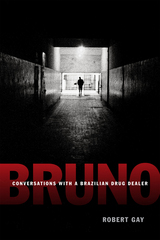 Bruno: Conversations with a Brazilian Drug Dealer
Robert Gay
Duke University Press, 2015 In the 1980s a poor farmer's son from Recife, Brazil, joined the Brazilian navy and began selling cocaine. After his arrest in Rio de Janeiro he spent the next eight years in prison, where he joined the Comando Vermelho criminal faction and eventually became one of its leaders. Robert Gay tells this young man's dramatic and captivating story in Bruno. In his shockingly candid interviews with Gay, Bruno provides many insights into the criminal world in which he lived: details of day-to-day prison life; the inner workings of the Brazilian drug trade; the structure of criminal factions; and the complexities of the relationships and links between the prisons, drug trade, gangs, police, and favelas. And most stunningly, Bruno's story suggests that Brazilian mismanagement of the prison system directly led to the Comando Vermelho and other criminal factions' expansion into Rio's favelas, where their turf wars and battles with police have terrorized the city for over two decades.
 Bruno Latour: Reassembling the Political
Graham Harman
Pluto Press, 2014 Bruno Latour, the French sociologist, anthropologist and long-established superstar in the social sciences is revisited in this pioneering account of his ever-evolving political philosophy. Breaking from the traditional focus on his metaphysics, most recently seen in Harman’s book Prince of Networks, the author instead begins with the Hobbesian and even Machiavellian underpinnings of Latour’s early period encountering his shift towards Carl Schmitt then finishing with his final development into the Lippmann / Dewey debate. Harman brings these twists and turns into sharp focus in terms of Latour’s personal political thinking.
Along with Latour’s most important articles on political themes, the book chooses three works as exemplary of the distinct periods in Latour’s thinking: The Pasteurization of France, Politics of Nature, and the recently published An Inquiry Into Modes of Existence, as his conception of politics evolves from a global power struggle between individuals, to the fabrication of fragile parliamentary networks, to just one mode of existence among many others.
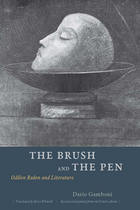 The Brush and the Pen: Odilon Redon and Literature
Dario Gamboni
University of Chicago Press, 2011 French symbolist artist Odilon Redon (1840–1916) seemed to thrive at the intersection of literature and art. Known as “the painter-writer,” he drew on the works of Poe, Baudelaire, Flaubert, and Mallarmé for his subject matter. And yet he concluded that visual art has nothing to do with literature. Examining this apparent contradiction, The Brush and the Pen transforms the way we understand Redon’s career and brings to life the interaction between writers and artists in fin-de-siècle Paris. Dario Gamboni tracks Redon’s evolution from collaboration with the writers of symbolism and decadence to a defense of the autonomy of the visual arts. He argues that Redon’s conversion was the symptom of a mounting crisis in the relationship between artists and writers, provoked at the turn of the century by the growing power of art criticism that foreshadowed the modernist separation of the arts into intractable fields. In addition to being a distinguished study of this provocative artist, The Brush and the Pen offers a critical reappraisal of the interaction of art, writing, criticism, and government institutions in late nineteenth-century France.
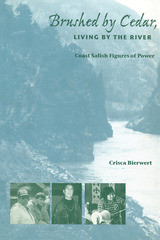 Brushed by Cedar, Living by the River: Coast Salish Figures of Power
Crisca Bierwert
University of Arizona Press, 1999 A brilliant, experimental ethnography, Brushed by Cedar is destined to change the way anthropologists write about the people they befriend.
Crisca Bierwert has created a fresh poststructural ethnography that offers new insights into Coast Salish cultures. Arguing against the existence of a master narrative, she presents her understanding of these Native American peoples of Washington state and British Columbia, Canada, through poetic bricolage, offering the reader a pastiche of rich cultural images. Bierwert employs postmodern literary and social analyses to examine many aspects of Salish culture: legends and their storytellers; domestic violence; longhouse ceremonies; the importance and power of place; and disputes over fishing rights. Her reflections overlap as a dialogue would, weaving throughout the book significant threads of Salish knowledge and creating a nonauthoritative text that nonetheless speaks knowingly.
This book represents the future of contemporary anthropology. Unlike traditional ethnography, it makes no attempt to portray a complete picture of the Coast Salish. Instead, Bierwert utilizes a critical and diffuse approach that defies colonial, syncretic, and hegemonic structures and applies advanced literary theory to the creation of ethnography.
Brushed by Cedar is an important guideline for anyone who writes about other cultures and will be expecially useful to classes in the methodology and history of ethnography, as well as to scholars specializing in Native American studies or oral literatures.
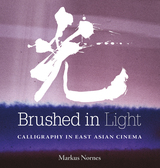 Brushed in Light: Calligraphy in East Asian Cinema
Markus Nornes
University of Michigan Press, 2021 Drawing on a millennia of calligraphy theory and history, Brushed in Light examines how the brushed word appears in films and in film cultures of Korea, Japan, Taiwan, Hong Kong, and PRC cinemas. This includes silent era intertitles, subtitles, title frames, letters, graffiti, end titles, and props. Markus Nornes also looks at the role of calligraphy in film culture at large, from gifts to correspondence to advertising. The book begins with a historical dimension, tracking how calligraphy is initially used in early cinema and how it is continually rearticulated by transforming conventions and the integration of new technologies. These chapters ask how calligraphy creates new meaning in cinema and demonstrate how calligraphy, cinematography, and acting work together in a single film. The last part of the book moves to other regions of theory. Nornes explores the cinematization of the handwritten word and explores how calligraphers understand their own work.
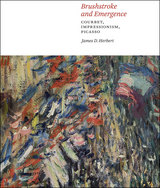 Brushstroke and Emergence: Courbet, Impressionism, Picasso
James D. Herbert
University of Chicago Press, 2015 No pictorial device in nineteenth-century French painting more clearly represented the free-ranging self than the loose brushstroke. From the romantics through the impressionists and post-impressionists, the brushstroke bespoke autonomous artistic individuality and freedom from convention.
Yet the question of how much we can credit to the individual brushstroke is complicated—and in Brushstroke and Emergence, James D. Herbert uses that question as a starting point for an extended essay that draws on philosophy of mind, the science of emergence, and art history. Brushstrokes, he reminds us, are as much creatures of habit and embodied experience as they are of intent. When they gather in great numbers they take on a life of their own, out of which emerge complexity and meaning. Analyzing ten paintings by Courbet, Manet, Cézanne, Monet, Seurat, and Picasso, Herbert exposes vital relationships between intention and habit, the singular and the complex. In doing so, he uncovers a space worthy of historical and aesthetic analysis between the brushstroke and the self.
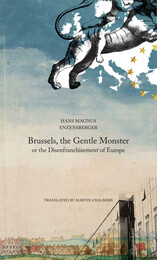 Brussels, the Gentle Monster: or the Disenfranchisement of Europe
Hans Magnus Enzensberger
Seagull Books, 2011 The inner workings of the European Union are as much a mystery to those living within its confines as they are to those of us who reside elsewhere. The Brussels bureaucracy that sets many of the EU’s policies feels remote to its citizens, yet the influence of its decisions can extend worldwide and throughout the global marketplace. In this timely and insightful essay, Hans Magnus Enzensberger blends reportage, argument, and analysis in order to make sense of the EU’s present political and economic roles and examine the EU’s origins and inherent contradictions. In Enzensberger’s view, Europe is involved in a project without precedent—the first non-violent form of post-democratic governance, which is trying to abolish the diversity of Europe and impose a regime that is not accountable to its citizens. Its often bizarre and arbitrary rules amount to a soft but relentless guardianship, dictating how half a billion people should live their lives regardless of their own political opinions and traditions. Enzensberger here offers a strategy for approaching this modern monster—at once gentle and giant, friend and foe. Praise for Enzensberger “How should one cope with Germany? Let’s ask Hans Magnus Enzensberger. . . . One can only marvel at his permanent alertness, his tone of cold enragement, the dimensions of his hunger for experience, most of all however, one can only marvel at his sense of important issues. For 50 years, time and again Enzensberger has posed the right questions to German society. . . . No one should ever believe Enzensberger is on his side. Whenever someone makes a clear distinction between Good and Evil, Enzensberger will jump out of his cover and shout: It’s not that simple.”—Florian Illies, Die Zeit
 Brussels Versus the Beltway: Advocacy in the United States and the European Union
Christine Mahoney
Georgetown University Press, 2008 This book presents the first large-scale study of lobbying strategies and outcomes in the United States and the European Union, two of the most powerful political systems in the world. Every day, tens of thousands of lobbyists in Washington and Brussels are working to protect and promote their interests in the policymaking process. Policies emanating from these two spheres have global impacts—they set global standards, they influence global markets, and they determine global politics. Armed with extensive new data, Christine Mahoney challenges the conventional stereotypes that attribute any differences between the two systems to cultural ones—the American, a partisan and combative approach, and the European, a consensus-based one. Mahoney draws from 149 interviews involving 47 issues to detail how institutional structures, the nature of specific issues, and characteristics of the interest groups combine to determine decisions about how to approach a political fight, what arguments to use, and how to frame an issue. She looks at how lobbyists choose lobbying tactics, public relations strategies, and networking and coalition activities. Her analysis demonstrates that advocacy can be better understood when we study the lobbying of interest groups in their institutional and issue context. This book offers new insights into how the process of lobbying works on both sides of the Atlantic.
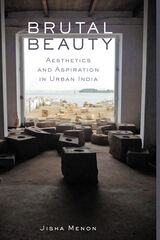 Brutal Beauty: Aesthetics and Aspiration in Urban India
Jisha Menon
Northwestern University Press, 2022 Brutal Beauty: Aesthetics and Aspiration in Urban India follows a postcolonial city as it transforms into a bustling global metropolis after the liberalization of the Indian economy. Taking the once idyllic “garden city” of Bangalore in southern India as its point of departure, the book explores how artists across India and beyond foreground neoliberalism as a “structure of feeling” permeating aesthetics, selfhood, and everyday life.
Jisha Menon conveys the affective life of the city through multiple aesthetic projects that express a range of urban feelings, including aspiration, panic, and obsolescence. As developers and policymakers remodel the city through tumultuous construction projects, urban beautification, privatization, and other templated features of “world‑class cities,” urban citizens are also changing—transformed by nostalgia, narcissism, shame, and the spaces where they dwell and work. Sketching out scenes of urban aspiration and its dark underbelly, Menon delineates the creative and destructive potential of India’s lurch into contemporary capitalism, uncovering the interconnectedness of local and global power structures as well as art’s capacity to absorb and critique liberalization’s discontents. She argues that neoliberalism isn’t just an economic, social, and political phenomenon; neoliberalism is also a profoundly aesthetic project.
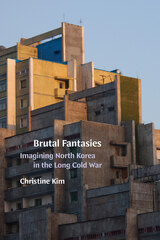 Brutal Fantasies: Imagining North Korea in the Long Cold War
Christine Kim
Duke University Press, 2025 In Brutal Fantasies, Christine Kim examines how Western cultural representations of North Korea depend on fantasies of the inhuman. Drawing on films, fiction, and defectors’ life writings from the last two decades, Kim analyzes how these representations construct North Korea as a site of brutality and inhumanity. She recasts these stories through Asian American and global Asian frameworks that move beyond common Cold War binaries to critique how US imperialism persists in global understandings of North Korea. Kim shows how human rights discourses simultaneously instrumentalize and dehumanize North Korea while demonstrating that North Korea is a site of contradiction that complicates Western interpretive constraints. She also explores the Korean diaspora’s complex relationship with North Korea and highlights the vulnerability and marginalization of diasporic subjects. In so doing, Kim pulls back the veil on prevailing cultural myths enshrouding North Korea, offering alternative ways of understanding its role in global and regional imaginaries.
Brutal: Manhood and the Exploitation of Animals
Brian Luke
University of Illinois Press, 2007 The first integrated theory of manhood's relationship to hunting, animal experimentation, and animal sacrifice In Brutal, Brian Luke explores the gender divide over our treatment of animals, exposing the central role of masculinity in systems of animal exploitation. Employing philosophical analysis, reference to empirical research, and relevant personal experience, Luke develops a new theory of how exploitative institutions do not work to promote human flourishing but instead merely act as support for a particular construction of manhood. The resulting work is of significant interest both to animal advocates and opponents of sexism.
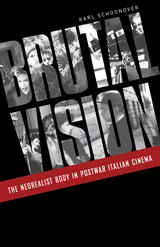 Brutal Vision: The Neorealist Body in Postwar Italian Cinema
Karl Schoonover
University of Minnesota Press, 2012 Film history identifies Italian neorealism as the exemplar of national cinema, a specifically domestic response to wartime atrocities. Brutal Vision challenges this orthodoxy by arguing that neorealist films—including such classics as Rome, Open City; Paisan; Shoeshine; and Bicycle Thieves—should be understood less as national products and more as complex agents of a postwar reorganization of global politics. For these films, cinema facilitates the liberal humanist sympathy required to usher in a new era of world stability. In his readings of crucial films and newly discovered documents from the archives of neorealism’s international distribution, Karl Schoonover reveals how these films used images of the imperiled body to reconstitute the concept of the human and to recalibrate the scale of human community. He traces how Italian neorealism emerges from and consolidates the transnational space of the North Atlantic, with scenarios of physical suffering dramatizing the geopolitical stakes of a newly global vision. Here we see how—in their views of injury, torture, and martyrdom—these films propose a new mode of spectating that answers the period’s call for extranational witnesses, makes the imposition of limited sovereignty palatable, and underwrites a new visual politics of liberal compassion that Schoonover calls brutal humanism. These films redefine moviegoing as a form of political action and place the filmgoer at the center of a postwar geopolitics of international aid. Brutal Vision interrogates the role of neorealism’s famously heart-wrenching scenes in a new global order that requires its citizenry to invest emotionally in large-scale international aid packages, from the Marshall Plan to the liberal charity schemes of NGOs. The book fundamentally revises ideas of cinematic specificity, the human, and geopolitical scale that we inherit from neorealism and its postwar milieu—ideas that continue to set the terms for political filmmaking today.
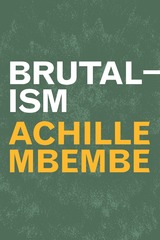 Brutalism
Achille Mbembe
Duke University Press, 2024 In Brutalism, eminent social and critical theorist Achille Mbembe invokes the architectural aesthetic of brutalism to describe our moment, caught up in the pathos of demolition and production on a planetary scale. Just as brutalist architecture creates an affect of overwhelming weight and destruction, Mbembe contends that contemporary capitalism crushes and dominates all spheres of existence. In our digital, technologically focused era, capitalism has produced a becoming-artificial of humanity and the becoming-human of machines. This blurring of the natural and artificial presents a planetary existential threat in which contemporary society’s goal is to precipitate the mutation of the human species into a condition that is at once plastic and synthetic. Mbembe argues that Afro-diasporic thought presents the only solution for breaking the totalizing logic of contemporary capitalism: repairing that which is broken, developing a new planetary consciousness, and reforming a community of humans in solidarity with all living things.
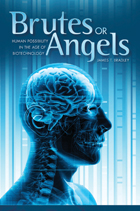 Brutes or Angels: Human Possibility in the Age of Biotechnology
James T. Bradley
University of Alabama Press, 2013 A guide to the rapidly progressing Age of Biotechnology, Brutes or Angels provides basic information on a wide array of new technologies in the life sciences, along with the ethical issues raised by each
With stem cell research, Dolly the cloned sheep, in vitro fertilization, age retardation, and pharmaceutical mind enhancement, humankind is now faced with decisions that it has never before had to consider. The thoughtfulness, or lack of it, that we bring to those decisions will largely determine the future character of the living world.
Brutes or Angels will facilitate informed choice making about the personal use of biotechnologies and the formulation of public policies governing their development and use. Ten biotechnologies that impact humans are considered: stem cell research, embryo selection, human genomics, gene therapies, human reproductive cloning, age retardation, cognition enhancement, the engineering of nonhuman organisms, nanobiology, and synthetic biology.
With deft and assured use of metaphors, analogies, diagrams, and photographs, James T. Bradley introduces important biological principles and the basic procedures used in biotechnology. Various ethical issues--personhood, personal identity, privacy, ethnic discrimination, distributive justice, authenticity and human nature, and the significance of mortality in the human life cycle--are presented in a clear and unbiased manner. Personal reflection and group dialogue are encouraged by questions at the end of each chapter, making this book not only a general guide to better informed and nuanced thinking on these complex and challenging topics but also an appropriate text for bioethics courses in university science departments and for adult education classes.
Standing at the beginning of the twenty-first century, with burgeoning abilities to enhance and even create life in ways unimaginable just a few decades ago, humans have an awesome responsibility to themselves and other species. Brutes or Angels invites us to engage each other in meaningful dialogue by listening, gathering information, formulating thoughtful views, and remaining open to new knowledge and ethical argumentation.
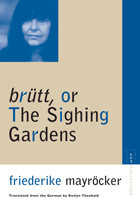 brutt, or The Sighing Gardens
Friederike Mayrocker
Northwestern University Press, 2007 brütt, or The Sighing Gardens is the hallucinatory tale of an obsessive writer’s love affair late in life as told through the daily journal entries of the writer—a montage of relentless observation interspersed with found materials from newspaper articles, literature, and private correspondence. The process of aging and the process of writing are two persistent and carefully intertwined themes, though it is apparent that plot and theme are subordinate to the linguistic experiments that Friederike Mayröcker performs as she explores them.
Mayröcker is known for crossing the boundaries of literary forms and in her prose work she creates a hypnotic, slurred narrative stream that is formally seamless while simultaneously overstepping all the bounds of grammar and style. She is always pushing to expose the limits of language and explore its experimental potential, seeking a re-ordering of the world through the re-ordering of words. Her multilayered texts are reminiscent of the traditions of Surrealism and Dadaism and display influences from the works of Beckett, Hölderlin, Freud, and Barthes. Yet, much of Mayrocker’s writing simply has no corollary and the experience of reading Roslyn Theobald’s brilliant translation grants the English-speaking audience an unforgettable encounter with this completely original work.
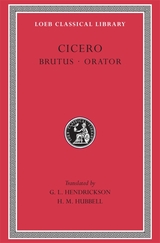 Brutus. Orator
Cicero
Harvard University Press The statesman on the history and practice of Roman oratory.
Cicero (Marcus Tullius, 106–43 BC), Roman lawyer, orator, politician, and philosopher, of whom we know more than of any other Roman, lived through the stirring era that saw the rise, dictatorship, and death of Julius Caesar in a tottering republic. In his political speeches especially and in his correspondence we see the excitement, tension and intrigue of politics and the part he played in the turmoil of the time. Of about 106 speeches, delivered before the Roman people or the Senate if they were political, before jurors if judicial, fifty-eight survive (a few of them incompletely). In the fourteenth century Petrarch and other Italian humanists discovered manuscripts containing more than 900 letters of which more than 800 were written by Cicero and nearly 100 by others to him. These afford a revelation of the man all the more striking because most were not written for publication. Six rhetorical works survive and another in fragments. Philosophical works include seven extant major compositions and a number of others; and some lost. There is also poetry, some original, some as translations from the Greek.
The Loeb Classical Library edition of Cicero is in twenty-nine volumes.
The Brutus Revival: Parricide and Tyrranicide During the Renaissance
Manfredi Piccolomini
Southern Illinois University Press, 1991 In a discussion of the Renaissance revival of classical culture, Piccolomini considers the period’s mythologizing of Brutus, Caesar’s assassin. He cites Dante as the initiator of an important literary, dramatic, political, and artistic theme and explains how the historical Brutus was changed by literature and theatre into a symbol of the just citizen rebelling against the unjust tyrant. Piccolomini discusses several Renaissance political conspiracies modeled after Brutus’ act and explores how those conspiracies, in turn, formed the basis for the theme’s recurrence in Italian, French, and English theatre of the period.
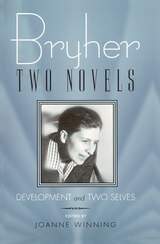 Bryher: Two Novels: Development And Two Selves
Bryher
University of Wisconsin Press, 2000 Bryher (born Annie Winifred Ellerman) is perhaps best known today as the lifelong partner of the poet H.D. She was, however, a central figure in modernist and avant-garde cultural experimentation in the early twentieth century; a prolific producer of poetry, novels, autobiography, and criticism; and an intimate and patron of such modernist artists as Gertrude Stein, Marianne Moore, and Dorothy Richardson. Bryher’s own path-breaking writing has remained largely neglected, long out of print, and inaccessible to those interested in her oeuvre. Now, for the first time since their original publication in the early 1920s, two of Bryher's pioneering works of fictionalized autobiography, titled Development and Two Selves, are reprinted in one volume for a new audience of readers, scholars, and critics.
Blending poetry, prose, and autobiographical details, Development and Two Selves together constitute a compelling bildungsroman that is among the first ever to follow a young woman's process of coming out. Through the fictionalized character Nancy, the novels trace Bryher’s life through her childhood and young adulthood, giving the reader an account of the development of a unique lesbian, feminist, and modernist consciousness. Development and Two Selves recover significant work by one of the first experimenters of the modernist movement and are a welcome reintroduction of the enigmatic Bryher.
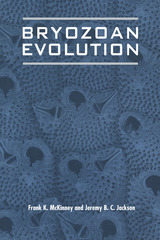 Bryozoan Evolution
Frank K. McKinney and Jeremy B. C. Jackson
University of Chicago Press, 1991 The authors argue that the growth pattern and form of the colony in many bryozoans is an adaptive strategy rather than a stable genetic character.
"Bryozoan Evolution is profusely illustrated and has a bibliography of over 400 titles. It will find an appreciative audience of paleontologists, invertebrate zoologists, and ecologists thanks to its innovative and detailed evaluations of the roles of ecology, adaptive and functional morphology, life histories, biomechanics, developmental constraints, and chance on the evolution of the marine taxa of this speciose group."—Russel L. Zimmer, Science
"This book is an excellent source of information on the functional morphology and variety of colonial architecture in bryozoans, very well illustrated, and worth reading at least twice."-Robert L. Anstey, Paleobiology
"Even as one of the converted, I found the book a stimulating combination of paleobiology and ecology. In many ways it is a 'teaser'-the authors suggest a number of interesting hypotheses, and can test only some of them. Perhaps most important, McKinney and Jackson provide a plethora of fascinating ideas and examples that demonstrate the potential of this group of animals, and that should stimulate more work."-Michael S. Keough, TREE
"This stimulating book is sure to promote further interest in bryozoans. It will appeal to biologists and paleontologists alike."-Paul Taylor, Times Higher Education Supplement
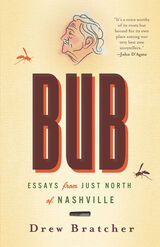 Bub: Essays from Just North of Nashville
Drew Bratcher
University of Iowa Press, 2022 Nashville native Drew Bratcher writes musically about memory and memorably about music in uncommonly beautiful essays that announce the arrival of a major new voice. The title essay, a requiem in fragments, tells the story of a grandfather through his ear, comb, hands, El Camino, and clothes. Bratcher delivers a tough and moving tribute to a man who “went on ahead, on up the road, and then the road turned.” Elsewhere, Bratcher directs his attention to Johnny Cash’s looming presence over his childhood, the relative pain of red paper wasp stings, Dolly Parton’s generative homesickness, the humiliations and consolations of becoming a new father, the experience of hearing his name in a Taylor Swift song, and the mystifying hymns treasured by both his great grandmother and D. H. Lawrence.
Seamlessly blending memoir and arts criticism and aiming at both the heart and the head, this is a book about listening closely to stories and songs, about leaving home in order to find home, and about how the melodies and memories absorbed along the way become “a living music that advances and prevails upon us at formative moments, corralling chaos into the simple, liberating stockade of verse, chorus, verse.”
 Bubbles and Machines: Gender, Information and Financial Crises
Micky Lee
University of Westminster Press, 2019 Are financial crises embedded in IT? Can gender studies offer insights into financial reporting? Feminist theories and Science and Technology Studies (STS) can enrich a critique of financial crises in capitalism as the author argues their critical, political economic approaches to communication can help in understanding because they historicize technology and economy and how these are materially embedded. Current literature has neglected finance and capital’s gendered aspect – even – the ideology of a ‘crisis’. This book develops four themes: women as resources in financial markets and as producers of values; gender ideology and unequal distribution; machine production and distribution of financial information and the varied actuality of markets. Working with case histories of tulipmania, microcredit, Wall Street reporting and the role of ‘screens’, Bubbles and Machines argues that rather than calling financial crises human-made or inevitable they should be recognized as technological.
 Buccaneers of the Caribbean: How Piracy Forged an Empire
Jon Latimer
Harvard University Press, 2009 During the seventeenth century, sea raiders known as buccaneers controlled the Caribbean. Buccaneers were not pirates but privateers, licensed to attack the Spanish by the governments of England, France, and Holland. Jon Latimer charts the exploits of these men who followed few rules as they forged new empires.
Lacking effective naval power, the English, French, and Dutch developed privateering as the means of protecting their young New World colonies. They developed a form of semi-legal private warfare, often carried out regardless of political developments on the other side of the Atlantic, but usually with tacit approval from London, Paris, and Amsterdam. Drawing on letters, diaries, and memoirs of such figures as William Dampier, Sieur Raveneau de Lussan, Alexander Oliver Exquemelin, and Basil Ringrose, Jon Latimer portrays a world of madcap adventurers, daredevil seafarers, and dangerous rogues.
Piet Hein of the Dutch West India Company captured, off the coast of Cuba, the Spanish treasure fleet, laden with American silver, and funded the Dutch for eight months in their fight against Spain. The switch from tobacco to sugar transformed the Caribbean, and everyone scrambled for a quick profit in the slave trade. Oliver Cromwell’s ludicrous Western Design—a grand scheme to conquer Central America—fizzled spectacularly, while the surprising prosperity of Jamaica set England solidly on the road to empire. The infamous Henry Morgan conducted a dramatic raid through the tropical jungle of Panama that ended in the burning of Panama City.
From the crash of gunfire to the billowing sail on the horizon, Latimer brilliantly evokes the dramatic age of the buccaneers.
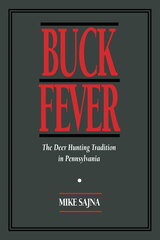 Buck Fever: The Deer Hunting Tradition in Pennsylvania
Mike Sajna
University of Pittsburgh Press, 1990 Every fall close to one million hunters enter Pennsylvania’s forests and mountains in quest of the white-tailed deer. Some are seeking sport and companionship; others are stocking their larders for winter; many are conservationists who regard hunting as the most humane way of reducing overpopulated deer herds. They all face the increasing activism of animal rights advocates who are opposed to hunting in principle and who frequently picket and harass hunters.
This controversial subject is explored in depth by Mike Sajna, the outdoors columnist for Pittsburgh Magazine and a twenty-year veteran of Pennsylvania’s “pumpkin army,” the orange-clad throng that invades the woods every season. To explain the ethos and traditions of hunting he takes the reader to a typical deer camp in Warren County, in the rugged terrain of the Allegheny High Plateau. Starting with the trek north from their homes around Pittsburgh, he captures the sights and sounds, thoughts and feelings of three generations of hunters. With humor, affection, and insight he recounts the hunting lore, the camaraderie, the physical testing that make deer camp a unique experience.
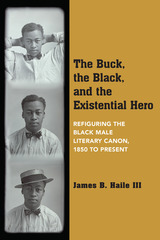 The Buck, the Black, and the Existential Hero: Refiguring the Black Male Literary Canon, 1850 to Present
James B. Haile III
Northwestern University Press, 2020 Outstanding Academic Title, CHOICE
The Buck, the Black, and the Existential Hero: Refiguring the Black Male Literary Canon, 1850 to Present combines philosophy, literary theory, and jazz studies with Africana studies to develop a theory of the black male literary imagination. In doing so, it seeks to answer fundamental aesthetic and existential questions: How does the experience of being black and male in the modern West affect the telling of a narrative, the shape or structure of a novel, the development of characters and plot lines, and the nature of criticism itself?
James B. Haile argues that, since black male identity is largely fluid and open to interpretation, reinterpretation, and misinterpretation, the literature of black men has developed flexibility and improvisation, termed the “jazz of life.” Our reading of this literature requires the same kind of flexibility and improvisation to understand what is being said and why, as well as what is not being said and why. Finally, the book attempts to offer this new reading experience by placing texts by well-known authors, such as Frederick Douglass, Ralph Ellison, and Colson Whitehead, in conversation with texts by those who are less well known and those who have, for the most part, been forgotten, in particular, Cecil Brown. Doing so challenges the reader to visit and revisit these novels with a new perspective about the social, political, historical, and psychic realities of black men.
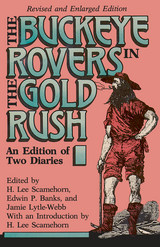 Buckeye Rovers in the Gold Rush: An Edition of Two Diaries
H. Lee Scamehorn
Ohio University Press, 1989 When “California Fever” raced through southeastern Ohio in the spring of 1849, a number of residents of Athens County organized a cooperative venture for traveling overland to the mines. Known as the “Buckeye Rovers,” the company began its trip westward in early April. The Buckeye Rovers, along with thousands who traveled the overland route to California, endured numerous hardships and the seemingly constant threat of attacks from hostile Indians. On reaching their destination, the Ohioans discovered that rich deposits of gold were extremely rare, and that except for a few lucky fortune–seekers, mining required hard physical labor and yielded small rewards. They persisted nonetheless and most of the company returned to Athens in late 1851 or early 1852 with modest fortunes. The arduous experiences of the overland trek were recorded by two Buckeye Rover diarists. The more compete account was compiled by John Banks. He wrote effusively while on the trail and throughout his stay of more than two years in the gold regions. J. Elza Armstrong, by contrast, was brief, even laconic, and his journal ended upon reaching California. The contrast between the two brings into focus the divergent personalities who were drawn to California by the lure of gold. A nine–month segment of Bank’s diary, from February to November, 1851, had been missing at the time the story of the Buckeye Rovers was first published in 1965. This revised and enlarged edition contains the complete diaries. They offer valuable record of the Buckeyes’ adventures from the time they left home until the time they departed California for the return trip to Ohio.
Buckeye Schoolmaster: A Chronicle of Midwestern Rural Life, 1853–1865
J. Merton England
University of Wisconsin Press, 1996 The journals and diaries of John M. Roberts provide an intimate view of the life and dthoughts of a young schoolmaster, miller, itenerant bookseller, and farmer in centreal Ohio in a time of rising sectional crisis and Civil War.
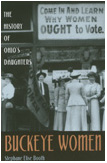 Buckeye Women: The History of Ohio’s Daughters
Stephane Elise Booth
Ohio University Press, 2001 By the last two decades of the twentieth century, Ohio women had held positions as university presidents, chief executive officers, judges, superintendents of schools, and lieutenant governor. They had won Pulitzer Prizes and, in one case, the Nobel Prize for Literature. But these women stood on the shoulders of those who came before: the pioneering women who helped tame the Ohio frontier, who filled the breach, who worked for reform, and who struggled for their own rights as citizens of one of the most prosperous states in the Union. Buckeye Women is an accessible and comprehensive account of the role Ohio women have assumed in the history of the state and a narrative of their hardships and of the victories that have been won in the past two hundred years. In this timely contribution to the Ohio Bicentennial Series, Professor Stephane Booth has written a rich and well-researched volume, providing for the first time a record of the vast and pivotal accomplishments shared by the women of Ohio over the last two centuries and documenting their contribution to the state’s remarkable heritage.
Buckminster Fuller: Anthology for the Millennium
Edited by Thomas T. K. Zung
Southern Illinois University Press, 2014 Originally published as Buckminster Fuller: Anthology for the New Millennium, this popular anthology contains chapters from Fuller’s many books, with each chapter introduced by a notable figure such as Calvin Tomkins, Sir Harry Kroto, Lord Norman Foster, Arthur L. Loeb, Allegra Fuller Snyder, Very Rev. James Parks Morton, Shoji Sadao, and others. Thomas T. K. Zung has revised the book, adding vignettes and images not included in the first edition, to reflect a culture that has changed with time, much of that change predicted by Fuller.
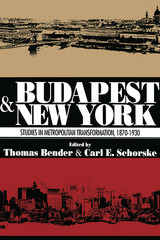 Budapest and New York: Studies in Metropolitan Transformation, 1870-1930
Thomas Bender
Russell Sage Foundation, 1994 Little over a century ago, New York and Budapest were both flourishing cities engaging in spectacular modernization. By 1930, New York had emerged as an innovating cosmopolitan metropolis, while Budapest languished under the conditions that would foster fascism. Budapest and New York explores the increasingly divergent trajectories of these once-similar cities through the perspectives of both Hungarian and American experts in the fields of political, cultural, social and art history. Their original essays illuminate key aspects of urban life that most reveal the turn-of-the-century evolution of New York and Budapest: democratic participation, use of public space, neighborhood ethnicity, and culture high and low. What comes across most strikingly in these essays is New York's cultivation of social and political pluralism, a trend not found in Budapest. Nationalist ideology exerted tremendous pressure on Budapest's ethnic groups to assimilate to a single Hungarian language and culture. In contrast, New York's ethnic diversity was transmitted through a mass culture that celebrated ethnicity while muting distinct ethnic traditions, making them accessible to a national audience. While Budapest succumbed to the patriotic imperatives of a nation threatened by war, revolution, and fascism, New York, free from such pressures, embraced the variety of its people and transformed its urban ethos into a paradigm for America. Budapest and New York is the lively story of the making of metropolitan culture in Europe and America, and of the influential relationship between city and nation. In unifying essays, the editors observe comparisons not only between the cities, but in the scholarly outlooks and methodologies of Hungarian and American histories. This volume is a unique urban history. Begun under the unfavorable conditions of a divided world, it represents a breakthrough in cross-cultural, transnational, and interdisciplinary historical work.
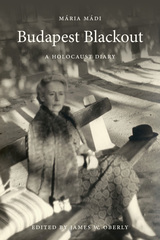 Budapest Blackout: A Holocaust Diary
by Máriá Mádi, edited by James W. Oberly
University of Wisconsin Press, 2023 Mária Mádi (1898–1970) was a Roman Catholic Hungarian physician living in Budapest during World War II. Stuck in the city, she vowed to become a witness to events as they unfolded and began keeping a diary to chronicle her everyday life, as well as the lives of her Jewish neighbors, during what would be the darkest periods of the Holocaust. From the time Hungary declared war on the United States in December 1941 until she secured an immigrant’s visa to the US in late 1946, she wrote nearly daily in English, offering current-day readers one of the most complete pictures of ordinary life during the Holocaust in Hungary. In the form of letters to her American relatives, Mádi addressed a wide range of subjects, from the fate of small countries like Hungary caught between the major powers of Germany and the Soviet Union, to the Nazi pogrom against Budapest’s Jews, to family news and the price of food.
Mádi’s family donated the entire collection of her diaries to the US Holocaust Memorial Museum. This edition transcribes a selection of Mádi’s writings focusing on the period of March 1944 to November 1945, from the Nazi invasion and occupation of Hungary, through the Battle of Budapest, to the ensuing Soviet occupation. While bearing witness to the catastrophe in Hungary, Mádi hid a Jewish family in her small flat from October 1944 to February 1945. She received a posthumous Righteous among Nations Medal from Yad Vashem, the World Holocaust Remembrance Center.
Editorial commentary by James W. Oberly situates Mádi’s observations, and a critical introduction by the Holocaust scholar András Lénárt outlines the wider sociopolitical context in which her diaries gain meaning.
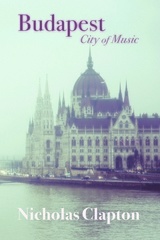 Budapest: City of Music
Nicholas Clapton
Haus Publishing, 2017 Singer Nicholas Clapton first visited Budapest to record a recently discovered mass by an almost unknown eighteenth-century Hungarian composer. There, he discovered a striking sense of otherness in spite of Hungary’s central geographical and cultural position within Europe. And with that, a deep passion for the city was born. Budapest offers an engaging and affectionate look at this beautiful capital from the perspective of a musician who lived and worked there for many years.
With rich musical traditions, both classical and folk, and possessing a language like almost no other, Hungary is in the process of abandoning the trappings of its communist past while attempting to preserve its culture from creeping globalization. Clapton delights in the fact that certain old-fashioned attitudes of courtesy, at times stemming from the very structures of the Magyar tongue, are still deeply ingrained in Hungarian society. At the same time, despite its association with world-famous composers such as Bartók, Liszt, and Kodály, music is far from an activity enjoyed only by the elite. Including plenty of tips on food, drink, and sites of interest, Budapest describes the capital in uniquely melodic terms and will delight lovers of travel and music alike.
Buddha’s Dogs
Susan Browne
Four Way Books, 2004 These poems are at once tender, vulnerable, biting, heartbreaking, and hilarious. One moment you are laughing, the next moment drying your eyes. Edward Hirsch, judge of the Four Way Books 2002 Intro Prize says of Buddha’s Dogs, "There’s a ruthless authenticity—a deep cherishing—in Buddha’s Dogs, a splendidly mature first book of poems that is filled with moments of Proustian recall, with the comedy and the anguish, the beauty and the burning of lived experience."
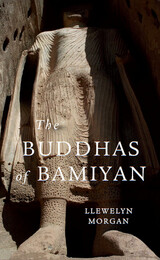 The Buddhas of Bamiyan
Llewelyn Morgan
Harvard University Press, 2012 For 1,400 years, two colossal figures of the Buddha overlooked the fertile Bamiyan Valley on the Silk Road in Afghanistan. Witness to a melting pot of passing monks, merchants, and armies, the Buddhas embodied the intersection of East and West, and their destruction by the Taliban in 2001 provoked international outrage. Llewelyn Morgan excavates the layers of meaning these vanished wonders hold for a fractured Afghanistan.
Carved in the sixth and seventh centuries, the Buddhas represented a confluence of religious and artistic traditions from India, China, Central Asia, and Iran, and even an echo of Greek influence brought by Alexander the Great’s armies. By the time Genghis Khan destroyed the town of Bamiyan six centuries later, Islam had replaced Buddhism as the local religion, and the Buddhas were celebrated as wonders of the Islamic world. Not until the nineteenth century did these figures come to the attention of Westerners. That is also the historical moment when the ground was laid for many of Afghanistan’s current problems, including the rise of the Taliban and the oppression of the Hazara people of Bamiyan. In a strange twist, the Hazaras—descendants of the conquering Mongol hordes who stormed Bamiyan in the thirteenth century—had come to venerate the Buddhas that once dominated their valley as symbols of their very different religious identity.
Incorporating the voices of the holy men, adventurers, and hostages throughout history who set eyes on the Bamiyan Buddhas, Morgan tells the history of this region of paradox and heartache.
 The Buddha's Path to Awakening
Sarah Shaw
Harvard University Press, 2025 The Buddha as man, animal, and god on the path to enlightenment.
According to ancient traditions, it takes countless lifetimes to become a Buddha. The Buddha’s own path to complete awakening was chronicled in five hundred and forty-seven stories known as the jātakas, which underwent numerous adaptations in the centuries after the Buddha’s lifetime. In the fifth or sixth century CE, in the region known as present-day Sri Lanka, an anonymous author wrote an introduction to these, recounting the history of a vow that prompted this great quest. This narrative, titled Jātakanidāna in Pali, preserves the oral traditions about the Bodhisatta, the one destined to become a Buddha in his final life. The text also functioned for centuries as a gateway to other early Buddhist teachings, offering valuable insights into the Buddha's journey toward enlightenment.
The story begins when, in one of his lives as an ascetic named Sumedha, the Buddha vows to delay his own awakening until he can guide others toward their release from the cycle of rebirth. This vow sets him on a long series of lives—as man, animal, and god. At the culmination of his spiritual journey, he recalls his past lives, his teachings, and the establishment of the monastic community that would preserve and spread these teachings.
The Buddha’s Path to Awakening has become one of the most significant biographical works in the Buddhist tradition. This volume presents a new, authoritative translation, accompanied by the original Pali text.
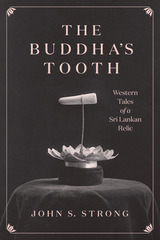 The Buddha's Tooth: Western Tales of a Sri Lankan Relic
John S. Strong
University of Chicago Press, 2021 John S. Strong unravels the storm of influences shaping the received narratives of two iconic sacred objects.
Bodily relics such as hairs, teeth, fingernails, pieces of bone—supposedly from the Buddha himself—have long served as objects of veneration for many Buddhists. Unsurprisingly, when Western colonial powers subjugated populations in South Asia, they used, manipulated, redefined, and even destroyed these objects to exert control.
In The Buddha’s Tooth, John S. Strong examines Western stories, from the sixteenth to the twentieth century, surrounding two significant Sri Lankan sacred objects to illuminate and concretize colonial attitudes toward Asian religions. First, he analyzes a tale about the Portuguese capture and public destruction, in the mid-sixteenth century, of a tooth later identified as a relic of the Buddha. Second, he switches gears to look at the nineteenth-century saga of British dealings with another tooth relic of the Buddha—the famous Daḷadā enshrined in a temple in Kandy—from 1815, when it was taken over by English forces, to 1954, when it was visited by Queen Elizabeth II. As Strong reveals, the stories of both the Portuguese tooth and the Kandyan tooth reflect nascent and developing Western understandings of Buddhism, realizations of the cosmopolitan nature of the tooth, and tensions between secular and religious interests.
 Buddhism and Ecology: The Interconnection of Dharma and Deeds
Mary Evelyn Tucker
Harvard University Press, 1997 Given the challenges of the environmental crisis, Buddhism's teaching of the interrelatedness of all life forms may be critical to the recovery of human reciprocity with nature. In this new work, twenty religionists and environmentalists examine Buddhism's understanding of the intricate web of life. In noting the cultural diversity of Buddhism, they highlight aspects of the tradition which may help formulate an effective environmental ethics, citing examples from both Asia and the United States of socially engaged Buddhist projects to protect the environment. The authors explore theoretical and methodological issues and analyze the prospects and problems of using Buddhism as an environmental resource in both theory and practice. This groundbreaking volume inaugurates a larger series examining the religions of the world and their ecological implications which will shape a new field of study involving religious issues, contemporary environmental ethics, and public policy concerns.
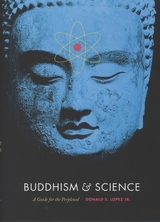 Buddhism and Science: A Guide for the Perplexed
Donald S. Lopez Jr.
University of Chicago Press, 2008 Beginning in the nineteenth century and continuing to the present day, both Buddhists and admirers of Buddhism have proclaimed the compatibility of Buddhism and science. Their assertions have ranged from modest claims about the efficacy of meditation for mental health to grander declarations that the Buddha himself anticipated the theories of relativity, quantum physics and the big bang more than two millennia ago.
In Buddhism and Science, Donald S. Lopez Jr. is less interested in evaluating the accuracy of such claims than in exploring how and why these two seemingly disparate modes of understanding the inner and outer universe have been so persistently linked. Lopez opens with an account of the rise and fall of Mount Meru, the great peak that stands at the center of the flat earth of Buddhist cosmography—and which was interpreted anew once it proved incompatible with modern geography. From there, he analyzes the way in which Buddhist concepts of spiritual nobility were enlisted to support the notorious science of race in the nineteenth century. Bringing the story to the present, Lopez explores the Dalai Lama’s interest in scientific discoveries, as well as the implications of research on meditation for neuroscience.
Lopez argues that by presenting an ancient Asian tradition as compatible with—and even anticipating—scientific discoveries, European enthusiasts and Asian elites have sidestepped the debates on the relevance of religion in the modern world that began in the nineteenth century and still flare today. As new discoveries continue to reshape our understanding of mind and matter, Buddhism and Science will be indispensable reading for those fascinated by religion, science, and their often vexed relation.
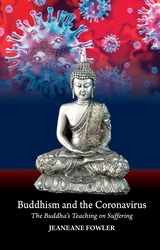 Buddhism and the Coronavirus: The Buddha’s Teaching on Suffering
Jeaneane Fowler
Sussex Academic Press, 2022 In the fifth century BCE, Siddhartha Gautama, the Buddha, put forward Four Noble Truths for the benefit of humankind. His teaching, the Dhamma, has remained central to so much Buddhist practice, and is unique among religions in that it speaks primarily to the presence and nature of suffering in the world. That makes the Dhamma so relevant to the suffering caused by the present pandemic of coronavirus. In just a few months, coronavirus has changed the way of life for the world, for the East and the West, for young and old, for the previously healthy and for those with medical issues. We are all affected—if not from succumbing to the virus one's self, then to witnessing the distress of the wider world. The core Truths—The Truth of suffering, The Truth of the cause of suffering, The Truth of the cessation of suffering, The Truth of the path that leads to the cessation of suffering—have remained the same for millennia, and now have a deeply necessary role to play in the contemporary world. The author links the Four Noble Truths with the coronavirus experience, explains the way suffering is embedded in the notions of self and the characteristics of existence, and sets out the Brahma-vihara: the four virtues of universal love, compassion, sympathetic joy, and equanimity.
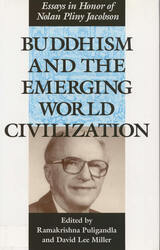 Buddhism and the Emerging World Civilization: Essays in Honor of Nolan Pliny Jacobson
Ramakrishna Puligandla
Southern Illinois University Press, 1996
This captivating new book, a milestone in Buddhist and comparative studies, is a compilation of seventeen essays celebrating the work and thought of Nolan Pliny Jacobson.
A profoundly motivated interdisciplinary thinker, Jacobson sought to discover, clarify, and synthesize points of similarity among leading thinkers of different Oriental and Western cultures. For almost half a century, he articulated his vision of an emerging world civilization, one in which all people can feel and express their creative, constructive powers for the benefit of others as well as for themselves.
Jacobson believed that philosophy and the works of philosophers should be understood as a vital force enriching all civilizational experience. His own philosophic perspective was rooted in the conviction that novelty is the source of all experience and the center of a creativity that lives beyond words, arguments, and rational paradigms. Throughout his career, Jacobson explored Buddhist texts and personalities, spending much time in the Orient, particularly Myanmar and Japan. He also closely studied the works of numerous Western philosophers, including Whitehead, Dewey, Peirce, James, Hartshorne, and Wieman. Jacobson believed that American philosophy and Buddhism concurred in many ways, with the potential to form a powerful basis for the development of a world civilization.
The essays in this volume are organized around Jacobson’s activities, publications, and interests. Authored by an impressive selection of scholars, the essays are grouped into four sections—"Historical Context," "Central Issues," "Practical Implications," and "The Japan Emphasis." Hajime Nakamura, Charles Hartshorne, Kenneth K. Inada, Seizo Oho, and numerous others discuss freedom, creativity, and Buddhism’s self-corrective nature, setting forth their reasons for sharing Jacobson’s ideas and visions.
Buddhism Betrayed?: Religion, Politics, and Violence in Sri Lanka
Stanley Jeyaraja Tambiah
University of Chicago Press, 1992 This volume seeks to answer the question of how the Buddhist monks in today's Sri Lanka—given Buddhism's traditionally nonviolent philosophy—are able to participate in the fierce political violence of the Sinhalese against the Tamils.
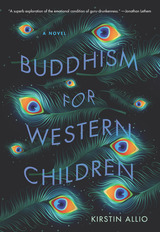 Buddhism for Western Children
Kirstin Allio
University of Iowa Press, 2018 Set on the coast of Maine and in the high desert of New Mexico in the late 1970s through the early 80s, Buddhism for Western Children is a universal and timeless story of a boy who must escape subjugation, tell his story, and reclaim his soul.
In search of community and transcendence, ten-year-old Daniel’s family is swept into the thrall of a potent and manipulative guru. To his followers, Avadhoot Master King Ivanovich is a living god, a charismatic leader who may reveal enlightenment as he mesmerizes, and alchemizes, Eastern and Western spiritual traditions.
Daniel’s family plunges into a world with different rules and rhythms—and with no apparent exit. They join other devotees in shunning the outside world, and fall under the absolutist authority of the guru and his lieutenants. Daniel bears witness to the relentless competition for the guru’s favor, even as he begins to recognize the perversion of his spirituality. Soon, Daniel himself is chosen to play a role. As tensions simmer and roil, darkness intrudes. Devotees overstep, placing even the children in jeopardy. Daniel struggles with conflicting desires to resist and to belong, until finally he must decide who to save and who to abandon.
With spiraling, spellbinding language, Allio reveals a cast of vivid, often darkly funny characters, and propels us toward a shocking climax where Daniel’s story cracks open like a kaleidoscope, revealing the costs of submitting to a tyrant and the shimmering resilience of the human spirit.
 Buddhism under Mao
Holmes Welch
Harvard University Press, 1972 Buddhism under Mao shows what kind of a problem Buddhism presented to the Chinese Communists and how they solved it. Relying largely on materials from the Mainland press, Holmes Welch has made what is probably the most detailed study so far available of the fate of a world religion in a Communist country. He describes how Buddhist institutions were controlled, protected, utilized, and suppressed; and explains why the larger needs of foreign and domestic policy dictated the Communists’ approach to the institutions. Over eighty photographs illustrate the activities of monks, laymen, and foreign visitors.
Welch worked for over a decade on the trilogy here completed. The preceding volumes, The Practice of Chinese Buddhism, 1900–1950 and The Buddhist Revival in China, dealt with Buddhism in the years before the Communist victory. Buddhism under Mao ends with a discussion of the possibility of the survival of certain elements of Buddhism in new forms.
 Buddhism, Unitarianism, and the Meiji Competition for Universality
Michel Mohr
Harvard University Press, 2013 In the late 1800s, as Japanese leaders mulled over the usefulness of religion in modernizing their country, they chose to invite Unitarian missionaries to Japan. This book spotlights one facet of debates sparked by the subsequent encounter between Unitarianism and Buddhism—an intersection that has been largely neglected in the scholarly literature. Focusing on the cascade of events triggered by the missionary presence of the American Unitarian Association on Japanese soil between 1887 and 1922, Michel Mohr’s study sheds new light on this formative time in Japanese religious and intellectual history.
Drawing on the wealth of information contained in correspondence sent and received by Unitarian missionaries in Japan, as well as periodicals, archival materials, and Japanese sources, Mohr shows how this missionary presence elicited unprecedented debates on “universality” and how the ambiguous idea of “universal truth” was utilized by missionaries to promote their own cultural and ethnocentric agendas. At the turn of the twentieth century this notion was appropriated and reformulated by Japanese intellectuals and religious leaders, often to suit new political and nationalistic ambitions.
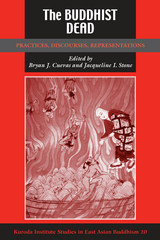 The Buddhist Dead: Practices, Discourses, Representations
edited by Bryan J. Cuevas and Jacqueline I. Stone
University of Hawaii Press, 2007 In its teachings, practices, and institutions, Buddhism in its varied Asian forms has been—and continues to be—centrally concerned with death and the dead. Yet surprisingly "death in Buddhism" has received little sustained scholarly attention. The Buddhist Dead offers the first comparative investigation of this topic across the major Buddhist cultures of India, Sri Lanka, China, Japan, Tibet, and Burma. Its individual essays, representing a range of methods, shed light on a rich array of traditional Buddhist practices for the dead and dying; the sophisticated but often paradoxical discourses about death and the dead in Buddhist texts; and the varied representations of the dead and the afterlife found in Buddhist funerary art and popular literature. This important collection moves beyond the largely text—and doctrine—centered approaches characterizing an earlier generation of Buddhist scholarship and expands its treatment of death to include ritual, devotional, and material culture.
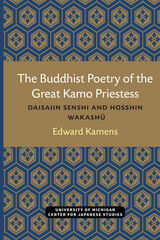 The Buddhist Poetry of the Great Kamo Priestess: Daisaiin Senshi and Hosshin Wakashu
Edward Kamens
University of Michigan Press, 1991 Senshi was born in 964 and died in 1035, in the Heian period of Japanese history (794–1185). Most of the poems discussed here are what may loosely be called Buddhist poems, since they deal with Buddhist scriptures, practices, and ideas. For this reason, most of them have been treated as examples of a category or subgenre of waka called Shakkyoka, “Buddhist poems.” Yet many Shakkyoka are more like other poems in the waka canon than they are unlike them. In the case of Senshi’s “Buddhist poems,” their language links them to the traditions of secular verse. Moreover, the poems use the essentially secular public literary language of waka to address and express serious and relatively private religious concerns and aspirations. In reading Senshi’s poems, it is as important to think about their relationship to the traditions and conventions of waka and to other waka texts as it is to think about their relationship to Buddhist thoughts, practices, and texts. The Buddhist Poetry of the Great Kamo Priestess creates a context for the reading of Senshi’s poems by presenting what is known and what has been thought about her and them. As such, it is a vital source for any reader of Senshi and other literature of the Heian period.
Buddhist Responses to Christianity in Postwar Taiwan: Awakening the World
Scott Pacey
Amsterdam University Press, 2020 After the Communist victory in China's civil war, Taiwan, then governed by the KMT (or Nationalist Party), became a focal point for both Buddhist and Christian activity in the Chinese world. Focusing on some of the most influential monastics of the time, this study considers Buddhist responses to Christianity during its subsequent period of growth on the island. Drawing on Buddhist and Christian publications, it shows that interfaith competition, and political context, are important in shaping religious identity and driving the religious engagement with modernity. Buddhist Responses to Christianity in Postwar Taiwan: Awakening the World will be of interest to historians of Buddhism, Chinese religion and Taiwanese society, and to those with an interest in interfaith dialogue more generally.
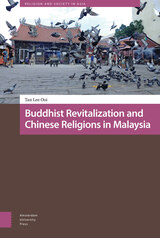 Buddhist Revitalization and Chinese Religions in Malaysia
Lee Ooi Tan
Amsterdam University Press, 2020 Buddhist Revitalization and Chinese Religions in Malaysia tells the story of how a minority community comes to grips with the challenges of modernity, history, globalization, and cultural assertion in an ever-changing Malaysia. It captures the religious connection, transformation, and tension within a complex traditional belief system in a multi-religious society. In particular, the book revolves around a discussion on the religious revitalization of Chinese Buddhism in modern Malaysia. This Buddhist revitalization movement is intertwined with various forces, such as colonialism, religious transnationalism, and global capitalism. Reformist Buddhists have helped to remake Malaysia’s urban-dwelling Chinese community and have provided an exit option in the Malay and Muslim majority nation state. As Malaysia modernizes, there have been increasing efforts by certain segments of the country’s ethnic Chinese Buddhist population to separate Buddhism from popular Chinese religions. Nevertheless, these reformist groups face counterforces from traditional Chinese religionists within the context of the cultural complexity of the Chinese belief system.
 The Buddhist Revival in China
Holmes Welch
Harvard University Press Of all the world's major religions, Chinese Buddhism has probably experienced the most traumatic modernization. The establishment of a communist state quickly emerged from the self-contained Manchu Empire. The consequences are described in this book. Holmes Welch offers the first detailed account of the careers of recent Buddhist leaders and of the diverse organization they started. Eighteen Chinese Buddhist associations are identified as the author traces the struggle for national leadership. The role of T'ai-hsü, the leader best known to Western readers but not, it is shown, among Buddhists, is given a controversial reassessment.
After examining the main features of the revival, Welch puts them into a larger political framework. In the process, he offers copious evidence that our picture of Chinese Buddhism has been distorted. What has been termed a "revival" was actually a secular reorientation. The author's conclusion is that this secularization, vigorous as it was, in reality foreshadowed the decline of Chinese Buddhism as a living religion.
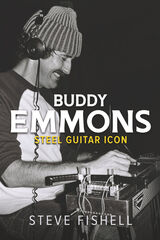 Buddy Emmons: Steel Guitar Icon
Steve Fishell
University of Illinois Press, 2022 A No Depression Most Memorable Music Book of 2022 The acknowledged maestro of the pedal steel guitar, Buddy Emmons lent his unparalleled virtuosity to over five decades of hit recordings and set standards that remain the benchmark for musicians today. Steve Fishell’s merger of biography and memoir draws extensively on in-depth interviews with Emmons and the artist's autobiographical writings. Emmons went from playing strip clubs to a Grand Ole Opry debut with Little Jimmy Dickens at age 18. His restless experimentation led to work with Ernest Tubb and Ray Price--and established him in a career that saw him play alongside a who’s who of American music. Fishell weaves in stories and anecdotes from Willie Nelson, Brenda Lee, Linda Ronstadt, Pat Martino, and many others to provide a fascinating musical and personal portrait of an innovator whose peerless playing and countless recordings recognized no boundaries. A one-of-a-kind life story, Buddy Emmons expands our view of a groundbreaking artist and his impact on country music, jazz, and beyond.
 Budgeting Entitlements: The Politics of Food Stamps
Ronald F. King
Georgetown University Press, 2000 As budgetary concerns have come to dominate Congressional action, the design and implementation of welfare programs have come under greater scrutiny. This book focuses on the food stamp program to examine how the growing integration of welfare and budgeting has affected both politics and people. Applying insightful analysis to this important policy topic, Ronald F. King looks at the effects on welfare transfers of the kinds of budgetary rules adopted by Congress: discretion, entitlement, and expenditure caps. King uses models based on these forms to interpret the events in the history of the food stamp program up to the welfare reform of 1996, and he shows how these different budget rules have affected political strategies among key actors and policy outcomes. King analyzes tensions in the program between budgetary concerns and entitlement, revealing that budget mechanisms which seek to cap the growth of entitlement spending have perverse but predictable effects. He also explores the broader conflict between procedural and substantive justice, which pits inclusive democratic decision-making against special protections for the needy and vulnerable in society. The food stamp program offers a valuable opportunity for studying the influence of shifting institutional factors. In an era when budgetary anxieties coexist with continuing poverty, King's book sheds new light on the increasing fiscalization of welfare in America.
The Budget-Maximizing Bureaucrat: Appraisals and Evidence
Andre Blais
University of Pittsburgh Press, 1991
Thirteen scholars reexamine one of the most provocative and debated models of bureaucratic behavior, as developed by William A. Niskanen in his seminal book, Bureaucracy and Representative Government. The essays evaluate a wide array of findings, both qualitative and quantitative, relevant to the various aspects of the model, and offer conclusions about its merits and limits, suggesting alternative explanations of bureaucratic behavior. Niskanen provides his own reassessment and reflections on the debate.
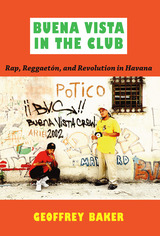 Buena Vista in the Club: Rap, Reggaetón, and Revolution in Havana
Geoffrey Baker
Duke University Press, 2011 In Buena Vista in the Club, Geoffrey Baker traces the trajectory of the Havana hip hop scene from the late 1980s to the present and analyzes its partial eclipse by reggaetón. While Cuban officials initially rejected rap as “the music of the enemy,” leading figures in the hip hop scene soon convinced certain cultural institutions to accept and then promote rap as part of Cuba’s national culture. Culminating in the creation of the state-run Cuban Rap Agency, this process of “nationalization” drew on the shared ideological roots of hip hop and the Cuban nation and the historical connections between Cubans and African Americans. At the same time, young Havana rappers used hip hop, the music of urban inequality par excellence, to critique the rapid changes occurring in Havana since the early 1990s, when the Soviet Union fell, its subsidy of Cuba ceased, and a tourism-based economy emerged. Baker considers the explosion of reggaetón in the early 2000s as a reflection of the “new materialism” that accompanied the influx of foreign consumer goods and cultural priorities into “sociocapitalist” Havana. Exploring the transnational dimensions of Cuba’s urban music, he examines how foreigners supported and documented Havana’s growing hip hop scene starting in the late 1990s and represented it in print and on film and CD. He argues that the discursive framing of Cuban rap played a crucial part in its success.
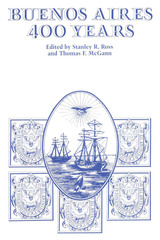 Buenos Aires: 400 Years
Edited by Stanley R. Ross and Thomas F. McGann
University of Texas Press, 1982 Buenos Aires has been called the Paris of Latin America, and the comparison is just, for in style of life and city design Buenos Aires resembles not only the City of Light but also the other great world capitals—London, Rome, New York. Buenos Aires: 400 Years attests to the long, diverse, and fascinating life of this urban mass of some six hundred square miles and eleven million inhabitants, which began as a tiny palisaded outpost on the remote fringe of the Spanish Empire. That colonial past is skillfully described here, but so too is the future of Buenos Aires. Each essay reveals much about the sociological and economic life of the city and the dynamic history of its people. This informative volume derives from a conference held at the Library of Congress in September 1980, which was dedicated to the 400th anniversary of the founding of Buenos Aires. The conference was jointly sponsored by the University of Texas at Austin and the Municipality of Buenos Aires.
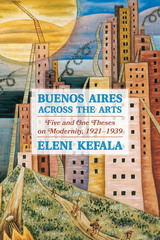 Buenos Aires Across the Arts: Five and One Theses on Modernity, 1921-1939
Eleni Kefala
University of Pittsburgh Press, 2021 By 1920 Buenos Aires was the largest and most cosmopolitan city of Latin America due to mass immigration from Europe in the previous decades. Unbridled urban expansion had drastic effects on the social and cultural topography of the Argentine capital, raising ideological and aesthetic issues that shaped the modernist landscape of the country. Artists across disciplines responded to these changes with conflicting depictions of urban space. Centering these conflicts as a cognitive map of modernity’s new realities in the city, Buenos Aires across the Arts looks at the interaction between modernity and modernism in literature, photography, film, and painting during the interwar period. This was a time of profound change and heightened cultural activity in Argentina. Eleni Kefala analyzes works by Jorge Luis Borges, Oliverio Girondo, José Ferreyra, Xul Solar, Roberto Arlt, and Horacio Coppola, with a focus on the city of Buenos Aires as a playground of modernity.
 The Buenos Aires Reader: History, Culture, Politics
Diego Armus and Lisa Ubelaker Andrade, editors
Duke University Press, 2024 The Buenos Aires Reader offers an insider’s look at the diverse lived experiences of the people, politics, and culture of Argentina’s capital city primarily from the nineteenth century to the present. Refuting the tired cliché that Buenos Aires is the “Paris of South America,” this book gives a nuanced view of a city that has long been attentive to international trends yet never ceases to celebrate its local culture. The vibrant opinions, reflections, and voices of Buenos Aires come to life through selections that range from songs, poems, letters, and essays to interviews, cartoons, paintings, and historical documents, many of which have been translated into English for the first time. These selections tell the story of the city’s culture of protest and celebration, its passion for soccer and sport, its gastronomy and food traditions, its legendary nightlife, and its musical, literary, and artistic cultures. Providing an unparalleled look at Buenos Aires’s history, culture, and politics, this volume is an ideal companion for anyone interested in this dynamic, disruptive, and inventive city.
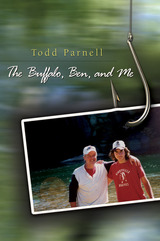 The Buffalo, Ben, and Me
Todd Parnell & Foreword by Jim Baker
University of Missouri Press, 2007
The Buffalo River in northwest Arkansas is one of the longest free-flowing, undammed rivers west of the Mississippi—and one of the most beautiful waterways on earth. Almost lost to development, it proved to be the perfect testing ground for a young boy almost lost to mediocrity.
Middle-schooler Ben is struggling with learning challenges that have left him resentful and underachieving. His father, middle-ager Todd, wants to help his son gain self-confidence but is searching for his own identity. For twelve adventure-filled days on the river—all 125 miles of her navigable course, from Ponca to the White River—father and son discover the formative, curative, and redemptive powers of nature.
Leaving video games and cell phones behind isn’t easy for kids these days, but in the great outdoors parents and youngsters can connect in unimaginable ways. The Buffalo, Ben, and Me shares such a connection in an adventure story set on a wild river. It is a captivating tale featuring a host of colorful characters and enlivened by photos that reflect the essence of the wilderness.
But deeper than that, it is the story of crossing a threshold from dream to possibility—of one man’s search for meaning in his life and his efforts to motivate his son, blending love of family with love of nature in a tale of transformation. It tells how a rebellious teen and a bored banker conspired to buck a system keyed to predictability, and how a wild river inspired both to a better use of their lives. “This trip hit me as hard as it did Ben,” writes Parnell, “as a wake-up call to life, to what is important, to what is not.”
The trip down the Buffalo was one that even Ben admits changed his life in more ways than one, as he later went on to earn a master of science degree specializing in stream ecology. For any reader who loves the outdoors—and especially those seeking to connect with their children—The Buffalo, Ben, and Me is essential reading that reminds us of possibilities to be had in facing life head-on as it raises awareness of the need to protect the Ozarks’ water resources and heritage.
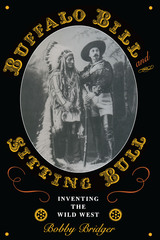 Buffalo Bill and Sitting Bull: Inventing the Wild West
By Bobby Bridger
University of Texas Press, 2002 Army scout, buffalo hunter, Indian fighter, and impresario of the world-renowned "Wild West Show," William F. "Buffalo Bill" Cody lived the real American West and also helped create the "West of the imagination." Born in 1846, he took part in the great westward migration, hunted the buffalo, and made friends among the Plains Indians, who gave him the name Pahaska (long hair). But as the frontier closed and his role in "winning the West" passed into legend, Buffalo Bill found himself becoming the symbol of the destruction of the buffalo and the American Indian. Deeply dismayed, he spent the rest of his life working to save the remaining buffalo and to preserve Plains Indian culture through his Wild West shows. This biography of William Cody focuses on his lifelong relationship with Plains Indians, a vital part of his life story that, surprisingly, has been seldom told. Bobby Bridger draws on many historical accounts and Cody's own memoirs to show how deeply intertwined Cody's life was with the Plains Indians. In particular, he demonstrates that the Lakota and Cheyenne were active cocreators of the Wild West shows, which helped them preserve the spiritual essence of their culture in the reservation era while also imparting something of it to white society in America and Europe. This dual story of Buffalo Bill and the Plains Indians clearly reveals how one West was lost, and another born, within the lifetime of one remarkable man.
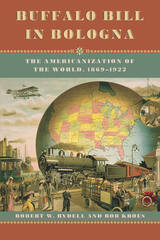 Buffalo Bill in Bologna: The Americanization of the World, 1869-1922
Robert W. Rydell and Rob Kroes
University of Chicago Press, 2005 When it comes to the production and distribution of mass culture, no country in modern times has come close to rivaling the success of America. From blue jeans in central Europe to Elvis Presley's face on a Republic of Chad postage stamp, the reach of American mass culture extends into every corner of the globe. Most believe this is a twentieth-century phenomenon, but here Robert W. Rydell and Rob Kroes prove that its roots are far deeper.
Buffalo Bill in Bologna reveals that the process of globalizing American mass culture began as early as the mid-nineteenth century. In fact, by the end of World War I, the United States already boasted an advanced network of culture industries that served to promote American values. Rydell and Kroes narrate how the circuses, amusement parks, vaudeville, mail-order catalogs, dime novels, and movies developed after the Civil War—tools central to hastening the reconstruction of the country—actually doubled as agents of American cultural diplomacy abroad. As symbols of America's version of the "good life," cultural products became a primary means for people around the world, especially in Europe, to reimagine both America and themselves in the context of America's growing global sphere of influence. Paying special attention to the role of the world's fairs, the exporting of Buffalo Bill's Wild West show to Europe, the release of The Birth of a Nation, and Woodrow Wilson's creation of the Committee on Public Information, Rydell and Kroes offer an absorbing tour through America's cultural expansion at the turn of the century. Buffalo Bill in Bologna is thus a tour de force that recasts what has been popularly understood about this period of American and global history.
 The Buffalo Book: The Full Saga Of The American Animal
David A. Dary
Ohio University Press, 1989 The journals and memoirs of nineteeth-century explorers and travelers in the American West often told of viewing buffalo massed together as far as the eye could see. This book appropriately covers the subject of the buffalo as extensively as that animal covered the plains. Other recent accounts of the buffalo have focused on two or three aspects, emphasizing its natural history, the hunters and the hunted in prehistoric time, the relationship between the buffalo and the American Indian. David Dary’s treatment stretches from horizon to horizon. Of course he discusses the origin of the buffalo in North America, its locations and migrations, its habits, its significance and role in both Indian and white cultures, its near demise, its salvation. But more. Dary weaves throughout his fact-filled book fascinating threads of lore and legend of this animal that literally helped mold who and what America is. Further, in addition to detailing the extinction which almost befell this mythic beast and the attempts to give life again to the herds, Dary concentrates significant attention on the buffalo as part of America in terms of captivity, husbandry, and symbol.
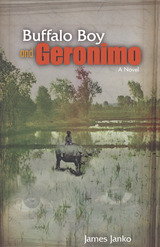 Buffalo Boy and Geronimo
James Janko
Northwestern University Press, 2006 The unique vision in Janko's Buffalo Boy and Geronimo is the depiction of the Vietnam War as seen through the lens of a wounded but resilient nature, as a Confucian society still rooted in the earth and the unbroken fabric of ancestors is pitted against a desensitized military high-tech culture. As critic Paul Pines noted, "The forces here that seek to conquer the landscape are those, which by implication, shatter the harmonious fabric of the natural world to create a pathology that is far deeper than the political stakes indicate—one that indeed may determine the future of the entire ecosphere." The two heroes of the book, Nguyen Luu Mong, the Vietnamese buffalo boy, and Antonio Lucio, the US Chicano medic (Geronimo), both have a deep respect for the natural world, and it is through their eyes that we witness the devastation of the natural world of which they are a part. Geronimo's unit is engaged in search and destroy missions, and he becomes appalled by the pain and death inflicted on animals and humans. Eventually, he deserts and finds his way back into the jungle. Meanwhile, the young adolescent Mong loses his beloved buffalo in an early firefight and eventually sees his entire village destroyed, the survivors relocating deeper into Viet Cong territory.
The Buffoons, A Ridiculous Comedy: A Bilingual Edition
Margherita Costa
Iter Press, 2018 This translation makes The Buffoons, the first female-authored comedy printed in Italy, available to Anglophone readers for the first time. Published in 1641, this burlesque play depicts the mismatched sexual desires of a prince and princess. Although set in northern Africa, the comedy satirizes the Florentine court of Grand Duke Ferdinando II de’ Medici, one of Costa’s several elite patrons. By featuring the clownish antics of an unconventional cast of dwarfs, hunchbacks, and buffoons, it reflects the bizarre appetites and grotesque entertainments of the day. Ribald puns and commedia dell’arte-inspired slapstick abound, presenting the reader with a comic alternative to decorous women’s writing in early modern Italy.
Bug: A Play
Tracy Letts
Northwestern University Press, 2007 Tracy Letts's tale of love, paranoia, and government conspiracy is a thought-provoking psycho-thriller that mixes terror and laughter at a fever pitch. This dark comedy takes place in a seedy motel room outside Oklahoma City, where Agnes, a drug-addled cocktail waitress, is hiding from her ex-con ex-husband. Her lesbian biker friend R.C. introduces her to Peter, a handsome drifter who might be an AWOL Gulf War veteran. They soon begin a relationship that takes place almost entirely within the increasingly claustrophobic confines of her motel room. Peter begins to rant about the war in Iraq, UFOs, the Oklahoma City bombings, cult suicides, and then secret government experiment on soldiers, of which he believes he is a victim. His delusions infect Agnes and the tension mounts as mysterious strangers appear at their door, past events haunt them at every turn and they are attacked by real bugs.
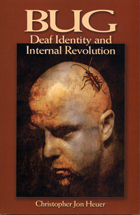 BUG: Deaf Identity and Internal Revolution
Christopher Jon Heuer
Gallaudet University Press, 2007 “What you have in your hands is a bomb. But it is the kind you need to hold on to for dear life, not run away from.”
—From the Foreword, John Lee Clark
Christopher Jon Heuer lost his hearing early, but not before “being able to hear a lot as a kid.” He also received a good education, both in a speech-oriented setting and a signing environment. These varied experiences provided him with the perfect background to write about biases he faced, not only those of a mostly oblivious hearing society, but also those of ideologically restrictive members of the Deaf community. BUG: Deaf Identity and Internal Revolution combines new work of Heuer’s with his best columns from The Tactile Mind Weekly and the National Association of the Deaf’s Mind Over Matter. He addresses all topics – exit interviews, baldness, faith healing, marriage, cats, Christmas trips, backyard campfires in boxer shorts – with a withering wit that spares no aspect of life and deafness.
Being “bugged” for Heuer began early: “When I was growing up, my mother’s response to every problem I had was: ‘Well, he just needs to adjust to his deafness.’ Bloody nose? ‘Chris, you need to adjust to your deafness.’ Homework not done? ‘I know it’s hard adjusting to your deafness, honey, but ....’ Acne scarring? ‘Lots of teenagers get zits, Chris. I know it’s hard for you, dealing with this while trying to adjust to your ....’” He rebelled then, and continues through his even-handed irreverence in BUG, a bomb that should go off in everyone’s consciousness about being deaf and Deaf.
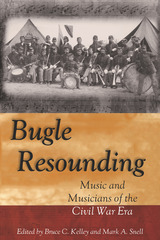 Bugle Resounding: Music and Musicians of the Civil War Era
Edited by Bruce C. Kelley & Mark A. Snell
University of Missouri Press, 2004 In the mid-nineteenth century the United States was musically vibrant. Rising industrialization, a growing middle class, and increasing concern for the founding of American centers of art created a culture that was rich in musical capital. Beyond its importance to the people who created and played it is the fact that this music still influences our culture today. Although numerous academic resources examine the music and musicians of the Civil War era, the research is spread across a variety of disciplines and is found in a wide array of scholarly journals, books, and papers. It is difficult to assimilate this diverse body of research, and few sources are dedicated solely to a rigorous and comprehensive investigation of the music and the musicians of this era. This anthology, which grew out of the first two National Conferences on Music of the Civil War Era, is an initial attempt to address that need.
Those conferences established the first academic setting solely devoted to exploring the effects of the Civil War on music and musicians. Bridging musicology and history, these essays represent the forefront of scholarship in music of the Civil War era. Each one makes a significant contribution to research in the music of this era and will ultimately encourage more interdisciplinary research on a subject that has relevance both for its own time and for ours. The result is a readable, understandable volume on one of the few understudied—yet fascinating—aspects of the Civil War era.
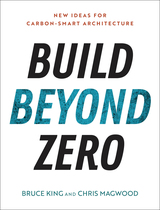 Build Beyond Zero: New Ideas for Carbon-Smart Architecture
Bruce King and Chris Magwood
Island Press, 2022 “Net Zero” has been an effective rallying cry for the green building movement, signaling a goal of having every building generate at least as much energy as it uses. Enormous strides have been made in improving the performance of every type of new building, and even more importantly, renovating the vast and energy-inefficient collection of existing buildings in every country. If we can get every building to net-zero energy use in the next few decades, it will be a huge success, but it will not be enough.
In Build Beyond Zero, carbon pioneers Bruce King and Chris Magwood re-envision buildings as one of our most practical and affordable climate solutions instead of leading drivers of climate change. They provide a snapshot of a beginning and map towards a carbon-smart built environment that acts as a CO2 filter. Professional engineers, designers, and developers are invited to imagine the very real potential for our built environment to be a site of net carbon storage, a massive drawdown pool that could help to heal our climate.
The authors, with the help of other industry experts, show the importance of examining what components of an efficient building (from windows to solar photovoltaics) are made with, and how the supply chains deliver all those products and materials to a jobsite. Build Beyond Zero looks at the good and the bad of how we track carbon (Life Cycle Assessment), then takes a deep dive into materials (with a focus on steel and concrete) and biological architecture, and wraps up with education, policy and governance, circular economy, and where we go in the next three decades.
In Build Beyond Zero, King and Magwood show how buildings are culprits but stand poised to act as climate healers. They offer an exciting vision of climate-friendly architecture, along with practical advice for professionals working to address the carbon footprint of our built environment.
Build With Adobe
Marcia Southwick
Ohio University Press, 1974 This practical guide to building adobe homes was written from the author's many years of experience with adobe, and it is refreshingly no-nonsense:
“What can you spend?”
“Where will you put it?”
“Who is going to build it?”
This new updated and enlarged edition includes hundreds of photographs, drawings and house plans as well as new information about passive solar heating and cooling, and specific details on construction.
 Building a Better Bridge: Muslims, Christians, and the Common Good
Michael Ipgrave, Editor
Georgetown University Press, 2008 Building a Better Bridge is a record of the fourth "Building Bridges" seminar held in Sarajevo in 2005 as part of an annual symposium on Muslim-Christian relations cosponsored by Georgetown University and the Archbishop of Canterbury. This volume presents the texts of the public lectures with regional presentations on issues of citizenship, religious believing and belonging, and the relationship between government and religion—both from the immediate situation in Bosnia-Herzegovina and from three contexts further afield: Britain, Malaysia, and West Africa. Both Christian and Muslim scholars propose key questions to be faced in addressing the issue of the common good. How do we approach the civic sphere as believers in particular faiths and as citizens of mixed societies? What makes us who we are, and how do our religious and secular allegiances relate to one another? How do we accommodate our commitment to religious values with acknowledgment of human disagreement, and how can this be expressed in models of governance and justice? How are we, mandated by scriptures to be caretakers, to respond to the current ecological and economic disorder of our world? Michael Ipgrave and his contributors do not claim to provide definitive answers to these questions, but rather they further a necessary dialogue and show that, while Christian and Islamic understandings of God may differ sharply and perhaps irreducibly, the acknowledgment of one another as people of faith is the surest ground on which to build trust, friendship, and cooperation.
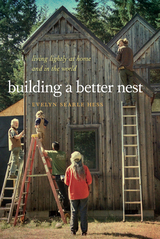 Building a Better Nest: Living Lightly at Home and in the World
Evelyn Searle Hess
Oregon State University Press, 2015 For fifteen years, Evelyn Hess and her husband David lived in a tent and trailer, without electricity or running water, on twenty acres of wild land in the foothills of the Oregon Coast Range. When they decided to build a house – a real house at last – they knew it would have to respect the lessons of simple living that they learned in their camping life. They knew they could not do it alone. Building a Better Nest chronicles their adventures as they begin to construct a house of their own, seeking a model for sustainable living not just in their home, but beyond its walls.
What does it mean to build a better nest? Better for whom? Is it better for the individual or family? The planet? Green building and sustainable design are popular buzzwords, but to Hess, sustainable building is not a simple matter of buying and installing the latest recycled flooring products. It is also about cooperative work: working together in employment, in research, in activism, and in life. Hess is concerned with her local watershed, but also with the widening income gap, disappearing species, and peak resources. She actively works to reduce overconsumption and waste. For Hess, these problems are both philosophical and practical.
As Hess and her husband age, the questions of how to live responsibly arise with greater frequency and urgency. With unfailing wit and humor, she looks for answers in such places as neuroscience, Buddhism, and her ancestral legacy. Building a Better Nest will appeal to anyone with an interest in sustainable building, off-grid living, or alternative communities. The questions it asks about the way we live are earnest and important, from an author whose voice is steeped in wisdom and gratitude.
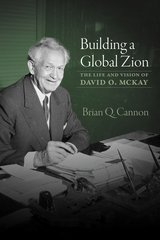 Building a Global Zion: The Life and Vision of David O. McKay
Brian Q. Cannon
Signature Books, 2025 Called as an apostle in 1906, David O. McKay devoted the remaining sixty-four years of his life to serving in the Church of Jesus Christ of Latter-day Saints, including nineteen as church president. That lengthy tenure, combined with his warmth, extensive personal ministry, broadmindedness, deep spirituality, and unprecedented global travel made him one of the church’s most beloved and influential leaders of all time. When he died in 1970, roughly 60 percent of the church’s membership had known no other church president. Memories of McKay’s teachings and ministry remain a taproot for the spiritual convictions and values of many Latter-day Saints. Brian Q. Cannon’s biography offers a fresh perspective on important features of McKay’s life, showing how his mission to Scotland, round-the-world tour as an apostle, and service as president of the European Mission shaped his global vision and priorities. Building a Global Zion illuminates previously underappreciated facets of McKay’s reach, including his crusades against alcohol consumption and political corruption, his long-term administration of missionary work, his spiritual impressions, his personnel decisions, and his mediation of interpersonal impasses in administrative settings. Cannon carefully reconstructs facets of McKay’s vast ministry to individuals, highlights distinctive themes of his teachings, and explores challenges that confronted McKay’s associates as his health and acuity waned.
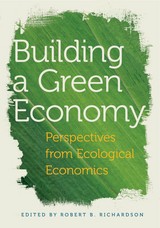 Building a Green Economy: Perspectives from Ecological Economics
Robert B. Richardson
Michigan State University Press, 2013 The first decade of the twenty-first century has been characterized by a growing global awareness of the tremendous strains that human economic activity place on natural resources and the environment. As the world’s population increases, so does the demand for energy, food, and other resources, which adds to existing stresses on ecosystems, with potentially disastrous consequences. Humanity is at a crossroads in our pathway to future prosperity, and our next steps will impact our long-term sustainability immensely. In this timely volume, leading ecological economics scholars offer a variety of perspectives on building a green economy. Grounded in a critique of conventional thinking about unrestrained economic expansion and the costs of environmental degradation, this book presents a roadmap for an economy that prioritizes human welfare over consumerism and growth. As the authors represented here demonstrate, the objective of ecological economics is to address contemporary problems and achieve long-term socioeconomic well-being without undermining the capacity of the ecosphere. The volume is organized around three sections: “Perspectives on a Green Economy,” “Historical and Theoretical Perspectives,” and “Applications and Practice.” A rich resource in its own right, Building a Green Economy contains the most innovative thinking in ecological economics at a critical time in the reexamination of the human relationship with the natural world.
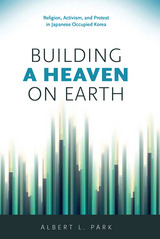 Building a Heaven on Earth: Religion, Activism, and Protest in Japanese Occupied Korea
Albert L. Park
University of Hawaii Press, 2015 Why and how did Korean religious groups respond to growing rural poverty, social dislocation, and the corrosion of culture caused by forces of modernization under strict Japanese colonial rule (1910–1945)? Questions about religion’s relationship and response to capitalism, industrialization, urbanization, and secularization lie at the heart of understanding the intersection between colonialism, religion, and modernity in Korea. Yet, getting answers to these questions has been a challenge because of narrow historical investigations that fail to study religious processes in relation to political, economic, social, and cultural developments. In Building a Heaven on Earth, Albert L. Park studies the progressive drives by religious groups to contest standard conceptions of modernity and forge a heavenly kingdom on the Korean peninsula to relieve people from fierce ruptures in their everyday lives. The results of his study will reconfigure the debates on colonial modernity, the origins of faith-based social activism in Korea, and the role of religion in a modern world.
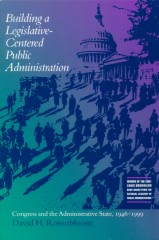 Building a Legislative-Centered Public Administration: Congress and the Administrative State, 1946-1999
David Rosenbloom
University of Alabama Press, 2002 2001 Louis Brownlow Award from the National Academy of Public Administration
Reimagining public administration through the lens of constitutional governance and legislative intent. Before 1946 the congressional role in public administration had been limited to authorization, funding, and review of federal administrative operations, which had grown rapidly as a result of the New Deal and the Second World War. But in passing the Administrative Procedure Act and the Legislative Reorganization Act that pivotal year, Congress self-consciously created for itself a comprehensive role in public administration. Reluctant to delegate legislative authority to federal agencies, Congress decided to treat the agencies as extensions of itself and established a framework for comprehensive regulation of the agencies' procedures. Additionally, Congress reorganized itself so it could provide continuous supervision of federal agencies.
Rosenbloom shows how these 1946 changes in the congressional role in public administration laid the groundwork for future major legislative acts, including the Freedom of Information Act (1966), Privacy Act (1974), Government in the Sunshine Act (1976), Paperwork Reduction Acts (1980, 1995), Chief Financial Officers Act (1990), and Small Business Regulatory Fairness Enforcement Act (1996). Each of these acts, and many others, has contributed to the legislative-centered public administration that Congress has formed over the past 50 years.
This first book-length study of the subject provides a comprehensive explanation of the institutional interests, values, and logic behind the contemporary role of Congress in federal administration and attempts to move the public administration field beyond condemning legislative "micromanagement" to understanding why Congress values it.
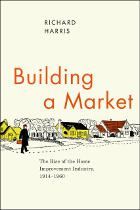 Building a Market: The Rise of the Home Improvement Industry, 1914-1960
Richard Harris
University of Chicago Press, 2012 Each year, North Americans spend as much money fixing up their homes as they do buying new ones. This obsession with improving our dwellings has given rise to a multibillion-dollar industry that includes countless books, consumer magazines, a cable television network, and thousands of home improvement stores. Building a Market charts the rise of the home improvement industry in the United States and Canada from the end of World War I into the late 1950s. Drawing on the insights of business, social, and urban historians, and making use of a wide range of documentary sources, Richard Harris shows how the middle-class preference for home ownership first emerged in the 1920s—and how manufacturers, retailers, and the federal government combined to establish the massive home improvement market and a pervasive culture of Do-It-Yourself. Deeply insightful, Building a Market is the carefully crafted history of the emergence and evolution of a home improvement revolution that changed not just American culture but the American landscape as well.
 Building a Nation at War: Transnational Knowledge Networks and the Development of China during and after World War II
J. Megan Greene
Harvard University Press, 2022 Building a Nation at War argues that the Chinese Nationalist government’s retreat inland during the Sino-Japanese War (1937–1945), its consequent need for inland resources, and its participation in new scientific and technical relationships with the United States led to fundamental changes in how the Nationalists engaged with science and technology as tools to promote development.
The war catalyzed an emphasis on applied sciences, comprehensive economic planning, and development of scientific and technical human resources—all of which served the Nationalists’ immediate and long-term goals. It created an opportunity for the Nationalists to extend control over inland China and over education and industry. It also provided opportunities for China to mobilize transnational networks of Chinese-Americans, Chinese in America, and the American government and businesses. These groups provided technical advice, ran training programs, and helped the Nationalists acquire manufactured goods and tools. J. Megan Greene shows how the Nationalists worked these programs to their advantage, even in situations where their American counterparts clearly had the upper hand. Finally, this book shows how, although American advisers and diplomats criticized China for harboring resources rather than putting them into winning the war against Japan, US industrial consultants were also strongly motivated by postwar goals.
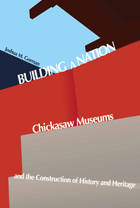 Building a Nation: Chickasaw Museums and the Construction of History and Heritage
Joshua M. Gorman
University of Alabama Press, 2011 Using museum and heritage sites as places to define itself as a coherent and legitimate contemporary Indian nation, the Chickasaw Nation struggles to remain accurate and yet apace with the evolving nature of museums
The Chickasaw Nation, an American Indian nation headquartered in southeastern Oklahoma, entered into a period of substantial growth in the late 1980s. Following its successful reorganization and expansion, which was enabled by federal policies for tribal self-determination, the Nation pursued gaming and other industries to affect economic growth. From 1987 to 2009 the Nation’s budget increased exponentially as tribal investments produced increasingly large revenues for a growing Chickasaw population. Coincident to this growth, the Chickasaw Nation began acquiring and creating museums and heritage properties to interpret their own history, heritage, and culture through diverse exhibitionary representations. By 2009, the Chickasaw Nation directed representation of itself at five museum and heritage properties throughout its historic boundaries.
Josh Gorman examines the history of these sites and argues that the Chickasaw Nation is using museums and heritage sites as places to define itself as a coherent and legitimate contemporary Indian nation. In doing so, they are necessarily engaging with the shifting historiographical paradigms as well as changing articulations of how museums function and what they represent. The roles of the Chickasaw Nation’s museums and heritage sites in defining and creating discursive representations of sovereignty are examined within their historicized local contexts. The work describes the museum exhibitions’ dialogue with the historiography of the Chickasaw Nation, the literature of new museum studies, and the indigenous exhibitionary grammars emerging from indigenous museums throughout the United States and the world.
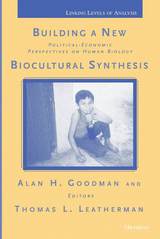 Building a New Biocultural Synthesis: Political-Economic Perspectives on Human Biology
Alan H. Goodman and Thomas L. Leatherman, Editors
University of Michigan Press, 1998 Anthropology, with its dual emphasis on biology and culture, is--or should be--the discipline most suited to the study of the complex interactions between these aspects of our lives. Unfortunately, since the early decades of this century, biological and cultural anthropology have grown distinct, and a holistic vision of anthropology has suffered.
This book brings culture and biology back together in new and refreshing ways. Directly addressing earlier criticisms of biological anthropology, Building a New Biocultural Synthesis concerns how culture and political economy affect human biology--e.g., people's nutritional status, the spread of disease, exposure to pollution--and how biological consequences might then have further effects on cultural, social, and economic systems.
Contributors to the volume offer case studies on health, nutrition, and violence among prehistoric and historical peoples in the Americas; theoretical chapters on nonracial approaches to human variation and the development of critical, humanistic and political ecological approaches in biocultural anthropology; and explorations of biological conditions in contemporary societies in relationship to global changes.
Building a New Biocultural Synthesis will sharpen and enrich the relevance of anthropology for understanding a wide variety of struggles to cope with and combat persistent human suffering. It should appeal to all anthropologists and be of interest to sister disciplines such as nutrition and sociology.
Alan H. Goodman is Professor of Anthropology, Hampshire College. Thomas L. Leatherman is Associate Professor of Anthropology, University of South Carolina.
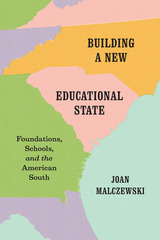 Building a New Educational State: Foundations, Schools, and the American South
Joan Malczewski
University of Chicago Press, 2016 Building a New Educational State examines the dynamic process of black education reform during the Jim Crow era in North Carolina and Mississippi. Through extensive archival research, Joan Malczewski explores the initiatives of foundations and reformers at the top, the impact of their work at the state and local level, and the agency of southerners—including those in rural black communities—to demonstrate the importance of schooling to political development in the South. Along the way, Malczewski challenges us to reevaluate the relationships among political actors involved in education reform.
Malczewski presents foundation leaders as self-conscious state builders and policy entrepreneurs who aimed to promote national ideals through a public system of education—efforts they believed were especially critical in the South. Black education was an important component of this national agenda. Through extensive efforts to create a more centralized and standard system of public education aimed at bringing isolated and rural black schools into the public system, schools became important places for expanding the capacity of state and local governance. Schooling provided opportunities to reorganize local communities and augment black agency in the process. When foundations realized they could not unilaterally impose their educational vision on the South, particularly in black communities, they began to collaborate with locals, thereby opening political opportunity in rural areas. Unfortunately, while foundations were effective at developing the institutional configurations necessary for education reform, they were less successful at implementing local programs consistently due to each state’s distinctive political and institutional context.
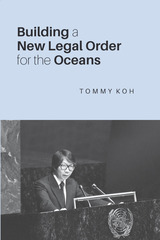 Building a New Legal Order for the Oceans
Tommy Koh
National University of Singapore Press, 2019 The United Nations Convention on the Law of the Sea, or UNCLOS, has been called a constitution for the oceans. It keeps order in the world’s oceans and regulates nations’ use of their natural resources. Tommy Koh served as president of the third convention, a multi-year meeting that resulted in this important treaty for the government of the global commons. In Building a New Legal Order for the Oceans, Koh brings a unique, insider’s perspective on the UNCLOS negotiation process, and the concepts, tensions, and intentions that underlie today’s Law of the Sea.
In this book, Koh fully explains the many new concepts of international law that arose from UNCLOS III, such as the Exclusive Economic Zone, Archipelagic State, Straits Used for International Navigation, Transit Passage, Archipelagic Sealane Passage, and the Common Heritage of Mankind. He also discusses current threats to maritime security and explains the intricacies of the disputes in the South China Sea. Koh asks What can be learned from the success of UNCLOS? How can we build on that success and manage the new tensions that arise in the Law of the Sea? There is no better guide to this aspect of international law than Koh.
Building a New World Order: Sustainable Policies for the Future
Harald Müller
Haus Publishing, 2009 Building a New World Order: Sustainable Policies for the Future demonstrates how the conditions for sustainable development might be created, and why all our futures are dependent on a global engagement and involvement, not just that of a few selected statesmen.
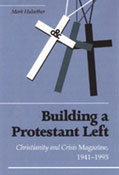 Building A Protestant Left: Christianity And Crisis Magazine, 1941-1993
Mark Hulsether
University of Tennessee Press, 1999 Founded in 1941 by Reinhold Niebuhr and others, the magazine Christianity and Crisis (C&C) achieved a level of influence far exceeding its small circulation. A forum for important writers ranging from Paul Tillich to Rosemary Ruether, from George Kennan to Noam Chomsky, from Margaret Mead to Cornel West, from Lewis Mumford to Daniel Berrigan, C&C for half a century commanded great respect in left-liberal circles, both religious and secular.
In Building a Protestant Left, Mark Hulsether uses the history of C&C as a case study to explore changing ideas about religion and society in the latter half of the twentieth century. He follows the twists and turns of this story from Niebuhr's Christian realist positions of the 1940s, through Protestant participation in the complex social movements of the 1950s and 1960s, to the emergence of various liberation theologies—African American, feminist, Latin American, and others—that used C&C as a central arena of debate in the 1970s and 1980s. Throughout, Hulsether places these changes in the context of postwar cultural and social history, relating C&C's theological and ethical positions to the broader social and political issues the journal addressed. Included, for example, is an illuminating discussion of C&C's positions in relation to one of the major developments of recent decades: the rise of neoconservatism and the religious right.
Engagingly written, Building a Protestant Left bridges the gap between secularized history and cultural studies on the one hand and traditional religious studies and religious ethics on the other. It also bridges an important generational gap within public-minded religious thought—it is as well informed on the issues that engaged the magazine during Niebuhr's heyday (from the 1940 to the 1960s) as on the liberation theologies and other radical positions that came afterward.
The Author: Mark Hulsether is assistant professor of religious studies and American studies at the University of Tennessee, Knoxville.
 Building a Public Judaism: Synagogues and Jewish Identity in Nineteenth-Century Europe
Saskia Coenen Snyder
Harvard University Press, 2012 Nineteenth-century Europe saw an unprecedented rise in the number of synagogues. Building a Public Judaism considers what their architecture and the circumstances surrounding their construction reveal about the social progress of modern European Jews. Looking at synagogues in four important centers of Jewish life—London, Amsterdam, Paris, and Berlin—Saskia Coenen Snyder argues that the process of claiming a Jewish space in European cities was a marker of acculturation but not of full acceptance. Whether modest or spectacular, these new edifices most often revealed the limits of European Jewish integration.
Debates over building initiatives provide Coenen Snyder with a vehicle for gauging how Jews approached questions of self-representation in predominantly Christian societies and how public manifestations of their identity were received. Synagogues fused the fundamentals of religion with the prevailing cultural codes in particular locales and served as aesthetic barometers for European Jewry’s degree of modernization. Coenen Snyder finds that the dialogues surrounding synagogue construction varied significantly according to city. While the larger story is one of increasing self-agency in the public life of European Jews, it also highlights this agency’s limitations, precisely in those places where Jews were thought to be most acculturated, namely in France and Germany.
Building a Public Judaism grants the peculiarities of place greater authority than they have been given in shaping the European Jewish experience. At the same time, its place-specific description of tensions over religious tolerance continues to echo in debates about the public presence of religious minorities in contemporary Europe.
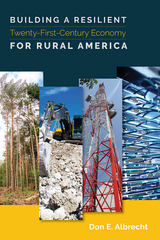 Building a Resilient Twenty-First-Century Economy for Rural America
Don E. Albrecht
Utah State University Press, 2020 In Building a Resilient Twenty-First-Century Economy for Rural America, Don E. Albrecht visits rural communities that have traditionally been dependent on a variety of goods-producing industries, explores what has happened as employment in these industries has declined, and provides a path by which they can build a vibrant twenty-first-century economy. Albrecht describes how structural economic changes led rural voters to support Donald Trump in the 2016 election and why his policies will not relieve the economic problems of rural residents.
Trump’s promises to restore rural industrial jobs simply cannot be fulfilled because his policies do not address the base cause for this job loss—technological change, the most significant factor being the machine replacement of human labor in the production process. Bringing a personal understanding of the effects on rural communities and residents, Albrecht focuses each chapter on a community that has traditionally been economically dependent on a single industry—manufacturing, coal mining, agriculture, logging, oil and gas production, and tourism—and the consequences of losing that industry. He also lays out a plan for rebuilding America’s rural areas and creating an economically vibrant country with a more sustainable future.
The rural economy cannot return to the past as it was structured and instead must look to a new future. Building a Resilient Twenty-First-Century Economy for Rural America describes the source of economic concerns in rural America and offers real ways to address them. It will be vital to students, scholars, practitioners, community leaders, politicians, and policy makers concerned with rural community development.
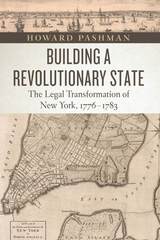 Building a Revolutionary State: The Legal Transformation of New York, 1776-1783
Howard Pashman
University of Chicago Press, 2018 How does a popular uprising transform itself from the disorder of revolution into a legal system that carries out the daily administration required to govern? Americans faced this question during the Revolution as colonial legal structures collapsed under the period’s disorder. Yet by the end of the war, Americans managed to rebuild their courts and legislatures, imbuing such institutions with an authority that was widely respected. This remarkable transformation came about in unexpected ways. Howard Pashman here studies the surprising role played by property redistribution—seizing it from Loyalists and transferring it to supporters of independence—in the reconstruction of legal order during the Revolutionary War.
Building a Revolutionary State looks closely at one state, New York, to understand the broader question of how legal structures emerged from an insurgency. By examining law as New Yorkers experienced it in daily life during the war, Pashman reconstructs a world of revolutionary law that prevailed during America’s transition to independence. In doing so, Pashman explores a central paradox of the revolutionary era: aggressive enforcement of partisan property rules actually had stabilizing effects that allowed insurgents to build legal institutions that enjoyed popular support. Tracing the transformation from revolutionary disorder to legal order, Building a New Revolutionary State gives us a radically fresh way to understand the emergence of new states.
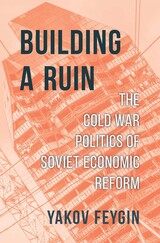 Building a Ruin: The Cold War Politics of Soviet Economic Reform
Yakov Feygin
Harvard University Press, 2024 A masterful account of the global Cold War’s decisive influence on Soviet economic reform, and the national decay that followed.
What brought down the Soviet Union? From some perspectives the answers seem obvious, even teleological—communism was simply destined to fail. When Yakov Feygin studied the question, he came to another conclusion: at least one crucial factor was a deep contradiction within the Soviet political economy brought about by the country’s attempt to transition from Stalinist mass mobilization to a consumer society.
Building a Ruin explores what happened in the Soviet Union as institutions designed for warfighting capacity and maximum heavy industrial output were reimagined by a new breed of reformers focused on “peaceful socioeconomic competition.” From Khrushchev on, influential schools of Soviet planning measured Cold War success in the same terms as their Western rivals: productivity, growth, and the availability of abundant and varied consumer goods. The shift was both material and intellectual, with reformers taking a novel approach to economics. Instead of trumpeting their ideological bona fides and leveraging their connections with party leaders, the new economists stressed technical expertise. The result was a long and taxing struggle for the meaning of communism itself, as old-guard management cadres clashed with reformers over the future of central planning and the state’s relationship to the global economic order.
Feygin argues that Soviet policymakers never resolved these tensions, leading to stagnation, instability, and eventually collapse. Yet the legacy of reform lingers, its factional dynamics haunting contemporary Russian politics.
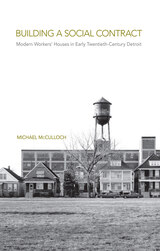 Building a Social Contract: Modern Workers' Houses in Early-Twentieth Century Detroit
McCulloch, Michael
Temple University Press, 2023 The dream of the modern worker’s house emerged in early twentieth-century America as wage earners gained access to new, larger, and better-equipped dwellings. Building a Social Contract is a cogent history of the houses those workers dreamed of and labored for. Michael McCulloch chronicles the efforts of employers, government agencies, and the building industry who, along with workers themselves, produced an unprecedented boom in housing construction that peaked in the mid-1920s.
Through oral histories, letters, photographs, and period fiction, McCulloch traces wage earners’ agency in negotiating a new implicit social contract, one that rewarded hard work with upward mobility in modern houses. This promise reflected workers’ increased bargaining power but, at the same time, left them increasingly vulnerable to layoffs.
Building a Social Contract focuses on Detroit, the quintessential city of the era, where migrant workers came and were Americanized, and real estate agents and the speculative housebuilding industry thrived. The Motor City epitomized the struggle of Black workers in this period, who sought better lives through industrial labor but struggled to translate their wages into housing security amid racist segregation and violence. When Depression-era unemployment created an eviction crisis, the social contract unraveled, and workers rose up—at the polls and in the streets—to create a labor movement that reshaped American capitalism for decades.
Today, the lessons McCulloch provides from early twentieth-century Detroit are a necessary reminder that wages are not enough, and only working-class political power can secure affordable housing.
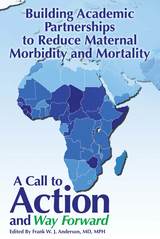 Building Academic Partnerships to Reduce Maternal Morbidity and Mortality: A Call to Action and Way Forward
Frank W.J. Anderson
Michigan Publishing, 2014 This book presents the collective wisdom of a group of Obstetrician/Gynecologists (OB/GYNs) from around the world brought together at the 2012 meeting of the International Federation of Gynecology and Obstetrics (FIGO) to contribute their ideas and expertise in an effort to reduce maternal and neonatal morbidity and mortality and obstetric fistula in sub Saharan Africa (SSA). The discussions focused on how to increase human capacity in the field of obstetrics and gynecology. The meeting was hosted by the University of Michigan Department of Obstetrics and Gynecology Global Initiatives program and was supported through a grant from the Flora Family Foundation. Within the pages of this document, the current status of women’s health and OB/GYN training programs in 10 sub-Saharan African countries are described, with a Call to Action and Way Forward to training new OBGYNs in country. These are the words of obstetricians in the field, some who work as lone faculty in fledgling OB/GYN departments. These committed people are charged with the task of not only teaching the next generation, but may be the only OBGYN per 500,000 population or more. Their tireless pursuits are recognized, and their yearning for collegial support is palpable. Every country should have a cadre of highly trained OB/GYNs to teach the next generation, contribute to policy development and advocate for progressive legislation, conduct the research needed to solve local clinical problems, and contribute to the field of women’s health in general. But most of all, it must be recognized that women across the globe have the right to access a full scope and high quality obstetrical and gynecological care when and where they need it. These pages bring to light successes achieved and shared, and lessons learned that have already spurred new programs and given hope to those eager for a new way forward.
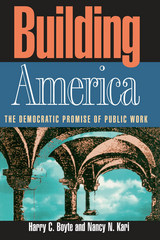 Building America
Harry Boyte
Temple University Press, 1996 "...a marvelous piece of work. This is a book much needed, and deeply appreciated by those of us sometimes so mired in our corners of the world that we forget how many others there are out there with us."
--Deborah Meier, author of The Power of Their Ideas and director of Central Park East Schools
Throughout history, work has always been the taproot of American democracy, enabling diverse people to forge connections with each other and to address the nation's problems. Through work, people gain greater visibility, authority, and a larger intellectual horizon. They come to see themselves as creators of their communities, stakeholders in the country, and guardians of the commonwealth.
Building America, in a pathbreaking analysis of diverse civic practices, argues that work is the center of effective citizenship. As late as the New Deal Era, Abraham Lincoln's idea of work-centered government remained vibrant and fueled reform movements like union organizing. Many jobs, local schools, community groups, the Civilian Conservation Corp., and other settings provided rich experiences in public work. Images of work filled popular culture--Will Rogers movies, Langston Hughes's poetry, post office art. But today, work has lost its larger meaning, and government has become largely a service provider.
From low income communities to colleges, high-tech newspapers to government agencies and schools, Harry C. Boyte and Nancy N. Kari look to the revival of public-spirited work as a key to the rebirth of democracy in our time. Their exploration of the larger meanings of work leads to provocatively different approaches to change. These include many examples of citizen-government partnership in solving problems. By working on school reform and economic development in Baltimore, the mainly black group BUILD created a public space for overcoming searing racial divisions. Boyte and Kari explore new initiatives like the public journalism movement aimed at strengthening journalists' responsibilities to improve democracy. They offer lessons for turning jobs into public work in our changing economy. Building America concludes with a call for national action to renew the idea of "government by the people" through public work.
"Harry Boyte and Nancy Kari make an invaluable contribution by reminding us that democracy is about action, solving problems, and all that is implied in 'public work.'"
--David Mathews, President, Kettering Foundation
"Harry Boyte and Nancy Kari have captured the words and music of Americans doing the serious work of democracy. They show us the path to restoring vitality to the American experience."
--David Cohen, Co-director, Advocacy Institute
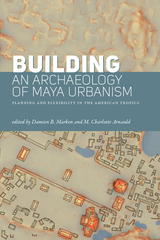 Building an Archaeology of Maya Urbanism: Planning and Flexibility in the American Tropics
Damien B. Marken and M. Charlotte Arnauld
University Press of Colorado, 2023 Building an Archaeology of Maya Urbanism tears down entrenched misconceptions of Maya cities to build a new archaeology of Maya urbanism by highlighting the residential dynamics that underwrote one of the most famous and debated civilizations of the ancient Americas. Exploring the diverse yet interrelated agents and processes that modified Maya urban landscapes over time, this volume highlights the adaptive flexibility of urbanization in the tropical Maya lowlands.
Integrating recent lidar survey data with more traditional excavation and artifact-based archaeological practices, chapters in this volume offer broadened perspectives on the patterns of Maya urban design and planning by viewing bottom-up and self-organizing processes as integral to the form, development, and dissolution of Classic lowland cities alongside potentially centralized civic designs. Full of innovative examples of how to build an archaeology of urbanism that can be applied not just to the lowland Maya and across the region, Building an Archaeology of Maya Urbanism simultaneously improves interpretations of lowland Maya culture history and contributes to empirical and comparative discussions of tropical, non-Western cities worldwide.
Contributors: Divina Perla Barrera, Arianna Campiani, Cyril Castanet, Adrian S. Z. Chase, Lydie Dussol, Sara Dzul Góngora, Keith Eppich, Thomas Garrison, María Rocio González de la Mata, Timothy Hare, Julien Hiquet, Takeshi Inomata, Eva Lemonnier, José Francisco Osorio León, Marilyn Masson, Elsa Damaris Menéndez, Timothy Murtha, Philippe Nondédéo, Keith M. Prufer, Louise Purdue, Francisco Pérez Ruíz, Julien Sion, Travis Stanton, Rodrigo Liendo Stuardo, Karl A. Taube, Marc Testé, Amy E. Thompson, Daniela Triadan
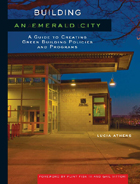 Building an Emerald City: A Guide to Creating Green Building Policies and Programs
Lucia Athens
Island Press, 2009 In 2000, Seattle, Washington, became the first U.S. city to officially adopt the U.S. Green Building Council’s LEED (Leadership in Energy and Environmental Design) “Silver” standards for its own major construction projects. In the midst of a municipal building boom, it set new targets for building and remodeling to LEED guidelines. Its first LEED certified project, the Seattle Justice Center, was completed in 2002. The city is now home to one of the highest concentrations of LEED buildings in the world.
Building an Emerald City is the story of how Seattle transformed itself into a leader in sustainable “green” building, written by one of the principal figures in that transformation. It is both a personal account—filled with the experiences and insights of an insider—and a guide for anyone who wants to bring about similar changes in any city. It includes “best practice” models from municipalities across the nation, supplemented by the contributions of “guest authors” who offer stories and tips from their own experiences in other cities.
Intended as a “roadmap” for policy makers, public officials and representatives, large-scale builders and land developers, and green advocates of every stripe, Building an Emerald City is that rare book—one that is both inspirational and practical.
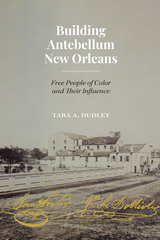 Building Antebellum New Orleans: Free People of Color and Their Influence
By Tara A. Dudley
University of Texas Press, 2021 2024 Spiro Kostof Book Award, Society of Architectural Historians
2022 PROSE Award in Architecture and Urban Planning
2022 Summerlee Book Prize in Nonfiction, Center for History and Culture of Southeast Texas and the Upper Gulf Coast
2022 Best Book Prize, Southeast Chapter of the Society of Architectural Historians
2022 On the Brinck Book Award, University of New Mexico School of Architecture + Planning
A significant and deeply researched examination of the free nineteenth-century Black developers who transformed the cultural and architectural legacy of New Orleans. The Creole architecture of New Orleans is one of the city’s most-recognized features, but studies of it largely have focused on architectural typology. In Building Antebellum New Orleans, Tara A. Dudley examines the architectural activities and influence of gens de couleur libres—free people of color—in a city where the mixed-race descendants of whites and other free Blacks could own property. Between 1820 and 1850 New Orleans became an urban metropolis and industrialized shipping center with a growing population. Amidst dramatic economic and cultural change in the mid-antebellum period, the gens de couleur libres thrived as property owners, developers, building artisans, and patrons. Dudley writes an intimate microhistory of two prominent families of Black developers, the Dollioles and Souliés, to explore how gens de couleur libres used ownership, engagement, and entrepreneurship to construct individual and group identity and stability. With deep archival research, Dudley re-creates in fine detail the material culture, business and social history, and politics of the built environment for free people of color and adds new, revelatory information to the canon on New Orleans architecture.
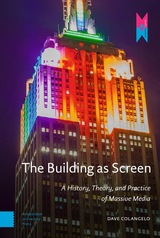 The Building as Screen: A History, Theory, and Practice of Massive Media
Dave Colangelo
Amsterdam University Press, 2020 The Building as Screen: A History, Theory, and Practice of Massive Media describes, historicizes, theorizes, and creatively deploys massive media -- a set of techno-social assemblages and practices that include large outdoor projections, programmable architectural façades, and urban screens -- in order to better understand their critical and creative potential. Massive media is named as such not only because of the size and subsequent visibility of this phenomenon but also for its characteristic networks and interactive screen and cinema-like qualities. Examples include the programmable lighting of the Empire State Building and the interactive projections of Montreal’s Quartier des spectacles, as well as a number of works created by the author himself. This book argues that massive media enables and necessitates the development of new practices of expanded cinema, public data visualization, and installation art and curation that blend the logics of urban space, monumentality, and the public sphere with the aesthetics and affordances of digital information and the moving image.
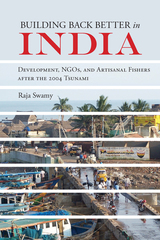 Building Back Better in India: Development, NGOs, and Artisanal Fishers after the 2004 Tsunami
Raja Swamy
University of Alabama Press, 2021 Critically examines the role of humanitarian aid and disaster reconstruction
Building Back Better in India: Development, NGOs, and Artisanal Fishers after the 2004 Tsunami addresses the ways in which natural disasters impact the strategies and priorities of neoliberalizing states in the contemporary era. In the light of growing scholarly and public concern over “disaster capitalism” and the tendency of states and powerful international financial institutions to view disasters as “opportunities” to “build back better,” Raja Swamy offers an ethnographically rich account of post-disaster reconstruction, its contested aims, and the mixed outcomes of state policy, humanitarian aid, and local resistance. Using the 2004 Indian Ocean tsunami as a case study, Swamy investigates the planning and implementation of a reconstruction process that sought to radically transform the geography of a coastal district in the Indian state of Tamil Nadu.
Drawing on an ethnographic study conducted in Tamil Nadu’s Nagapattinam District, Swamy shows how and why the state-led, multilaterally financed, and NGO-mediated reconstruction prioritized the displacement of coastal fisher populations. Exploring the substantive differences shaping NGO action, specifically in response to core political questions affecting the well-being of their ostensible beneficiaries, this account also centers the political agency of disaster survivors and their allies among NGOs in contesting the meanings of recovery while navigating the process of reconstruction.
If humanitarian aid brought together NGOs and fishers as givers and recipients of aid, it also revealed in its workings competing and sometimes contradictory assumptions, goals, interests, and strategies driving the fraught historical relationship between artisanal fishers and the state. Importantly, this research foregrounds the ambiguous role of NGOs involved in the distribution of aid, as well as the agency and strategic actions of the primary recipients of aid—the fishers of Nagapattinam—as they struggled with a reconstruction process that made receipt of the humanitarian gift of housing conditional on the formal abandonment of all claims to the coast. Building Back Better in India thus bridges scholarly concerns with disasters, humanitarianism, and economic development with those focused on power, agency, and resistance.
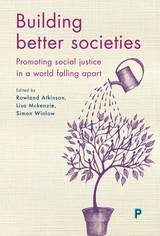 Building Better Societies
Edited by Rowland Atkinson, Lisa Mckenzie, and Simon Winlow
Bristol University Press, 2017 From environmental decline to growing economic inequality, things are getting worse for the majority of the human race and will continue to worsen until determined action is taken. Starting from this vantage point, Building Better Societies looks to social scientists to identify what is needed to solve the problems that are leading to a collapse of civil society. This is the first book to collect the ideas of those whose research on social conditions is at the forefront of our biggest societal problems.
Challenging fellow social scientists to cast aside their commitment to the established order and its ideological support systems, Building Better Societies argues that social researchers must, as objectively as possible, use their skills to look ahead, identify the likely outcomes of various forms of intervention, and move to the forefront of informed political debate. Bringing together expert contributors researching the many aspects of our social condition, this book channels the energy of social scientists into a more normative and engaged voice; it asks them what mechanisms, interventions, and evidence we might draw on as we make a better world.
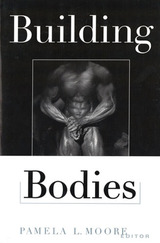 Building Bodies
Moore, Pamela L
Rutgers University Press, 1997 Building Bodies is an exciting collection of articles that strive toward constructing theoretical models in which power, bodies, discourse, and subjectivity interact in a space we can call the "built" body, a dynamic, politicized, and biological site. Contributors discuss the complex relationship between body building and masculinity, between the built body and the racialized body, representations of women body builders in print and in film, and homoeroticism in body building. Linked by their focus on the sport and practice of body building, the authors in this volume challenge both the way their various disciplines (media studies, literary criticism, gender studies, film and sociology) have gone about studying bodies, and existing assumptions about the complex relationship between power, subjectivity, society, and flesh. Body building--in practice, in representation, and in the cultural imagination--serves as an launching point because the sport and practice provide ready challenges to existing assumptions about the "built" body.
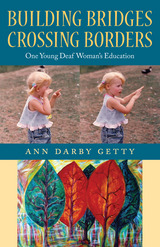 Building Bridges, Crossing Borders: One Young Deaf Woman’s Education
Ann Darby Getty
Gallaudet University Press, 2014 Kyler Daniels was born in 1988 with a profound bilateral hearing loss. Her deafness went undetected for a year since newborn screening for hearing loss was not yet available. Kyler benefited, however, from the great support of her family and a string of excellent professionals in deaf education, including Ann Darby Getty, the author of this shared, experiential story.
As soon as they realized that their daughter was deaf, Kyler’s parents, who were hearing, immediately began to learn sign language. They also engaged Darby, a parent/infant educator employed by the state school for the deaf, to work with Kyler. From the age of 13 months until Kyler’s college graduation 22 years later, Darby was involved in her education and development.
Despite living in a rural area, Kyler enjoyed an array of services, including parent/infant education, sign language interaction/modeling, speech and language therapy, and also a cochlear implant. At the same time that she developed her speech skills, sign language continued to be a critically important facet of her communication. In grade school, she learned with other deaf students, while in high school, she worked successfully in mainstream classrooms with interpreters and notetakers. As a college graduate, gifted artist, and veterinarian’s assistant today, Kyler exemplifies how a balanced approach to deaf education, using all resources at hand, can achieve remarkable results. Her story serves as a model for parents of other deaf children and the professionals who work with them.
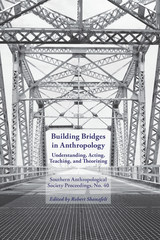 Building Bridges: Southern Anthropological Society Proceedings, no. 40
Robert Shanafelt
University of Tennessee Press, 2012 Building Bridges brings together ten papers—nine of which were presented at the annual meeting of the Southern Anthropological Society (SAS) in Savannah, Georgia, in February of 2010.
The theme of the meeting, “Ports, Hubs and Bridges: Key Links in Anthropological Theory and Practice,” is a reference to the important interconnections found not only within the discipline among the various types of anthropologies, but also between the anthropological professional and those whom anthropologists teach, rely on for information, or otherwise focus on in their research.
The papers in this volume elaborate upon bridges that can be or have been built in theory, pedagogy, and practice, and in a variety of cultural contexts. They are organized in three groups.Part I consists of papers that emphasize theory and conceptual issues; part II is for papers about teaching and practice; and, part III is for papers with an ethnography focus.
Building Character in the American Boy: The Boy Scouts, YMCA, and Their Forerunners, 1870-1920
David Macleod
University of Wisconsin Press, 2004 Among established American institutions, few have been more successful or paradoxical than the Boy Scouts of America. David Macleod traces the social history of America in this scholarly account of the origins of the Boy Scouts and other character-building agencies, through which adults tried to restructure middle-class boyhood.
Back in print; First paperback edition.
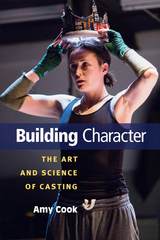 Building Character: The Art and Science of Casting
Amy Cook
University of Michigan Press, 2018 What can we learn about how we understand each other and ourselves by examining the casting we find on stage and film—the casting we find perfect and the casting we find wrong? Building Character examines how the process of “casting” an actor in a part creates a character and how this can be usefully understood through deploying theories from the cognitive sciences. A casting director may match the perceived qualities of an actor with the perceived qualities of the character, but the combination is also synergistic; casting a character creates qualities. While casting directors do this professionally, all of us do this when we make sense of the people around us. This book argues that we build the characters of others from a sea of stimuli and that the process of watching actors take on roles improves our ability to “cast” those roles in our daily lives. Amy Cook examines the visible celebrity casting, such as Robert Downey Jr. as Ironman or Judi Dench as Bond’s M, the political casting of one candidate as “presidential” and another as “weak,” the miscasting of racial profiling and sexual assault, and the counter casting that results when actors and characters are not where or who we expect.
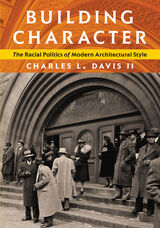 Building Character: The Racial Politics of Modern Architectural Style
Charles L. Davis II
University of Pittsburgh Press, 2019
Winner, 2021 CAAA Charles Rufus Morey Book Award
Winner, 2021 On the Brinck Book Award
Shortlist, 2020 MSA First Book Prize
In the nineteenth-century paradigm of architectural organicism, the notion that buildings possessed character provided architects with a lens for relating the buildings they designed to the populations they served. Advances in scientific race theory enabled designers to think of “race” and “style” as manifestations of natural law: just as biological processes seemed to inherently regulate the racial characters that made humans a perfect fit for their geographical contexts, architectural characters became a rational product of design. Parallels between racial and architectural characters provided a rationalist model of design that fashioned some of the most influential national building styles of the past, from the pioneering concepts of French structural rationalism and German tectonic theory to the nationalist associations of the Chicago Style, the Prairie Style, and the International Style. In Building Character, Charles Davis traces the racial charge of the architectural writings of five modern theorists—Eugene Emmanuel Viollet-le-Duc, Gottfried Semper, Louis Sullivan, Frank Lloyd Wright, and William Lescaze—to highlight the social, political, and historical significance of the spatial, structural, and ornamental elements of modern architectural styles.
Building Community Choirs in the Twenty-First Century: Re-imagining Identity through Singing in Northern Ireland
Sarah Jane Gibson
Intellect Books, 2023 An examination of how community choirs in Northern Ireland are attempting to transcend sectarian boundaries.
Building Community Choirs explores the under-researched practice of community choral singing in Northern Ireland. Sarah-Jane Gibson conducted ethnographic research with five choirs in various locations over the course of five years and illustrates how choirs reimagine identity through the ways they organize, rehearse, and perform. By actively rethinking conceptions of identities within their groups, Gibson’s study shows how gender, age, religious faith, and ethnic diversity can both influence structures of community in the region and be influenced by them.
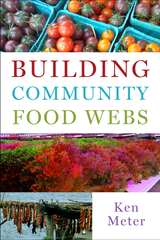 Building Community Food Webs
Ken Meter
Island Press, 2021 Our current food system has decimated rural communities and confined the choices of urban consumers. Even while America continues to ramp up farm production to astounding levels, net farm income is now lower than at the onset of the Great Depression, and one out of every eight Americans faces hunger. But a healthier and more equitable food system is possible. In Building Community Food Webs, Ken Meter shows how grassroots food and farming leaders across the U.S. are tackling these challenges by constructing civic networks. Overturning extractive economic structures, these inspired leaders are engaging low-income residents, farmers, and local organizations in their quest to build stronger communities.
Community food webs strive to build health, wealth, capacity, and connection. Their essential element is building greater respect and mutual trust, so community members can more effectively empower themselves and address local challenges. Farmers and researchers may convene to improve farming practices collaboratively. Health clinics help clients grow food for themselves and attain better health. Food banks engage their customers to challenge the root causes of poverty. Municipalities invest large sums to protect farmland from development. Developers forge links among local businesses to strengthen economic trade. Leaders in communities marginalized by our current food system are charting a new path forward.
Building Community Food Webs captures the essence of these efforts, underway in diverse places including Montana, Hawai‘i, Vermont, Arizona, Colorado, Indiana, and Minnesota. Addressing challenges as well as opportunities, Meter offers pragmatic insights for community food leaders and other grassroots activists alike.
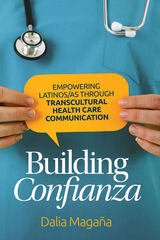 Building Confianza: Empowering Latinos/as Through Transcultural Health Care Communication
Dalia Magaña
Ohio State University Press, 2021 Dalia Magaña’s Building Confianza demonstrates that effective doctor-patient communication in Spanish requires that practitioners not only have knowledge of Spanish but also have transcultural knowledge of Latino/a values and language use. Using linguistic analysis to study real-time doctor-patient interactions, Magaña probes the role of interpersonal language and transcultural competency in improving patient-centered health care with Spanish-speaking Latino/as, highlighting successful examples of how Latino/a cultural constructs of confianza (trust), familismo (family-orientation), personalismo (friendliness), respeto (respect), and simpatía (kindness) can be deployed in medical interactions. She proposes that transcultural interactions entail knowing patients’ cultural values and being mindful about creating an interpersonal connection with patients through small talk, humor, self-disclosure, politeness, and informal language, including language switching and culturally appropriate use of colloquialisms. By explicitly articulating discourse strategies doctors can use in communicating with Spanish-speaking patients, Building Confianza will aid both students and providers in connecting to communities of Spanish speakers in health care contexts and advancing transcultural competence.
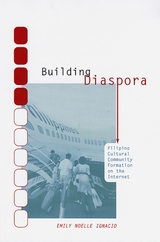 Building Diaspora: Filipino Cultural Community Formation on the Internet
Ignacio, Emily N
Rutgers University Press, 2004 The dramatic growth of the Internet in recent years has provided opportunities for a host of relationships and communities—forged across great distances and even time—that would have seemed unimaginable only a short while ago. In Building Diaspora, Emily Noelle Ignacio explores how Filipinos have used these subtle, cyber, but very real social connections to construct and reinforce a sense of national, ethnic, and racial identity with distant others. Through an extensive analysis of newsgroup debates, listserves, and website postings, she illustrates the significant ways that computer-mediated communication has contributed to solidifying what can credibly be called a Filipino diaspora. Lively cyber-discussions on topics including Eurocentrism, Orientalism, patriarchy, gender issues, language, and "mail-order-brides" have helped Filipinos better understand and articulate their postcolonial situation as well as their relationship with other national and ethnic communities around the world. Significant attention is given to the complicated history of Philippine-American relations, including the ways Filipinos are racialized as a result of their political and economic subjugation to U.S. interests. As Filipinos and many other ethnic groups continue to migrate globally, Building Diaspora makes an important contribution to our changing understanding of "homeland." The author makes the powerful argument that while home is being further removed from geographic place, it is being increasingly territorialized in space.
Building Domestic Liberty: Charlotte Perkins Gilman's Architectural Feminism
Polly Wynn Allen
University of Massachusetts Press, 1988 Building Domestic Liberty offers a critical and admiring analysis of feminist philosopher Charlotte Perkins Gilman (1860-1935). Polly Allen examines Gilman's approach to architecture, landscape, and neighborhood design and discusses Gilman's case against prevailing household design and looks at her philosophy of world improvement.
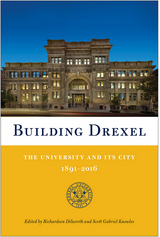 Building Drexel: The University and Its City 1891-2016
Richardson Dilworth
Temple University Press, 2016 Published in conjunction with Drexel University’s 125th anniversary, Building Drexel chronicles the founding of the university by Anthony J. Drexel through to the present day. The editors and contributors create a prismatic discussion of the university and its evolution. Richly illustrated chapters cover the architectural history of notable Drexel buildings; the role of Drexel in Philadelphia’s modern history; its Greek life; sports—particularly Drexel’s history in the Big 5; and each of the university’s schools and colleges. There is a history of the medical college and law school, plus the creation of new schools such as those of biomedical engineering, science and health systems. Building Drexel also documents the civil rights history of Drexel and its urban planning history in relation to the racially diverse Powelton Village and Mantua neighborhoods it borders. This commemorative volume shows the development of the university both in the city and in the world. Contributors include: Lloyd Ackert, Cordelia Frances Biddle, Paula Marantz Cohen, Donna Marie De Carolis, Roger Dennis, Gloria Donnelly, Kevin D. Egan, Alissa Falcone, David Fenske, John A. Fry, Stephen F. Gambescia, Marla J. Gold, Charles Haas, Kathy Harvatt, Daniel Johnson, Jeannine Keefer, Larry Keiser, Michael Kelley, Jason Ludwig, Jonson Miller, Julie Mostov, Danuta A. Nitecki, Anthony M. Noce, Steven J. Peitzman, David Raizman, Tiago Saraiva, Amy E. Slaton, Nathaniel Stanton, Virginia Theerman, Laura Valenti, James Wolfinger, Eric A. Zillmer, and the editors.
|
|


